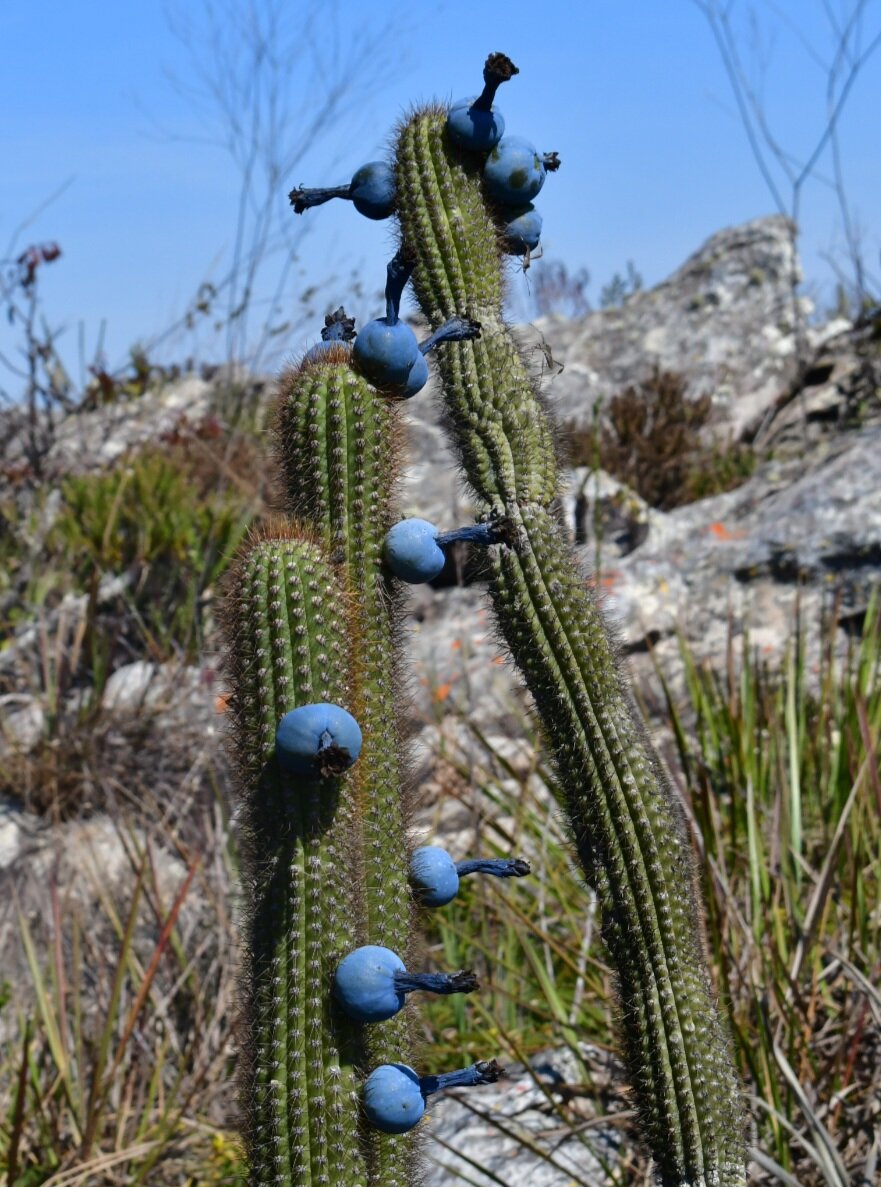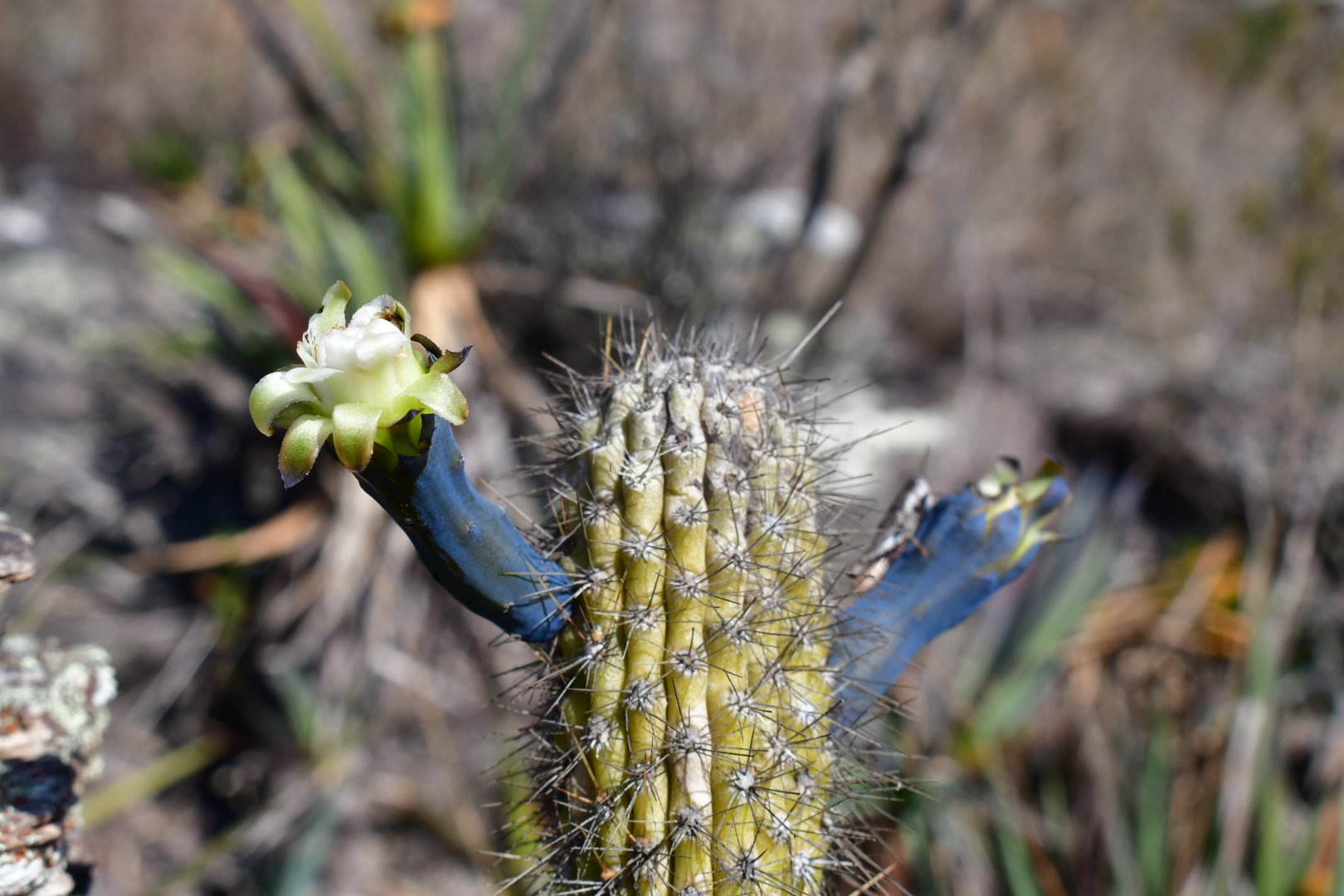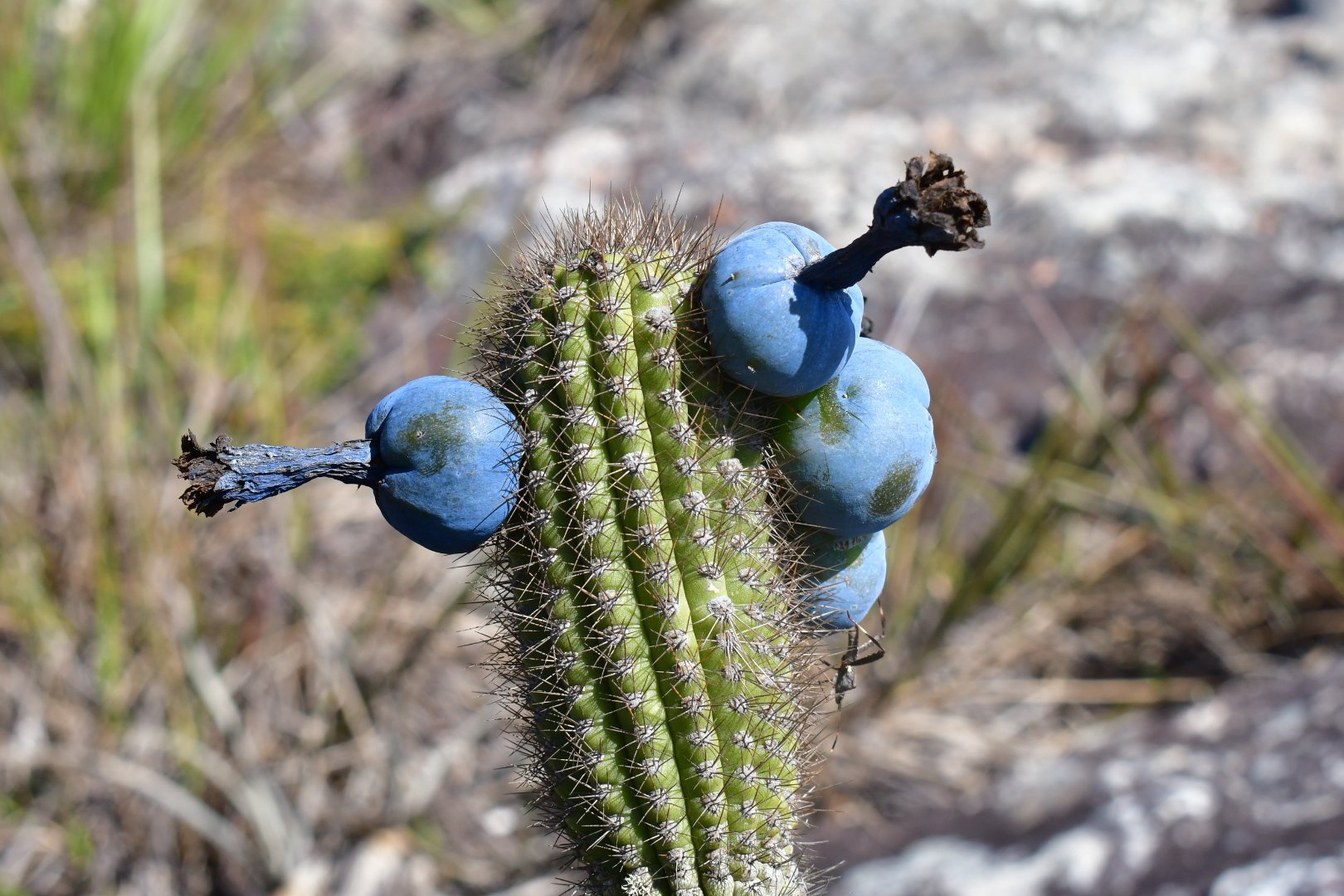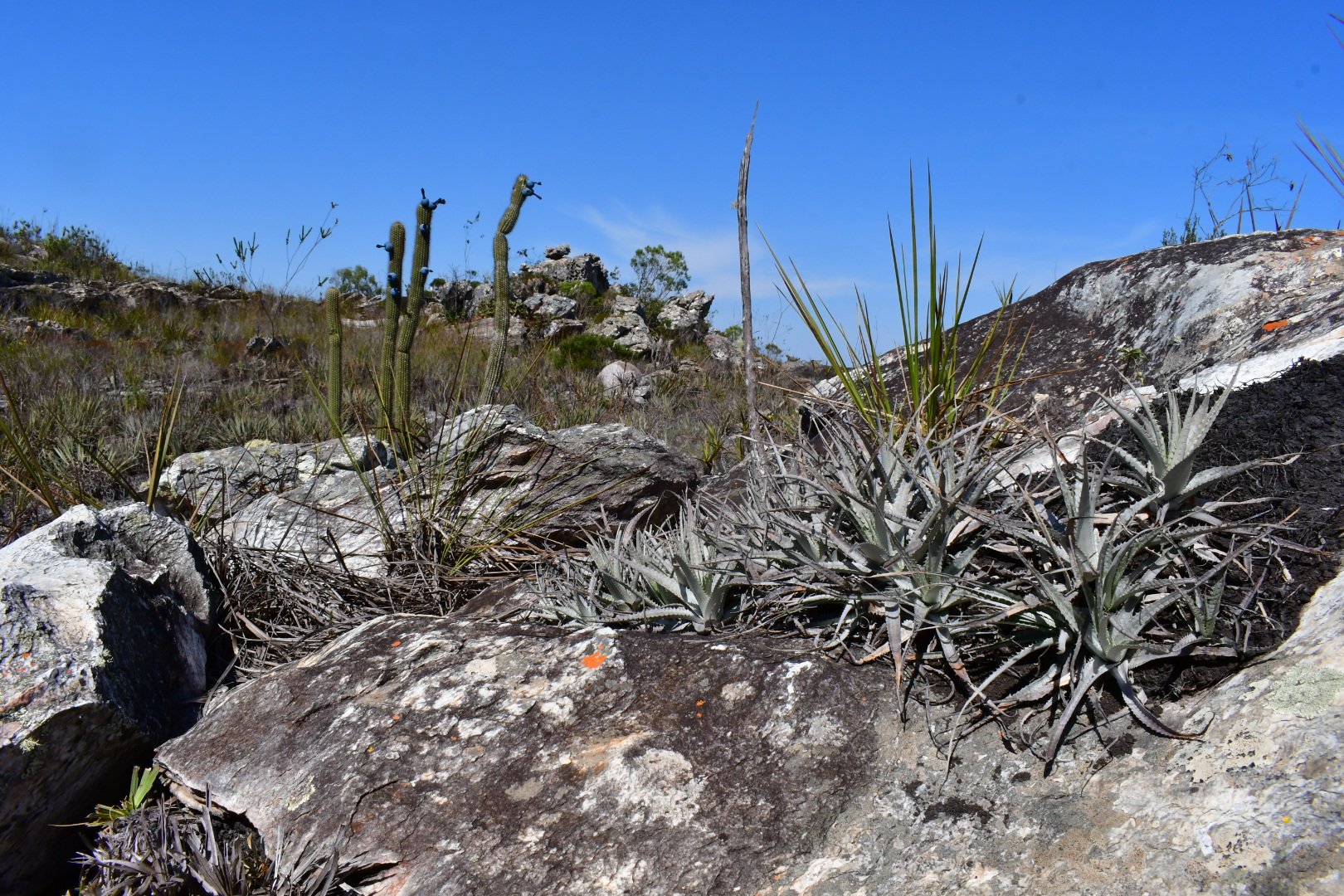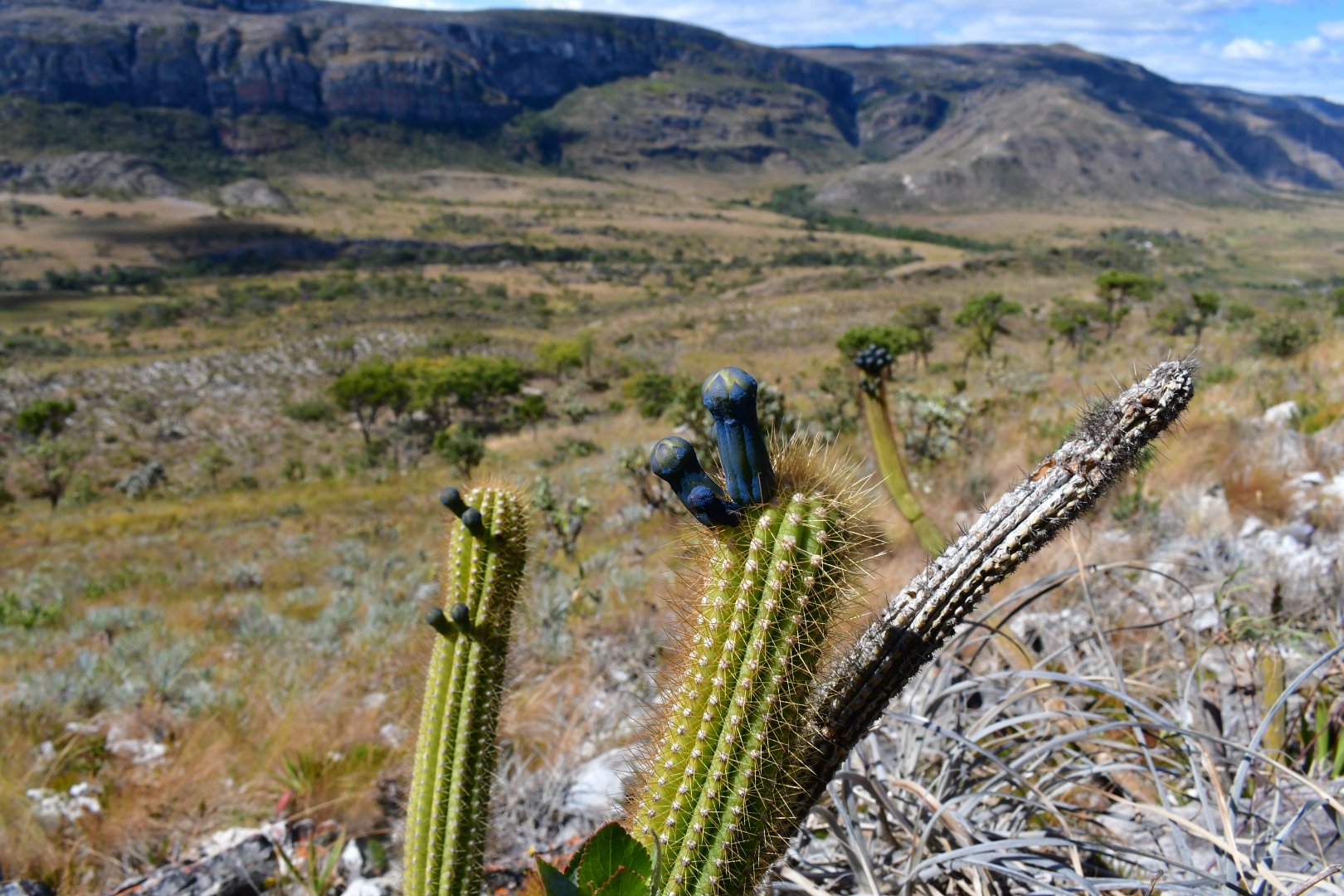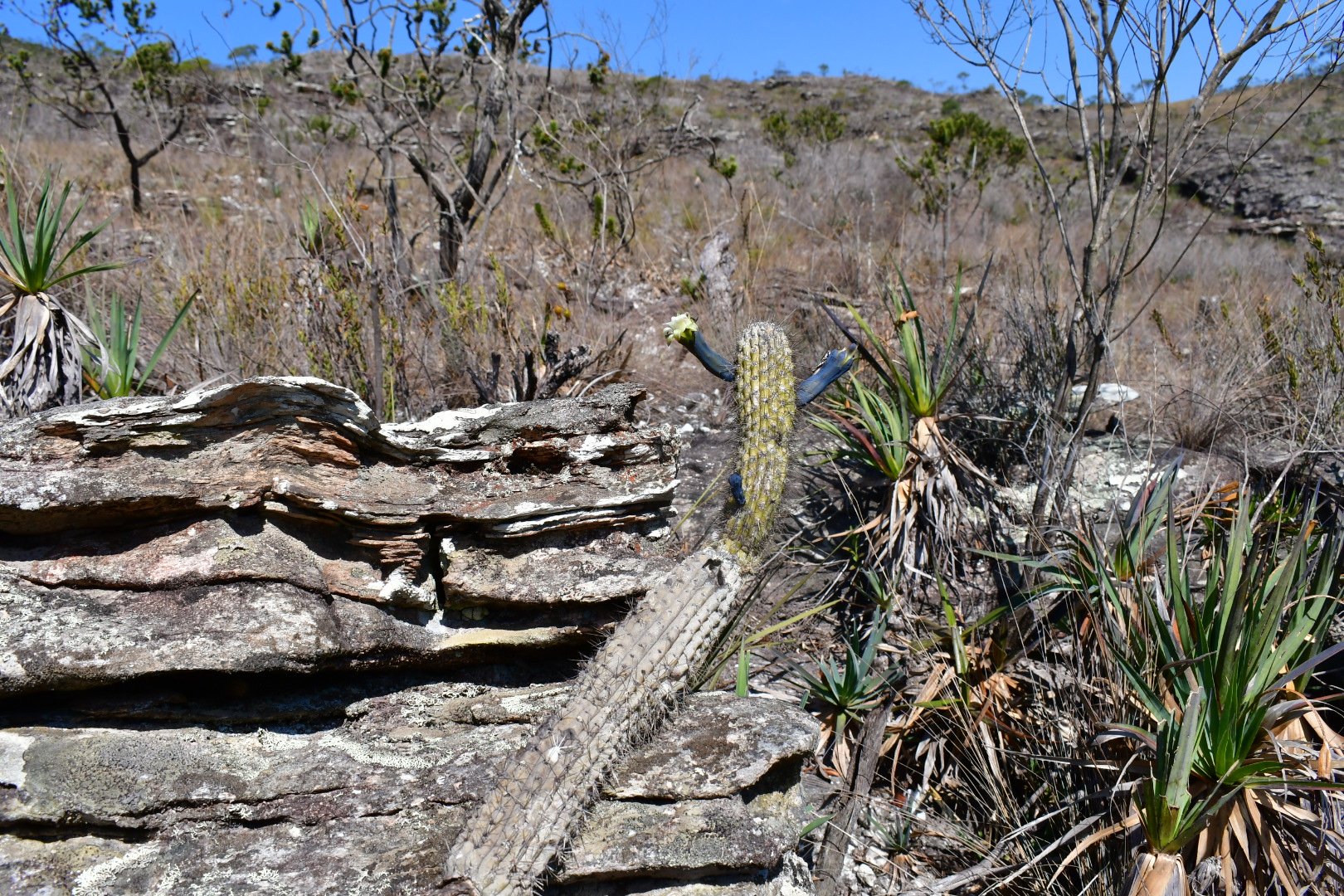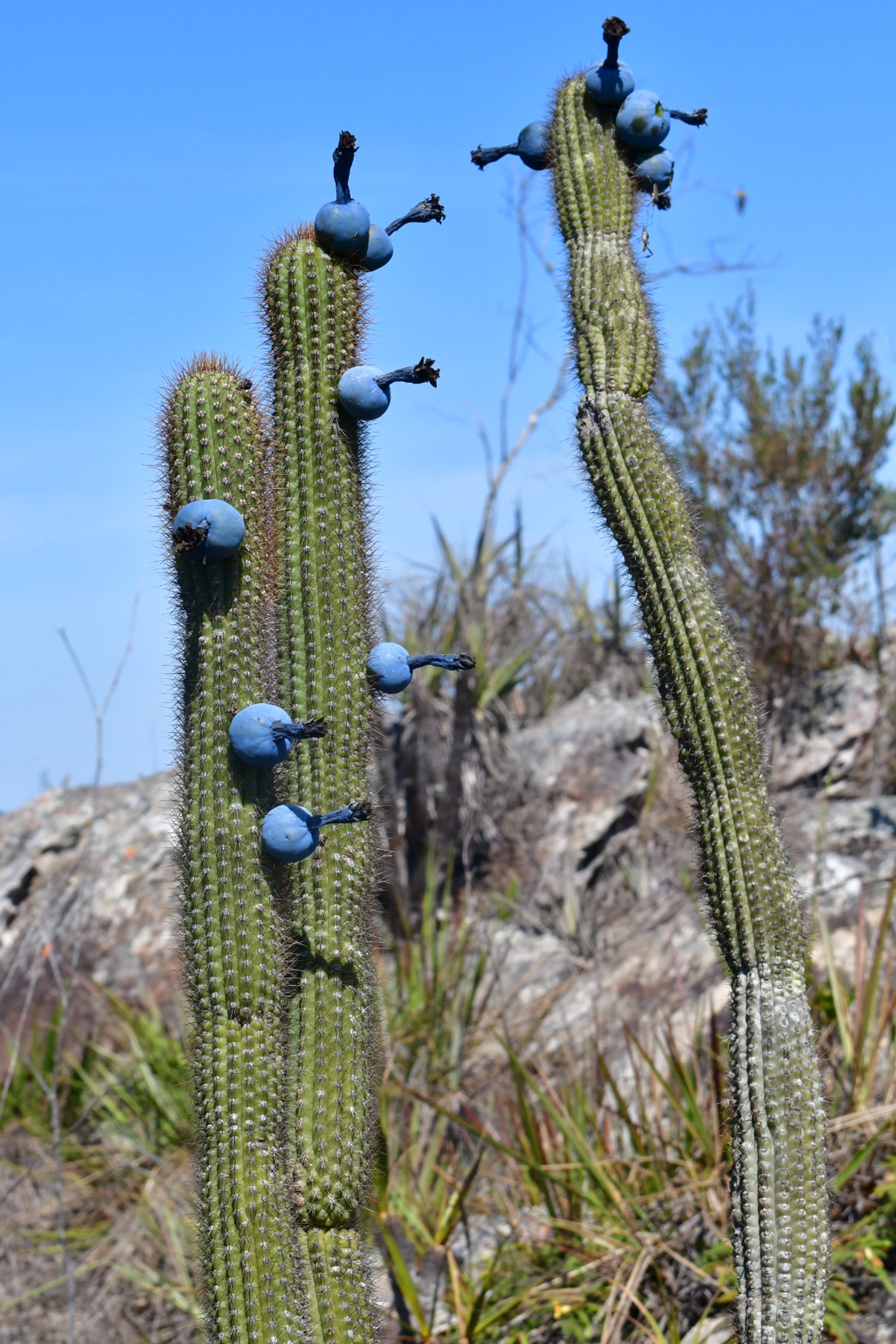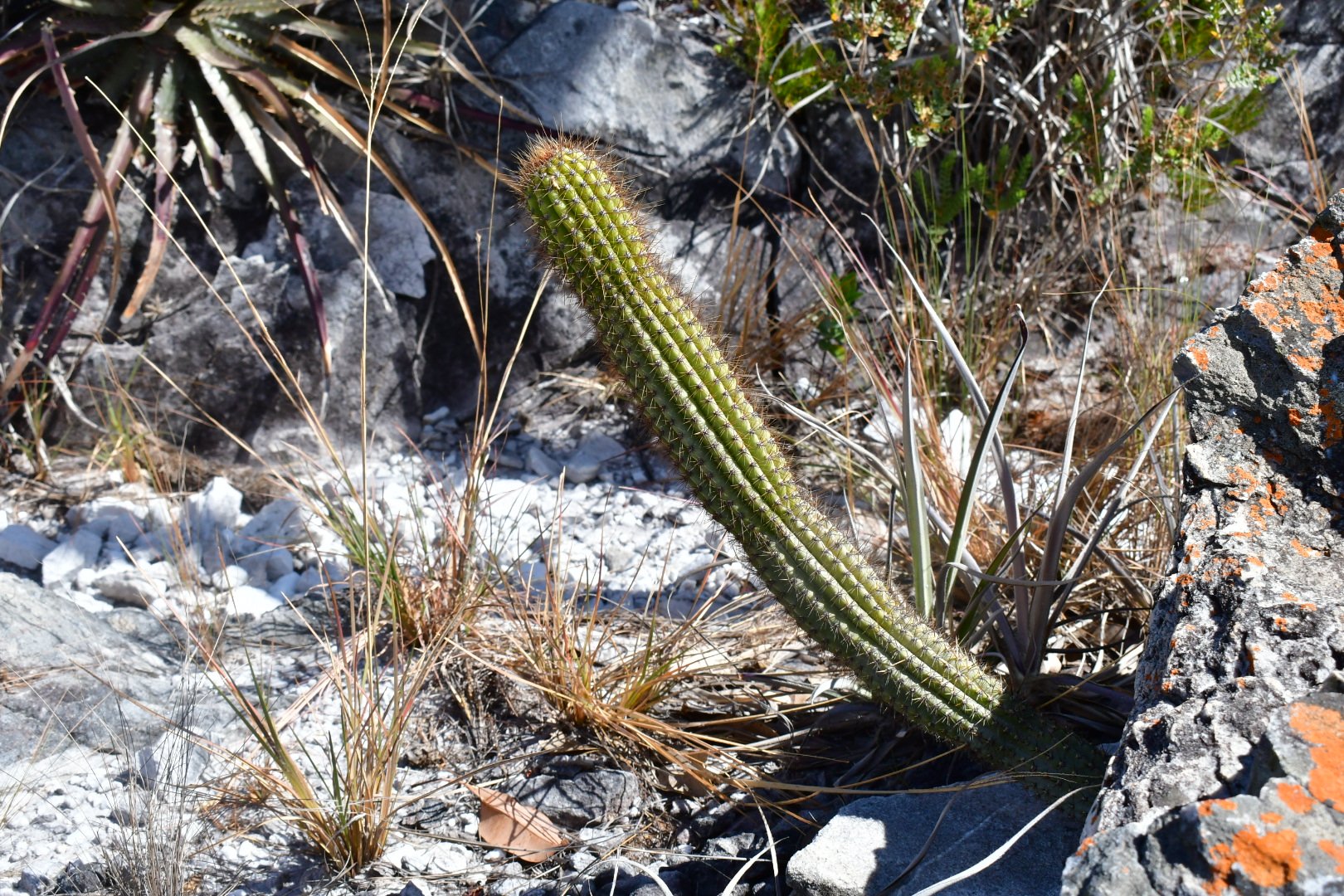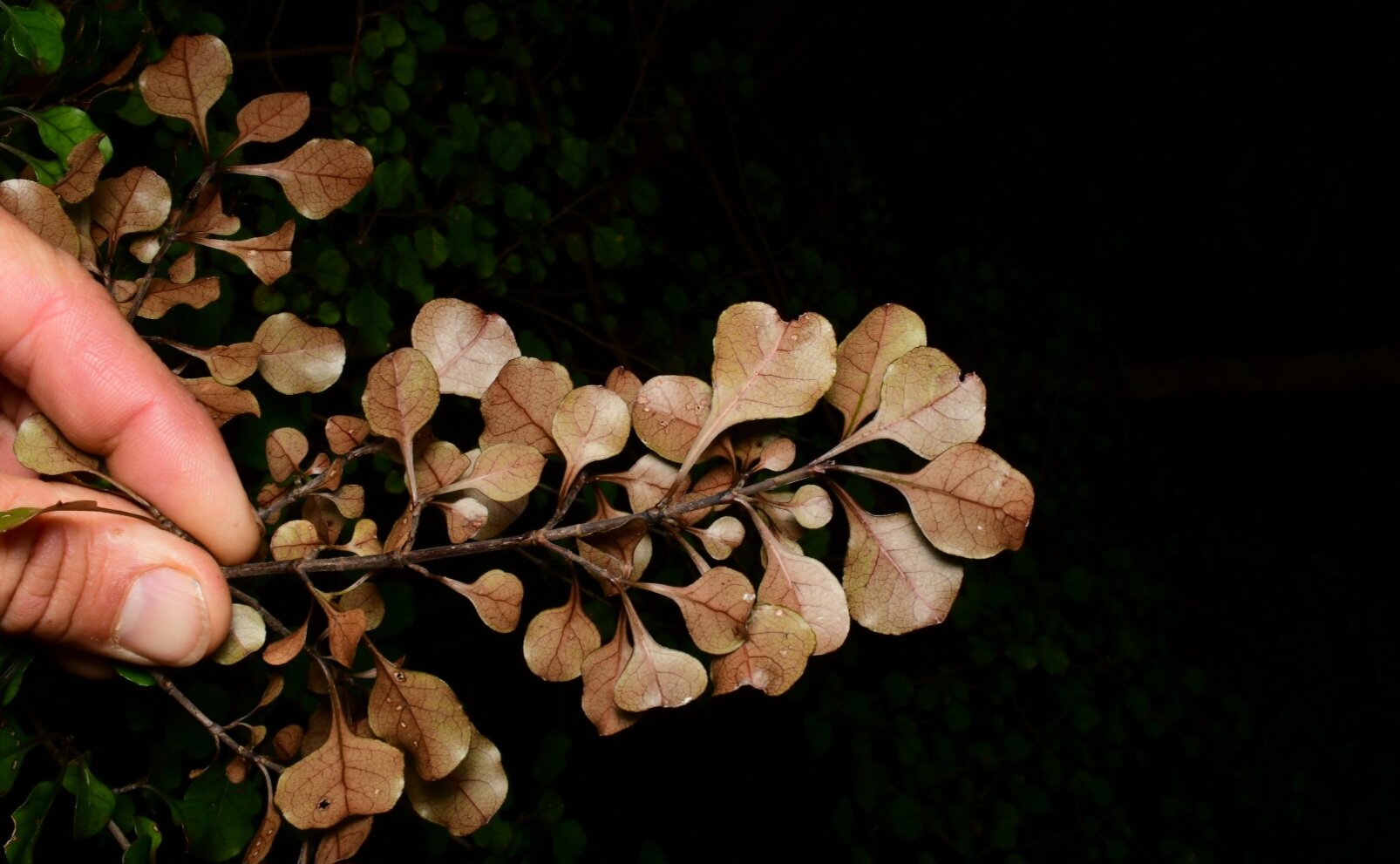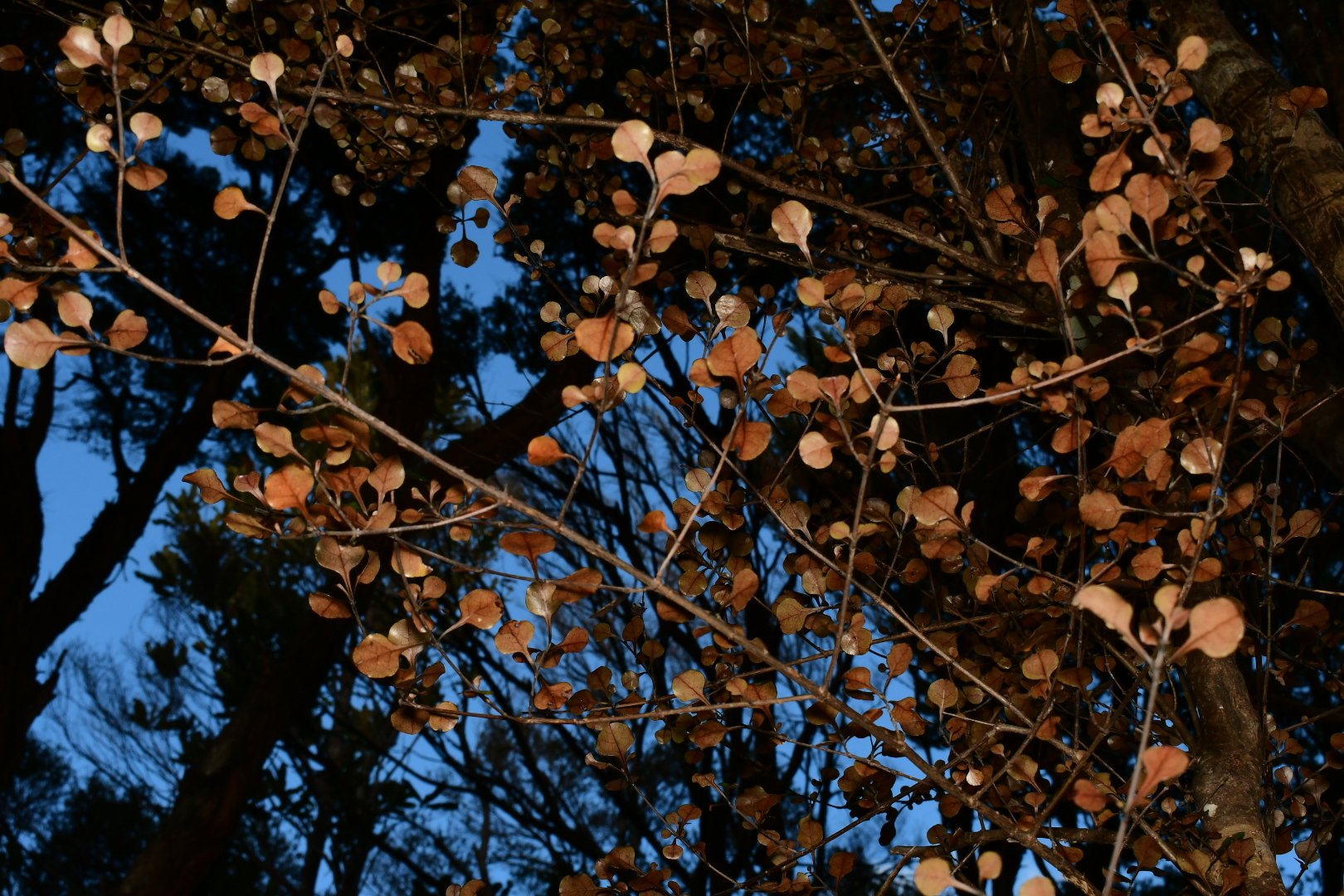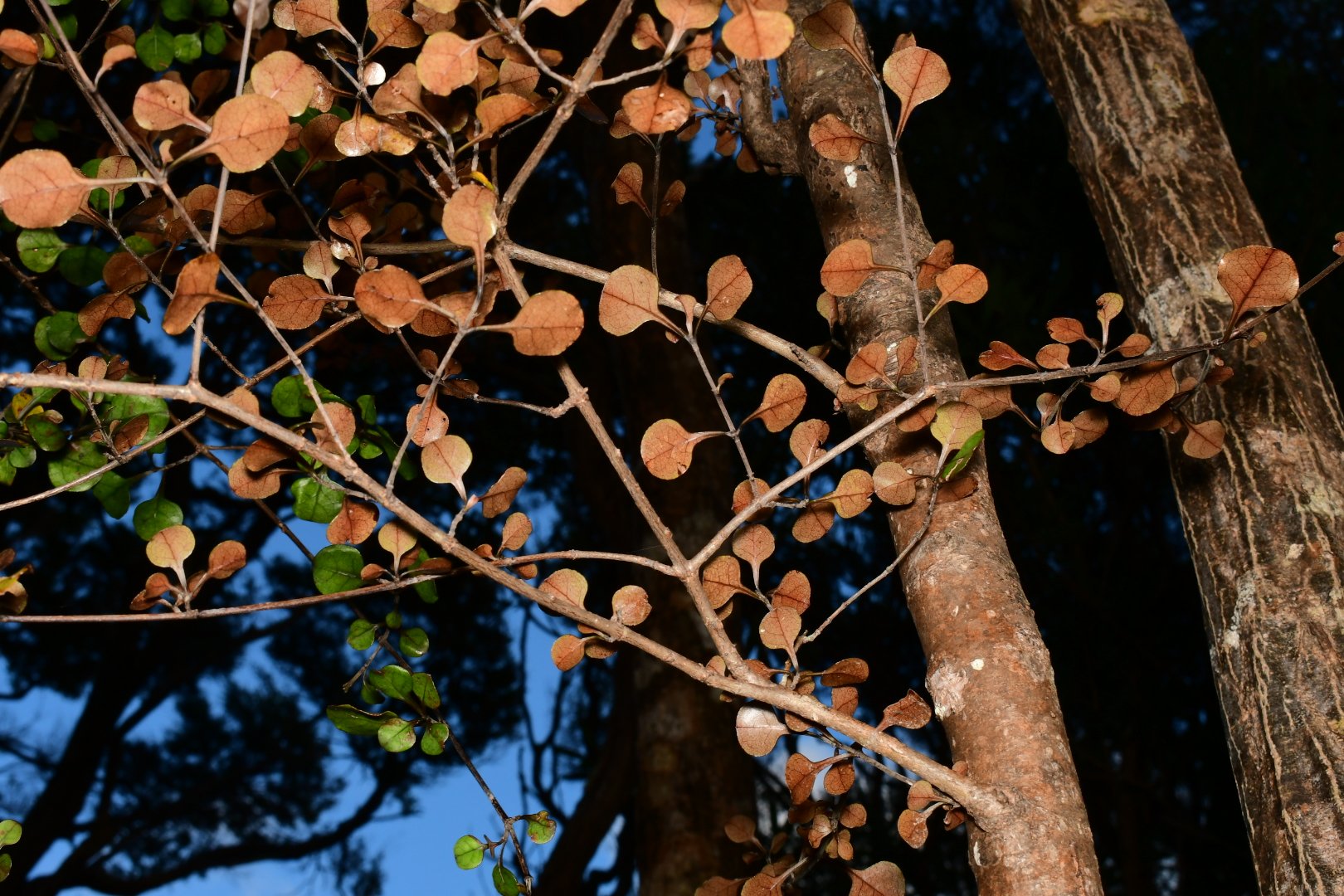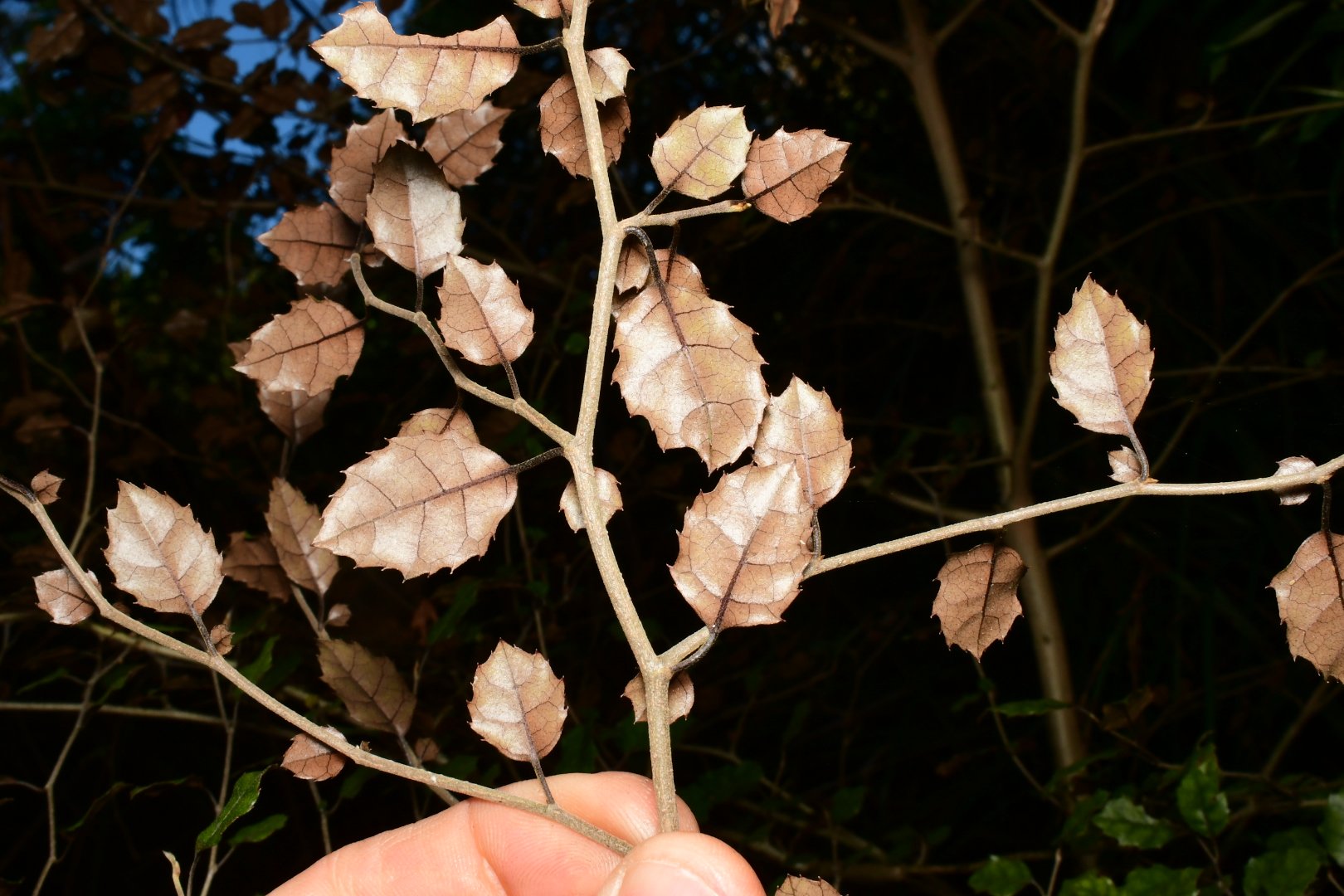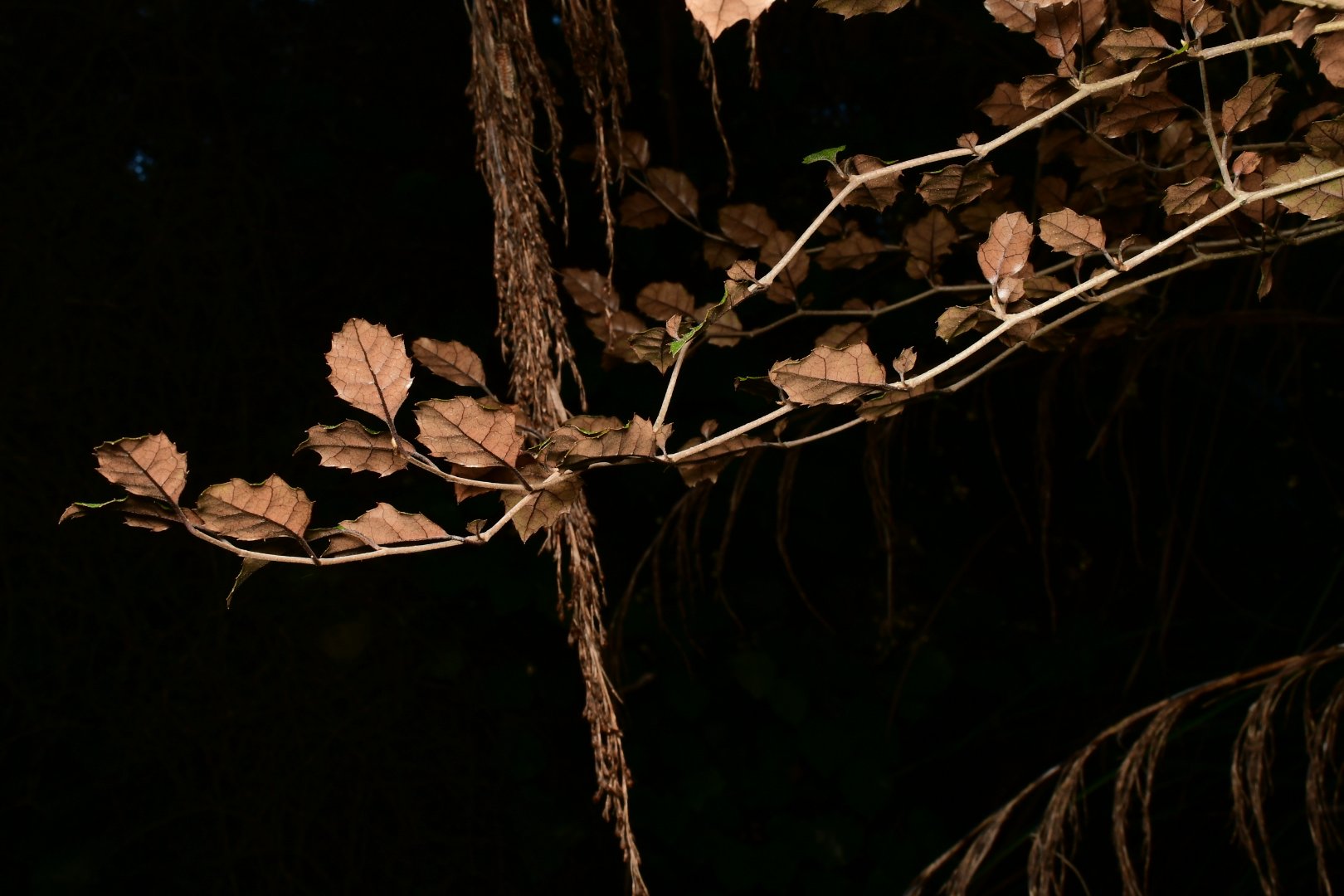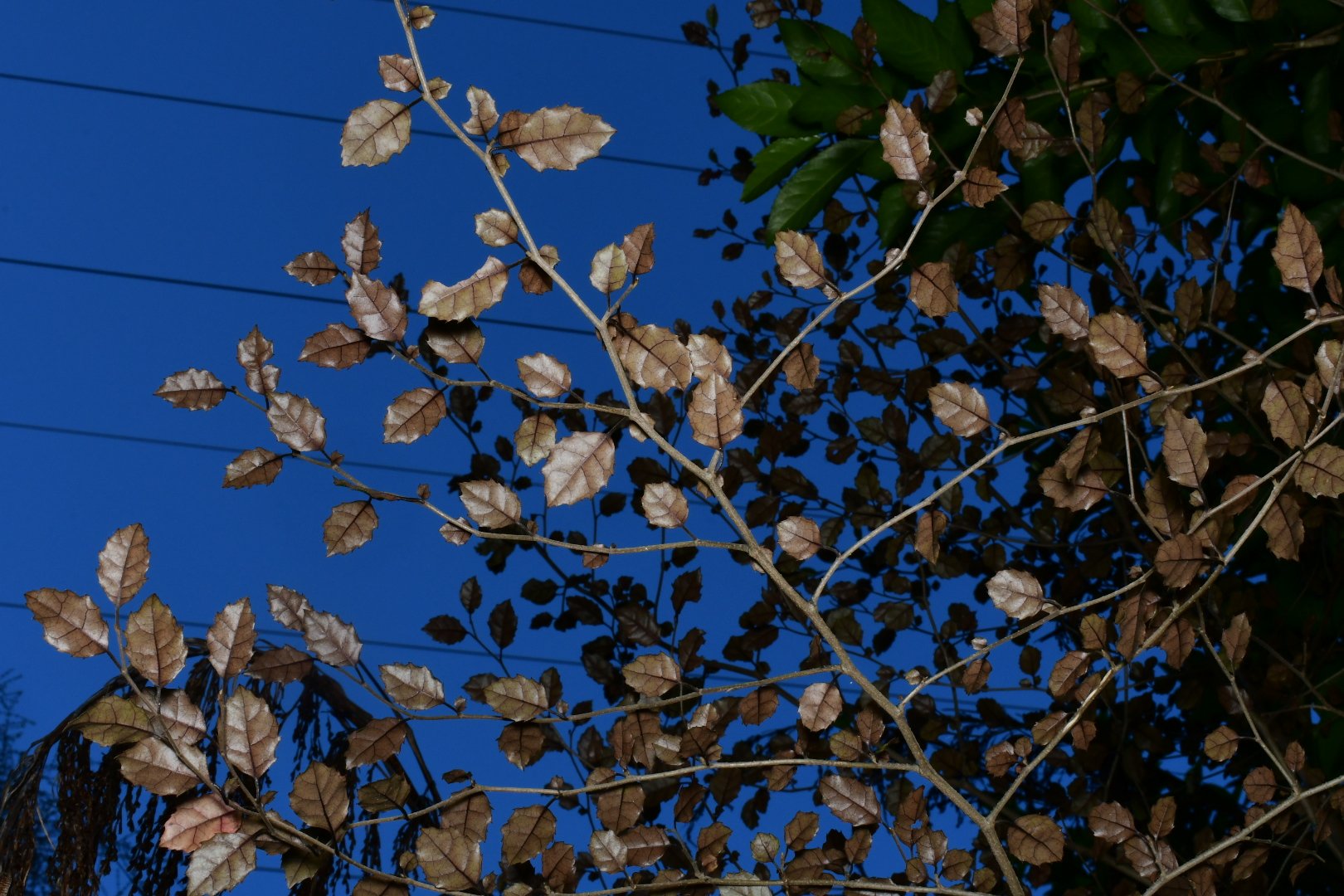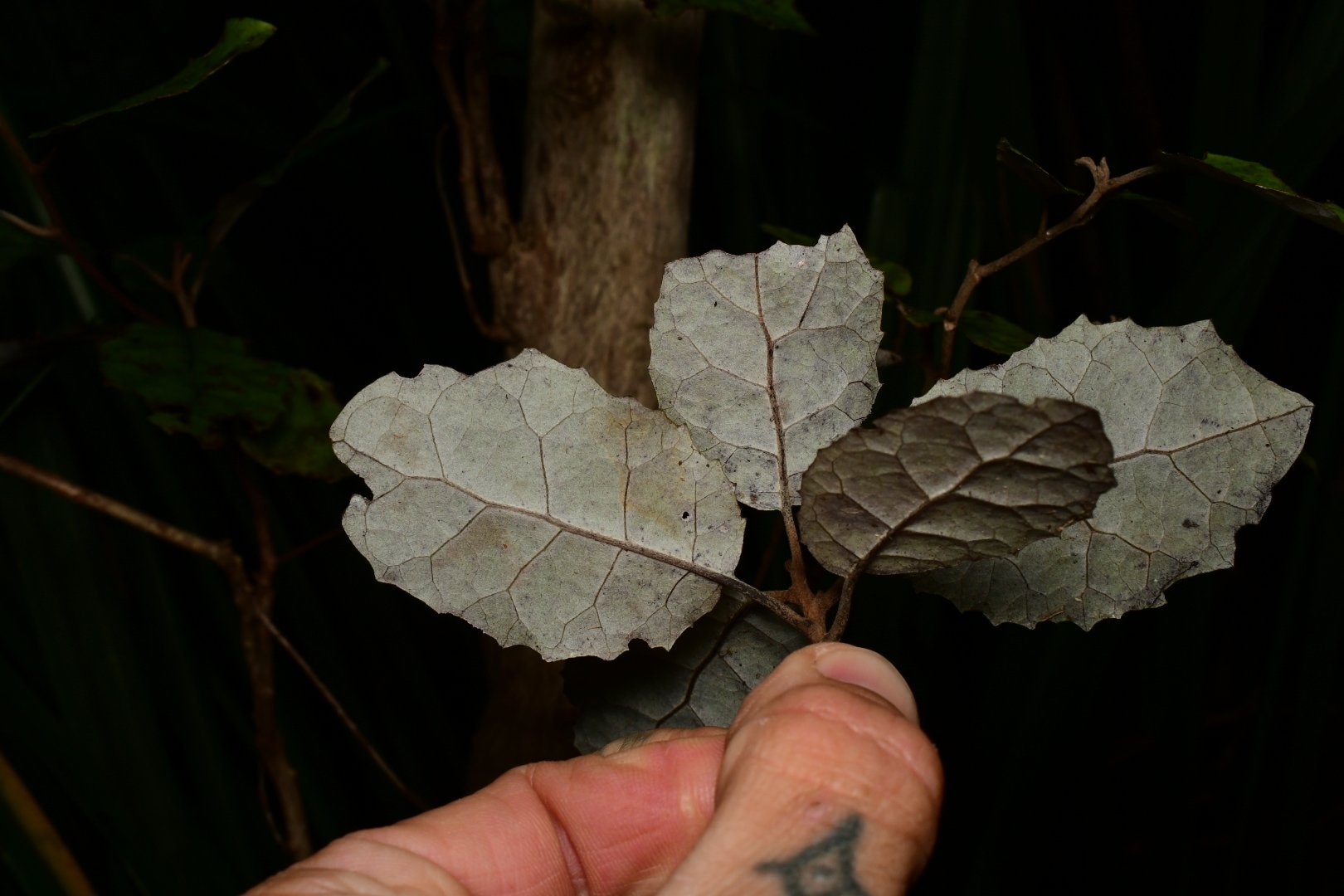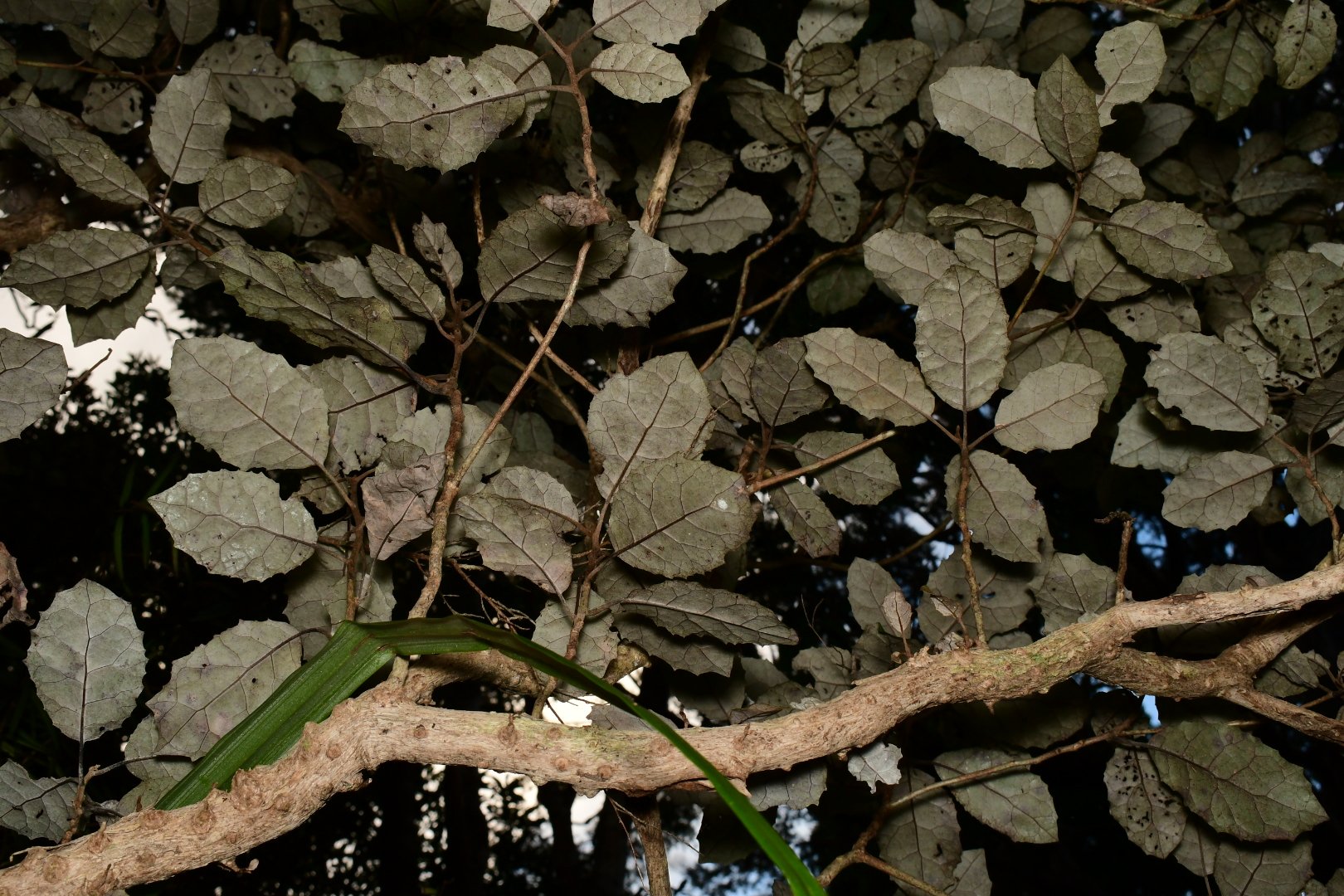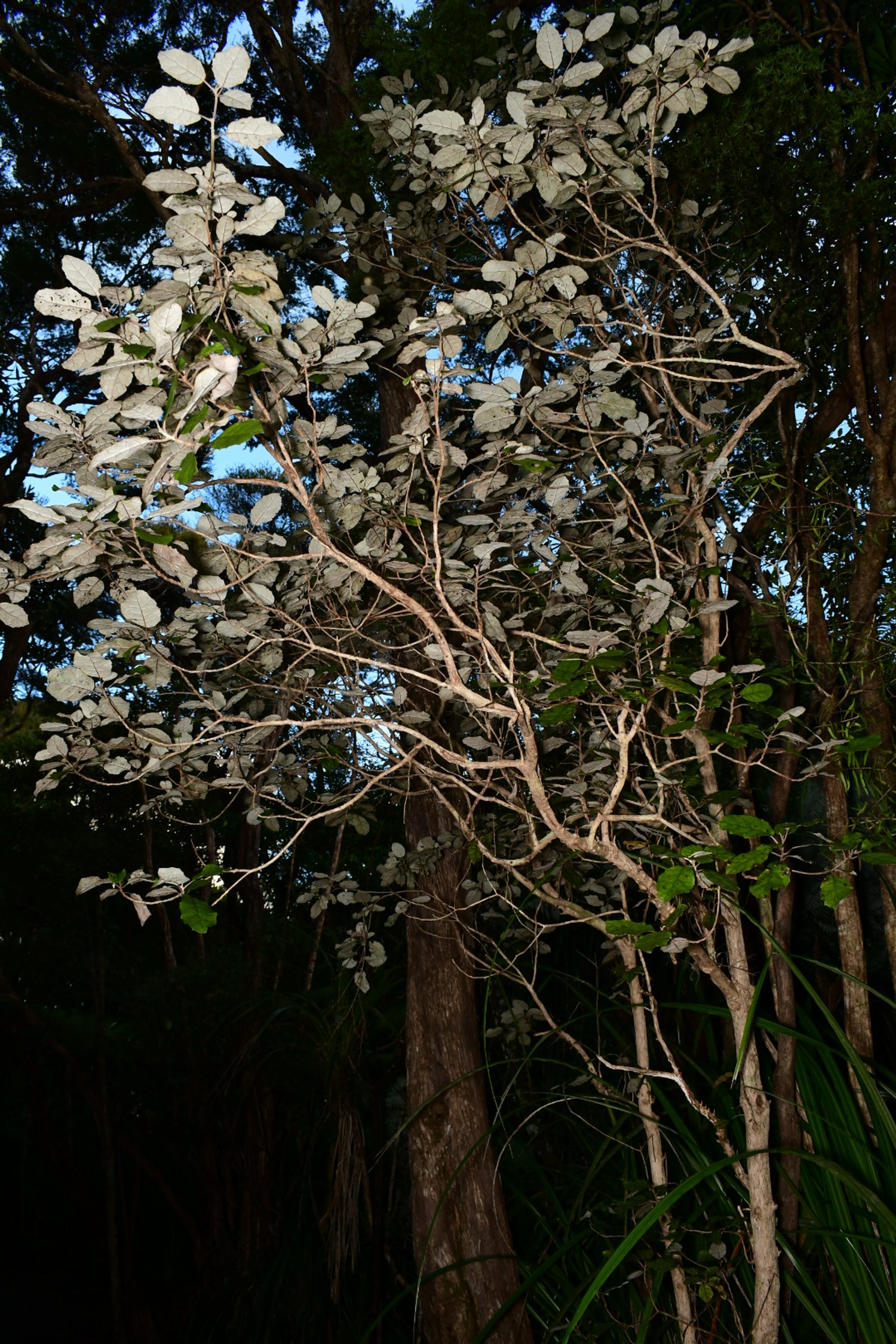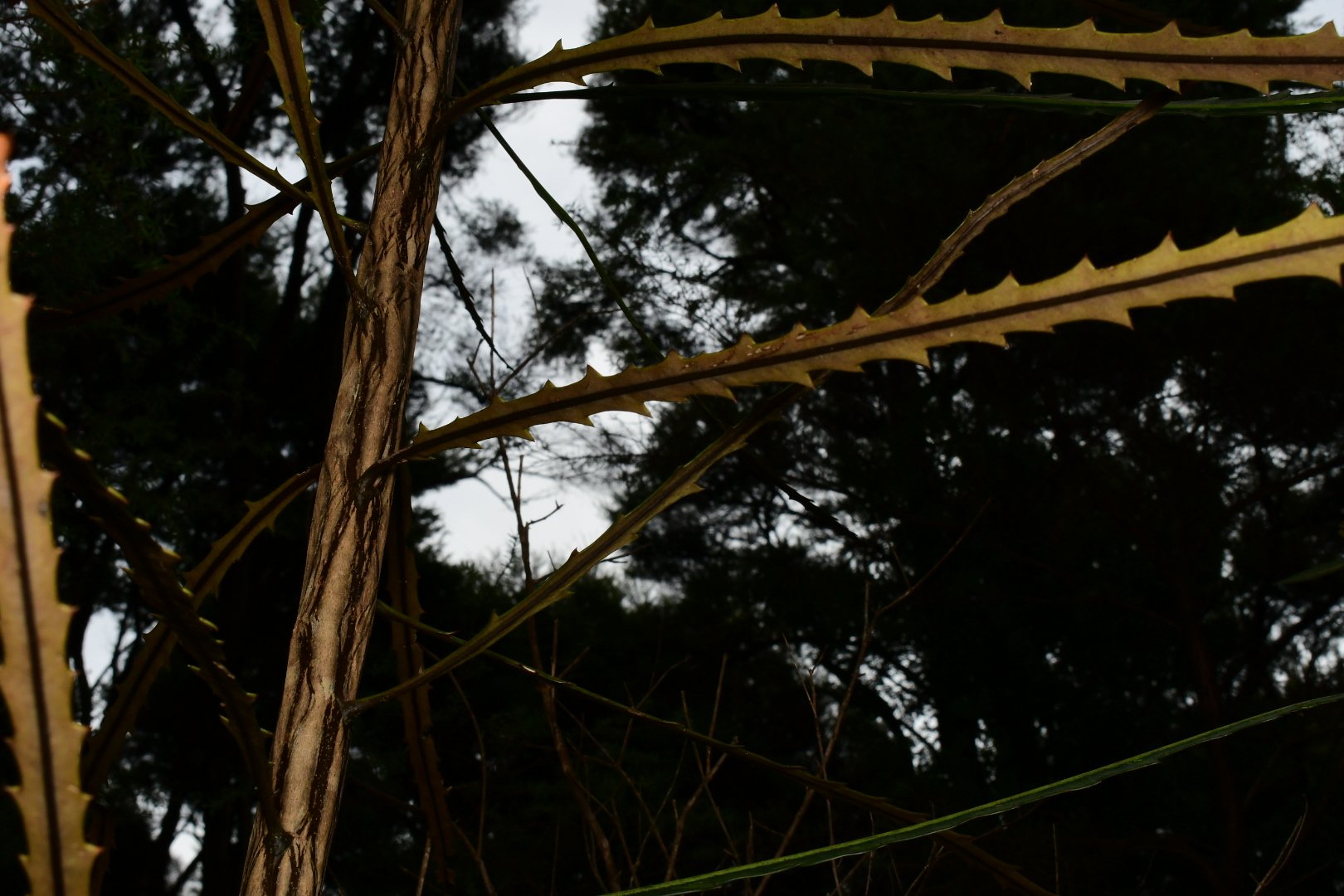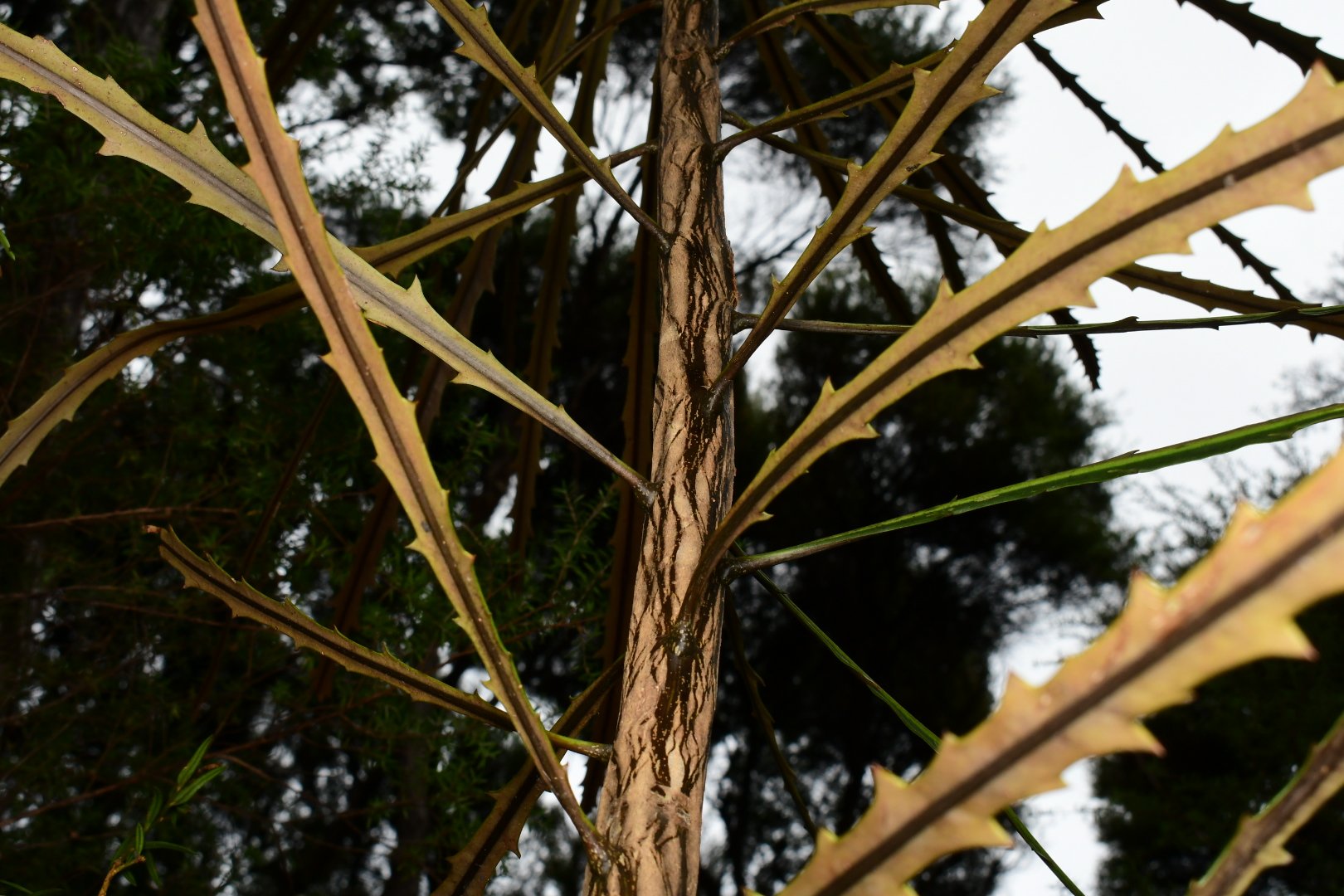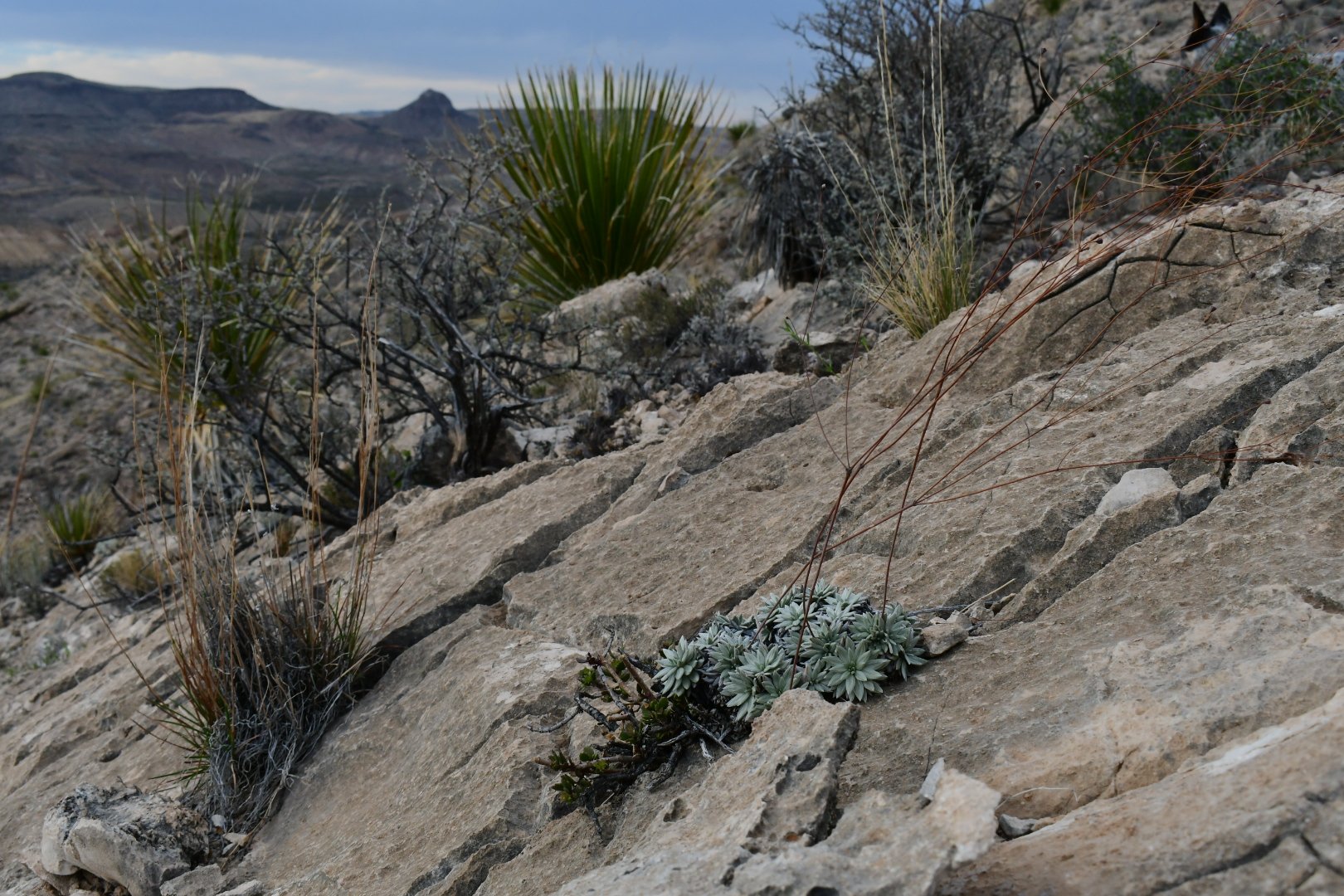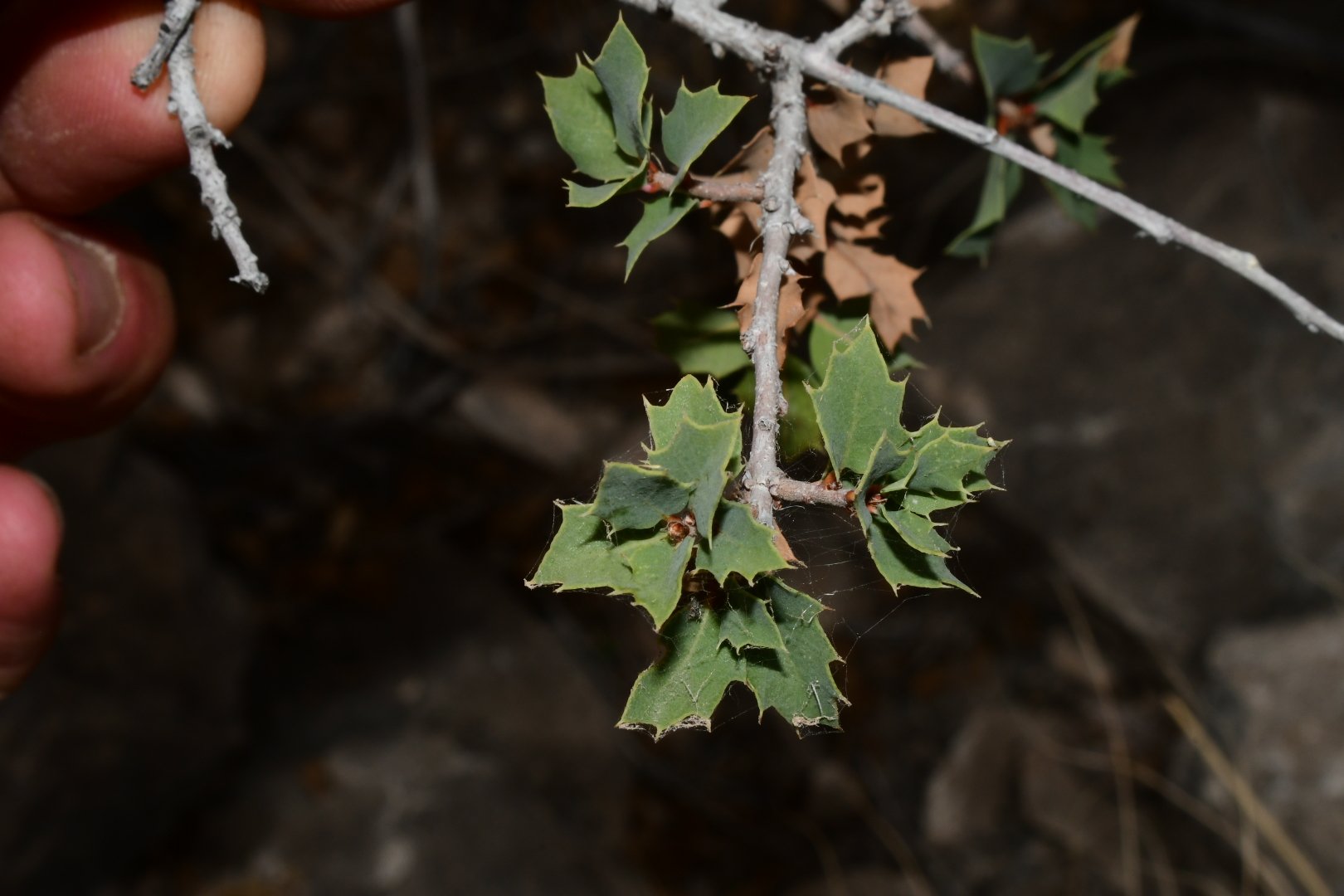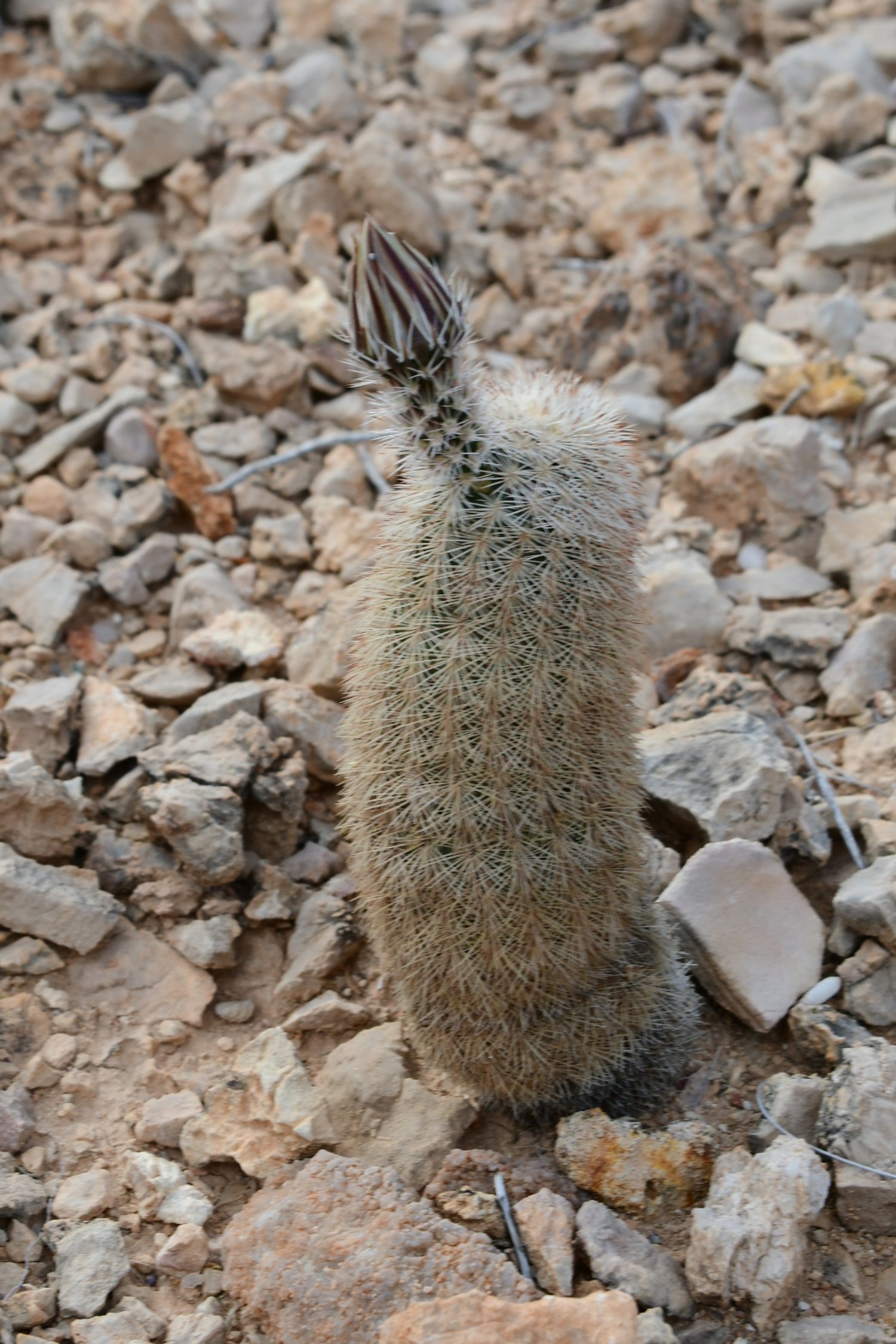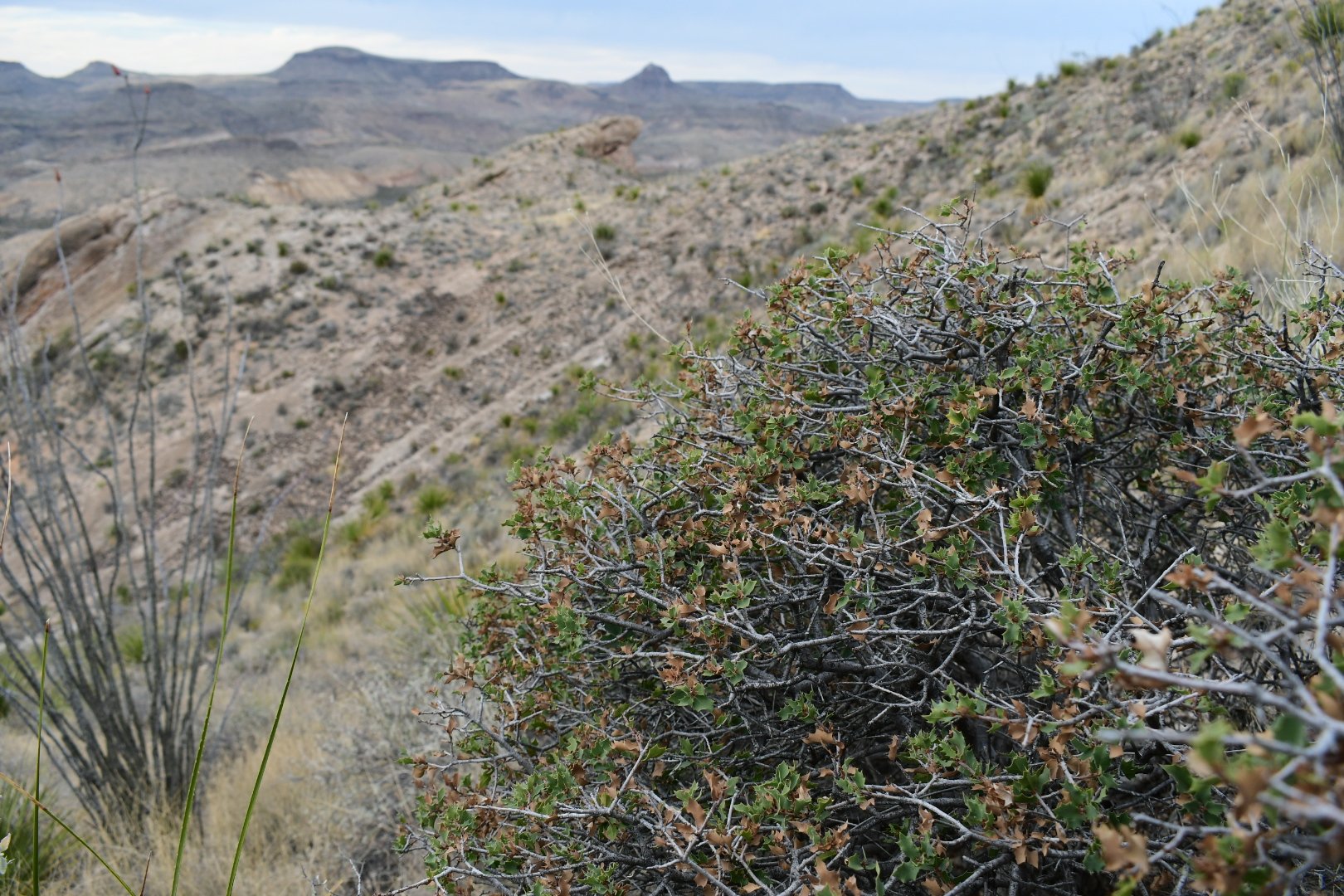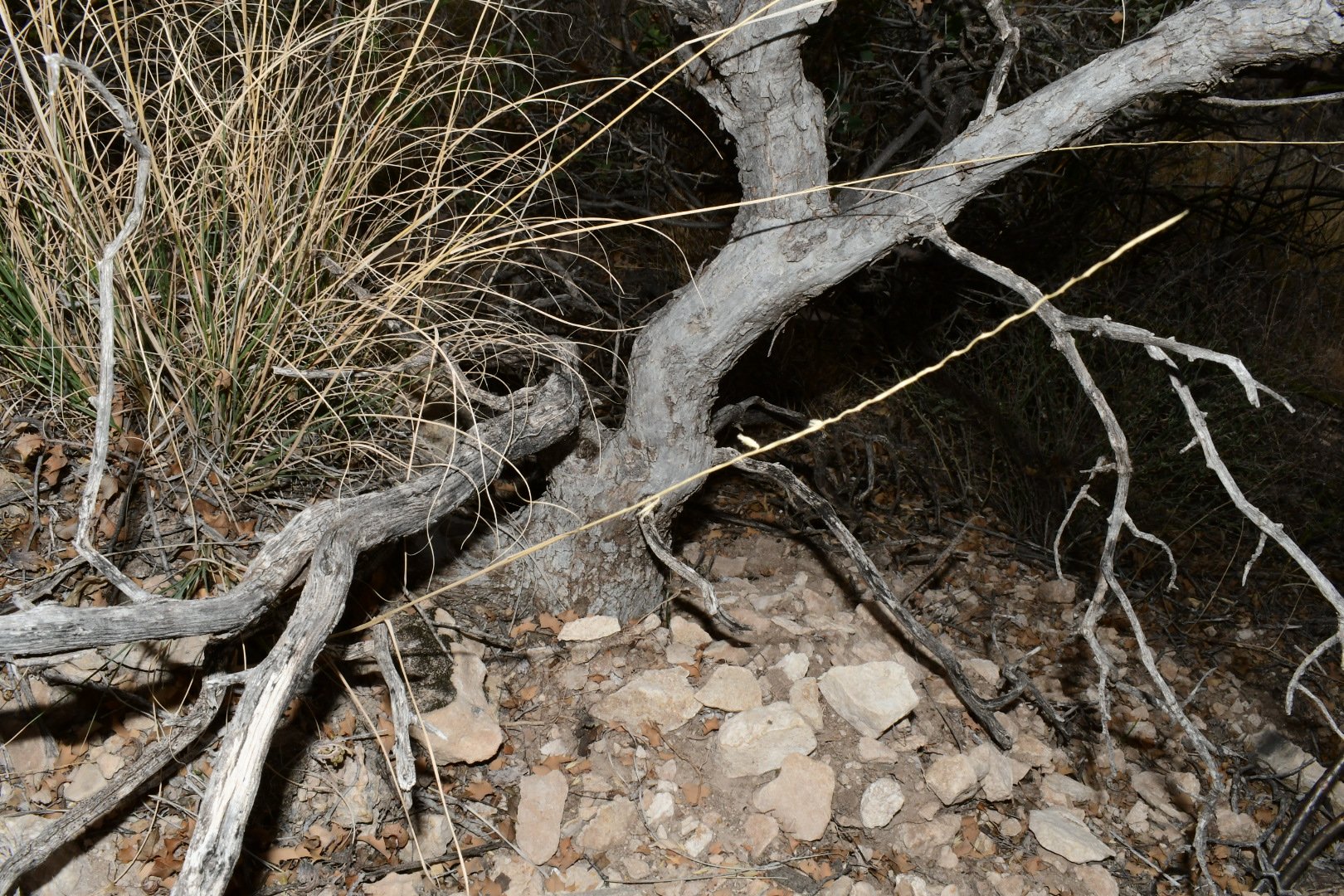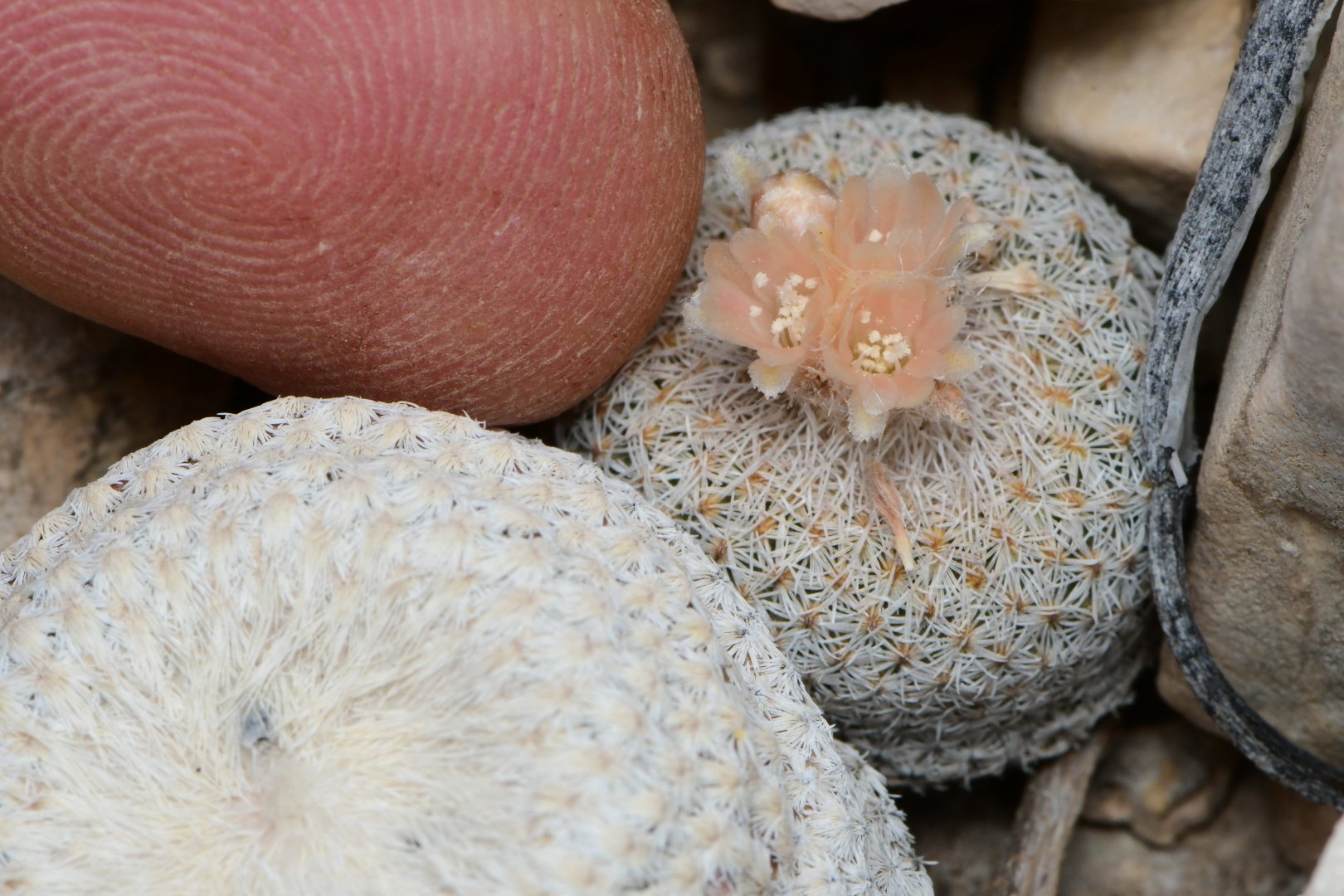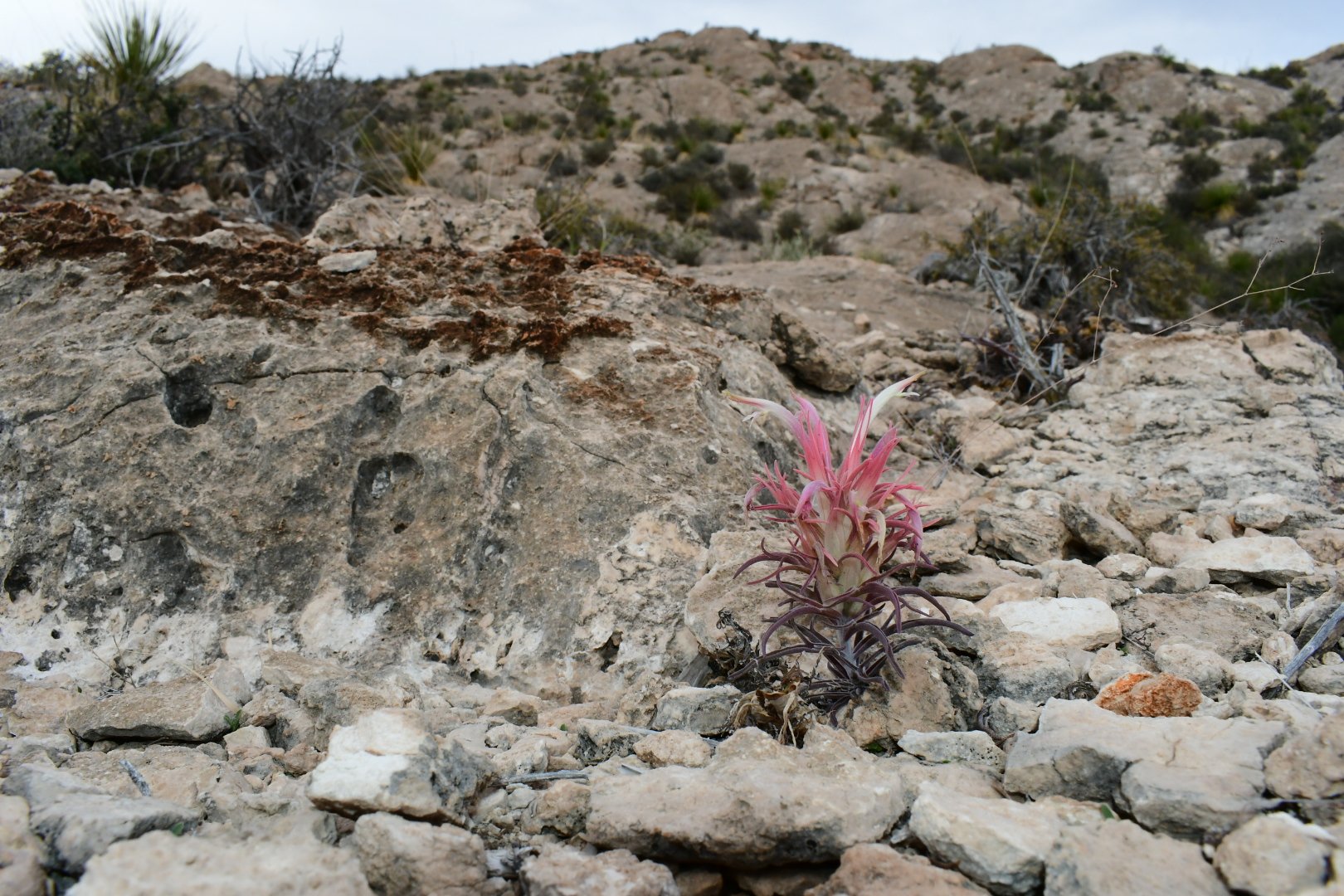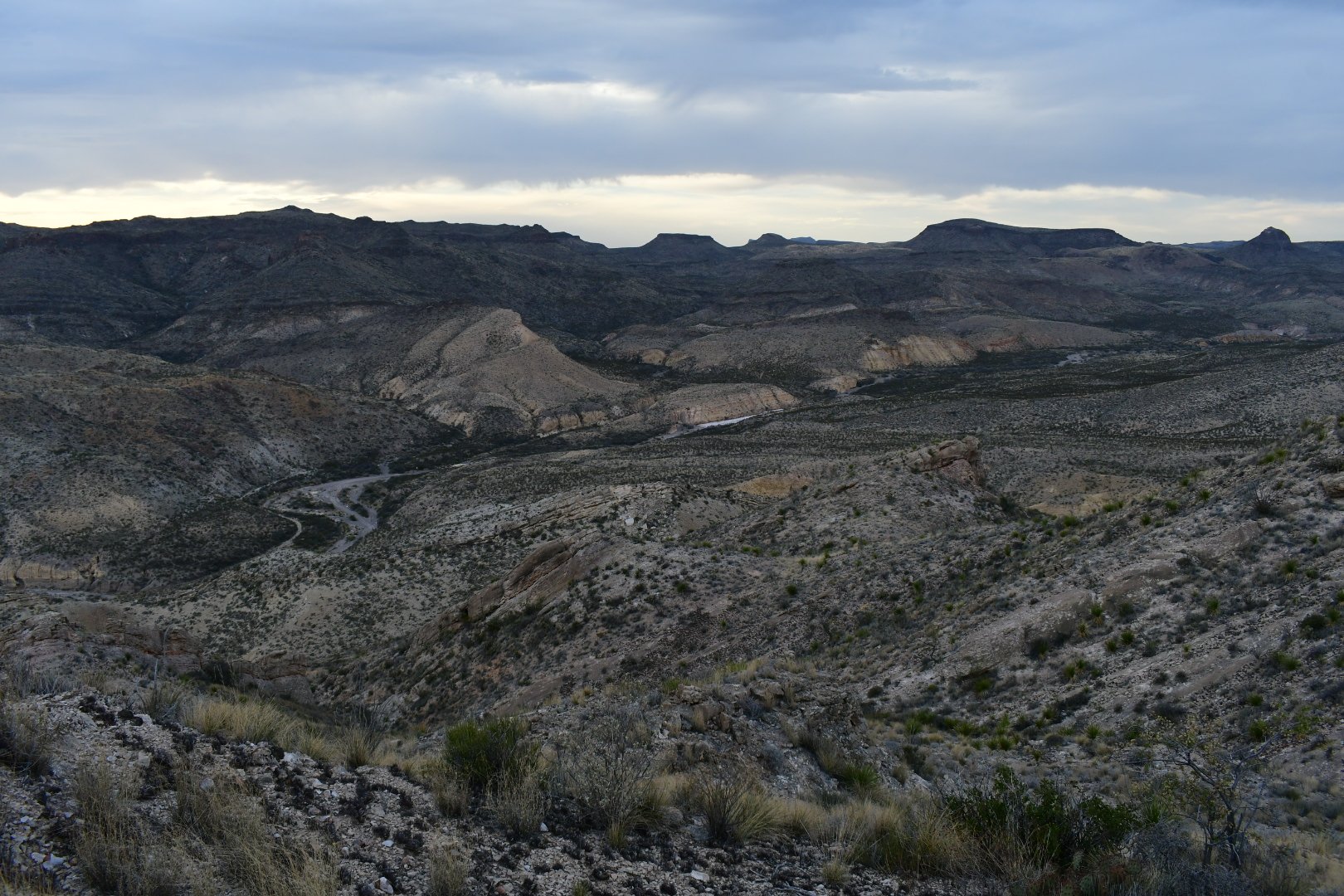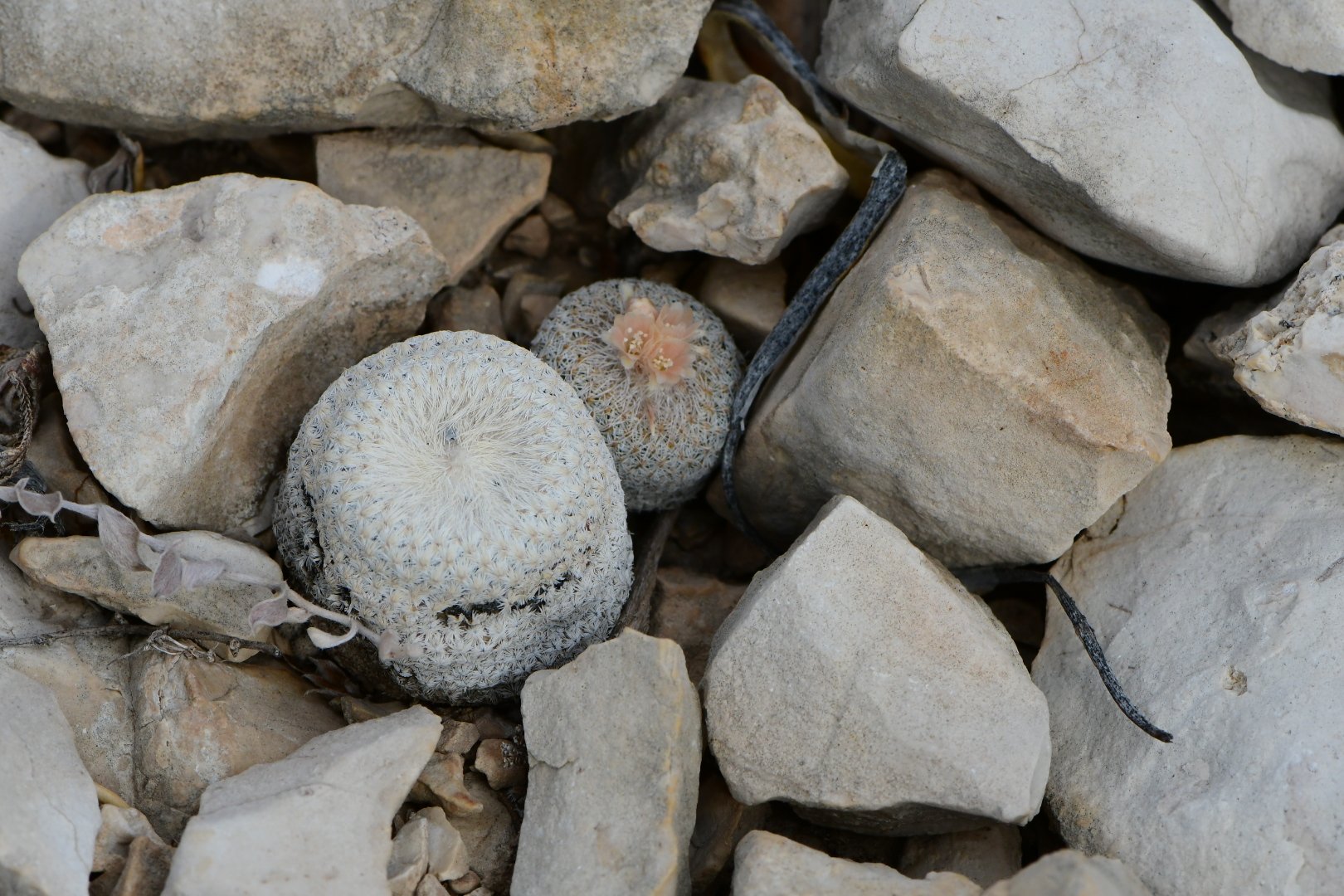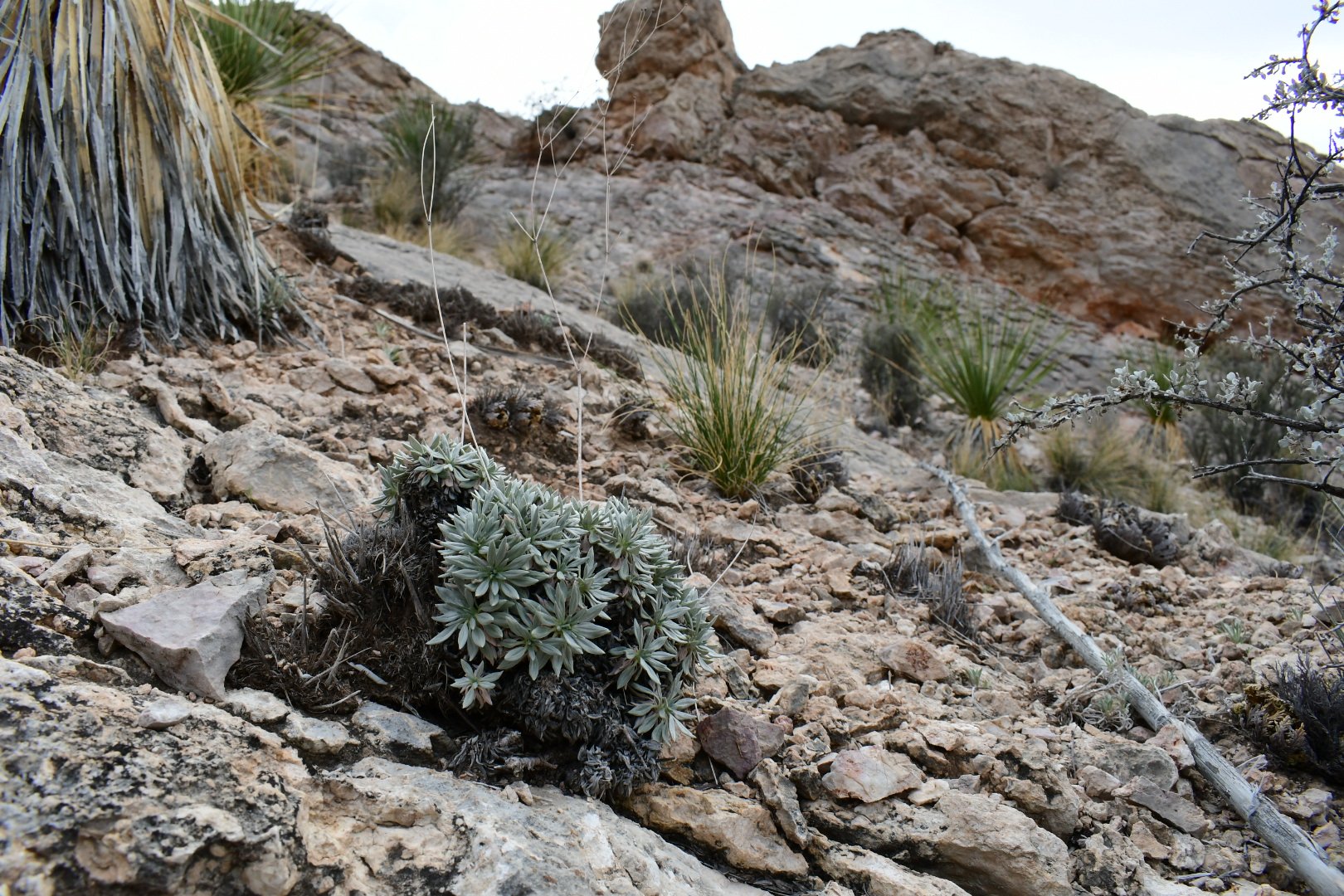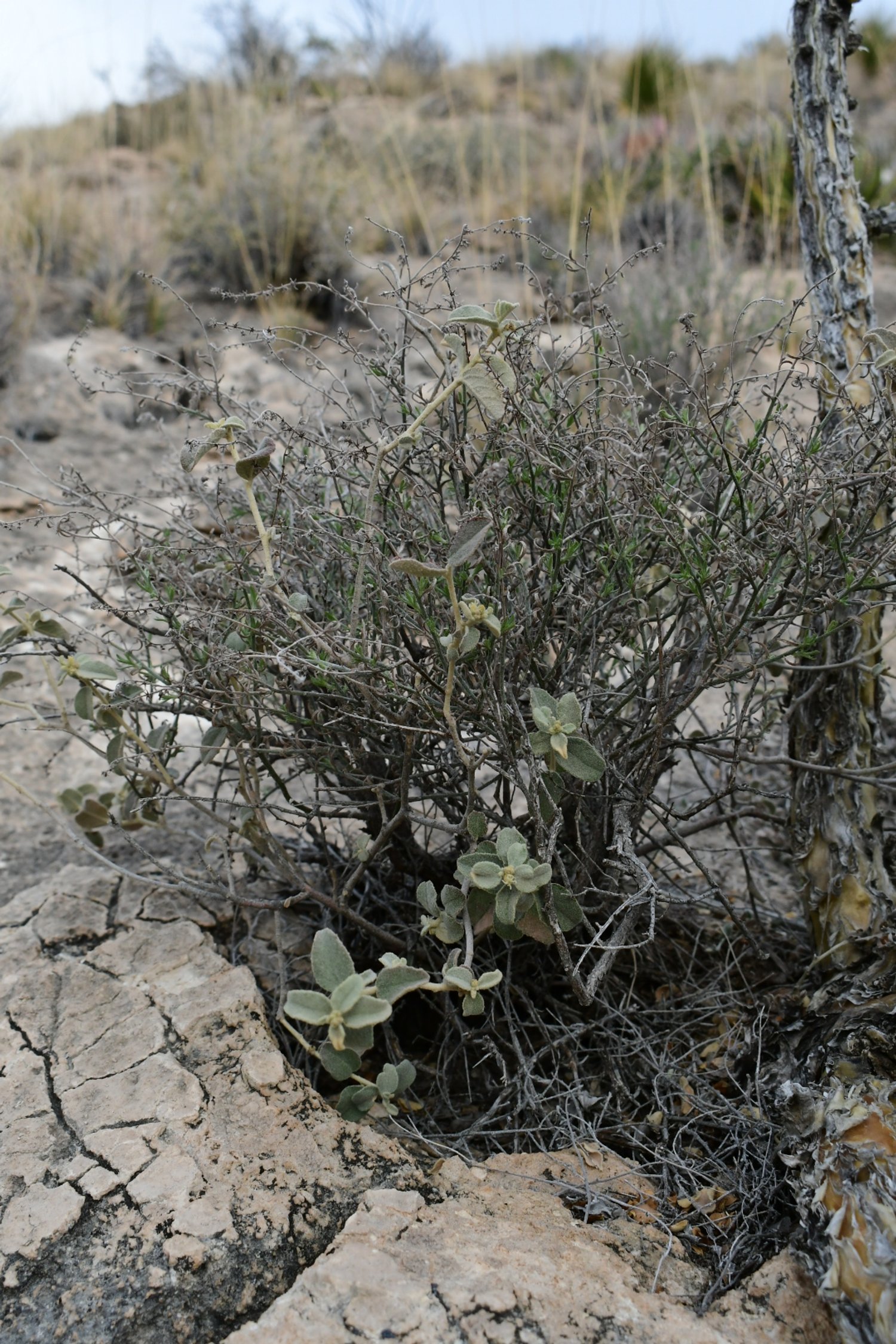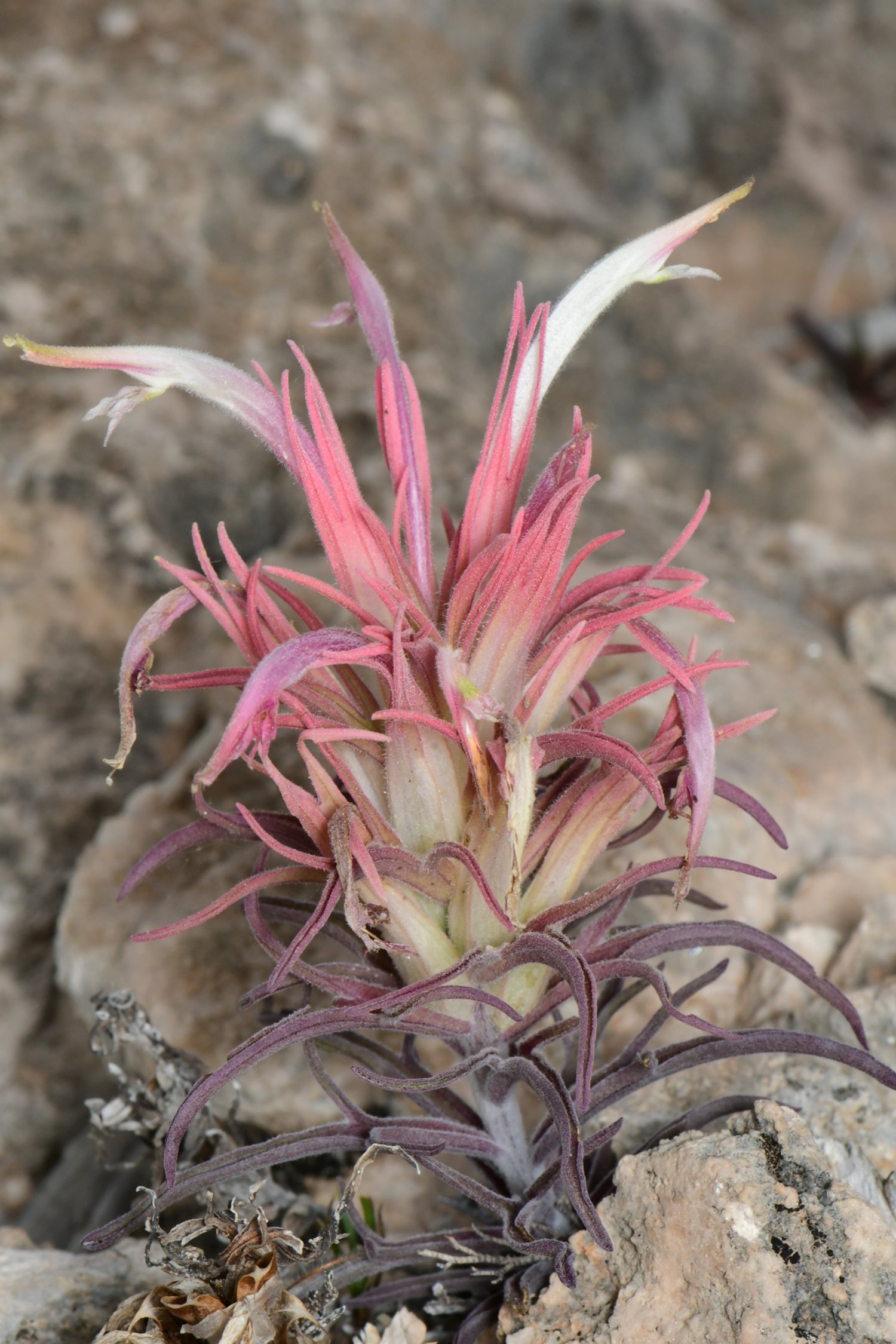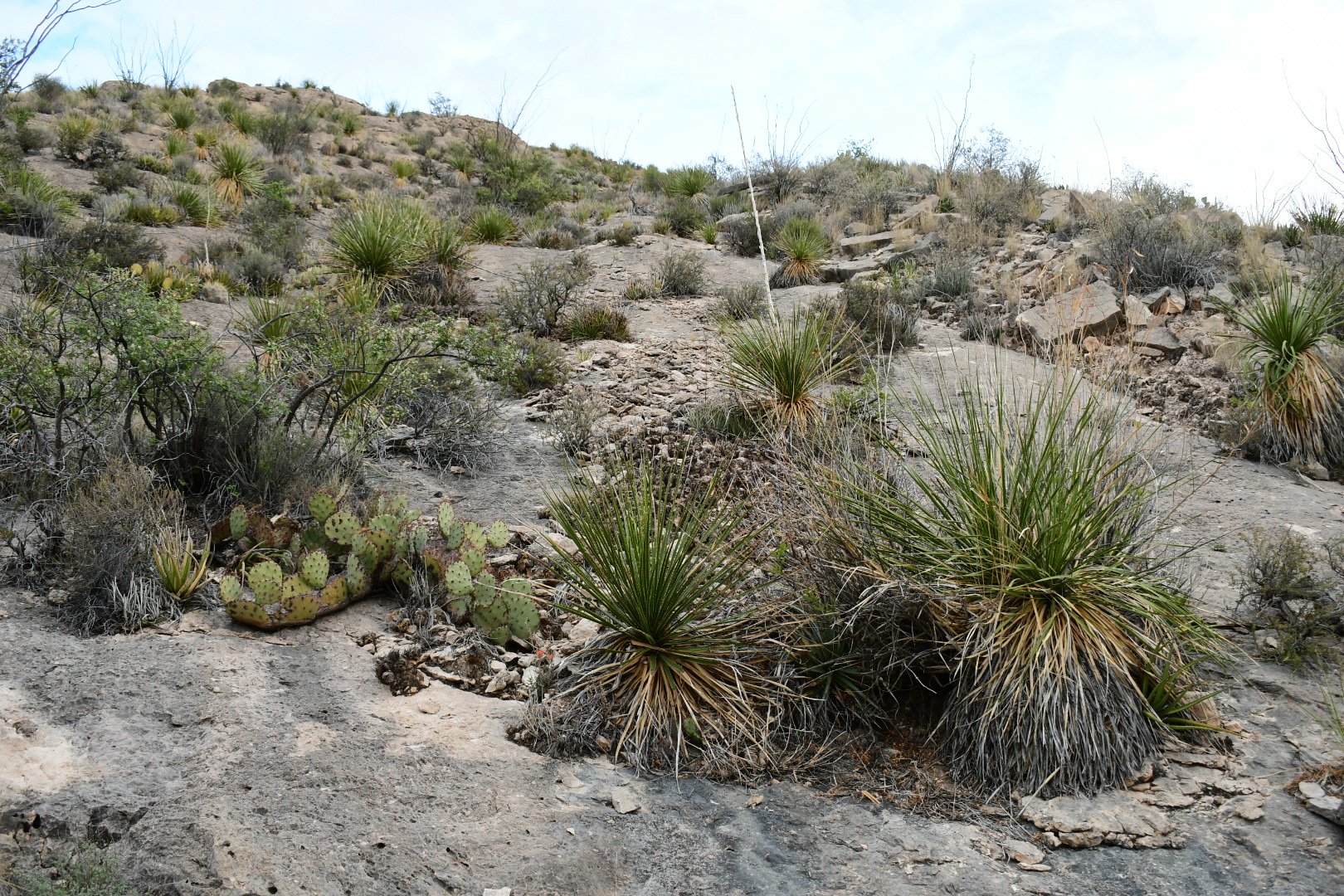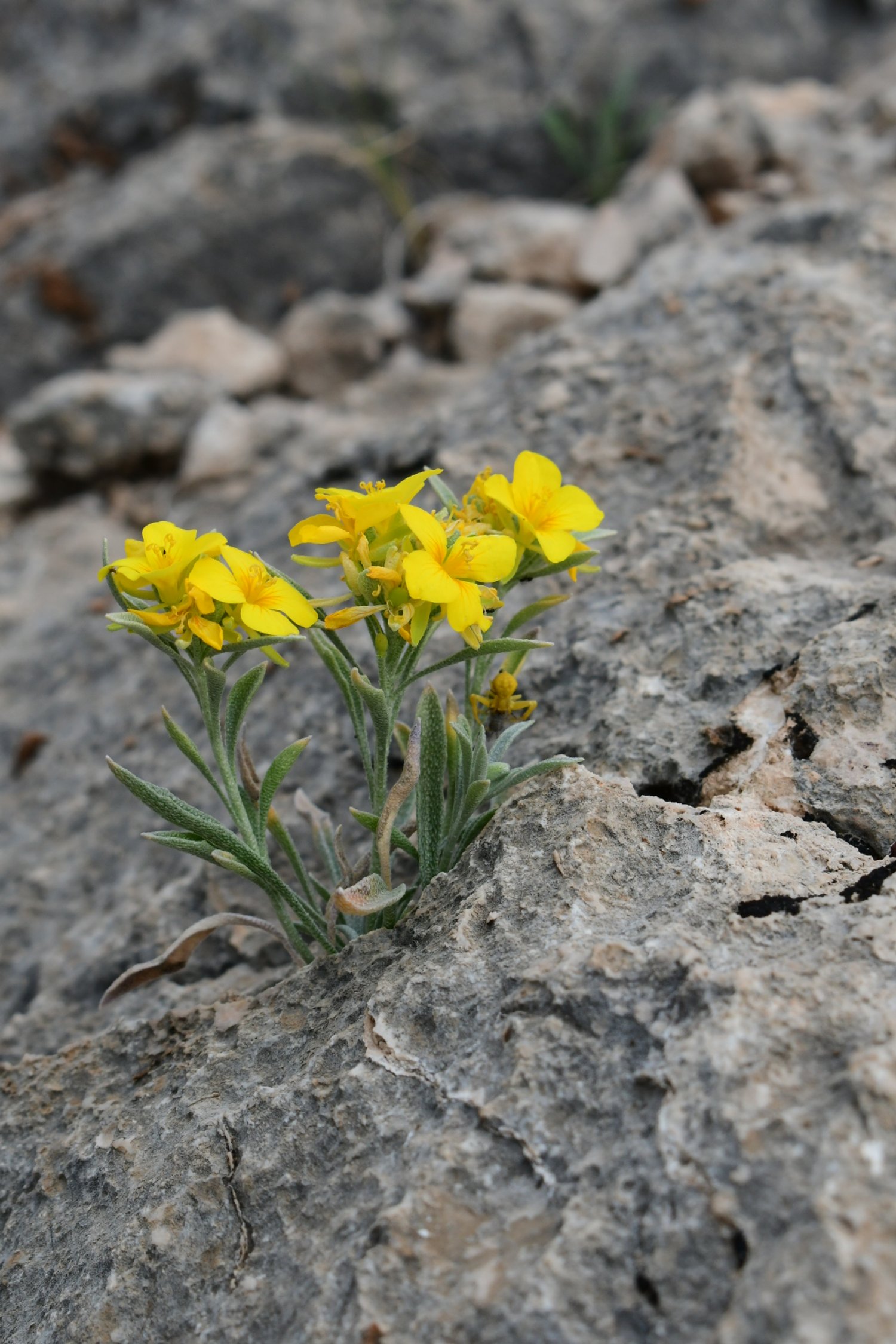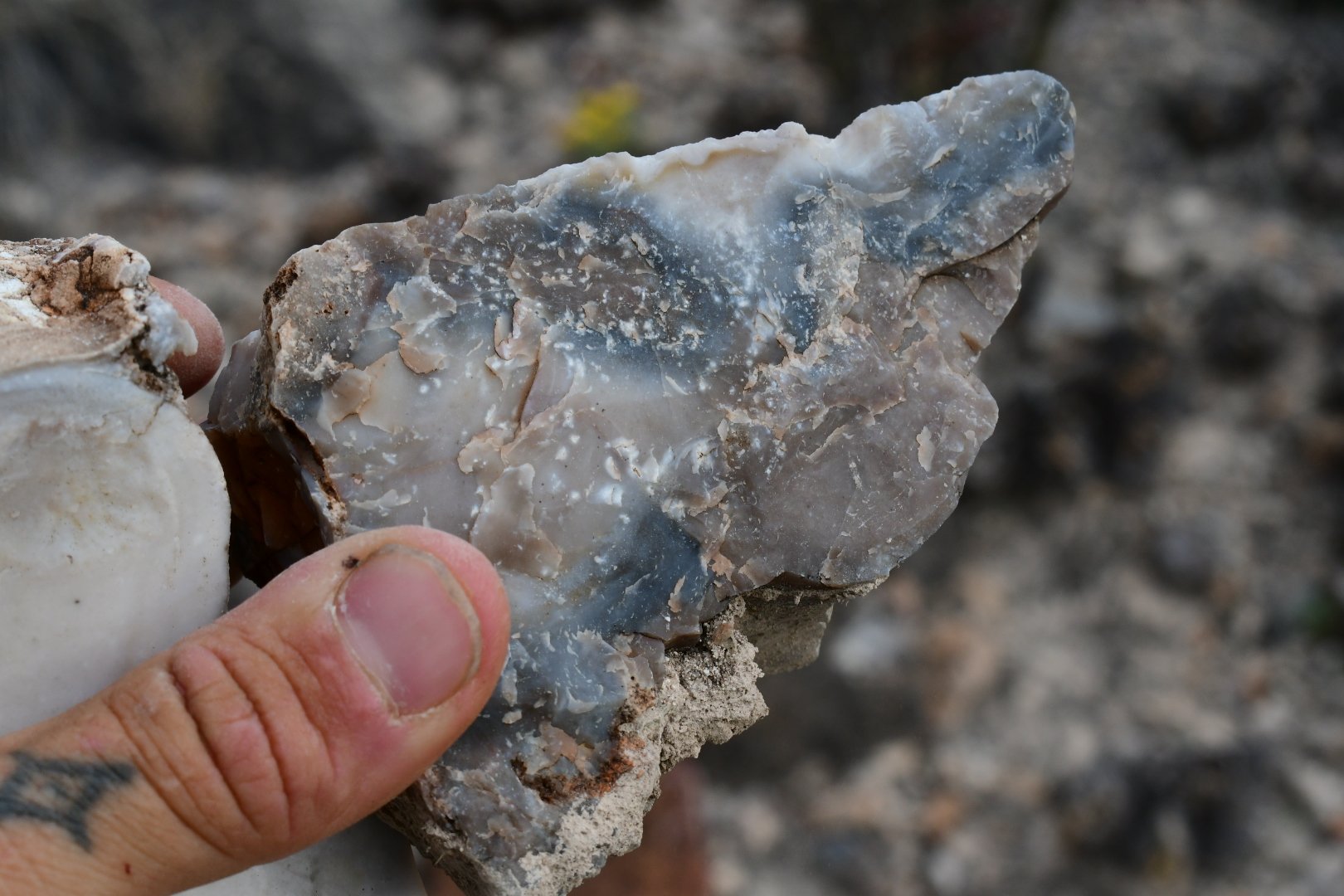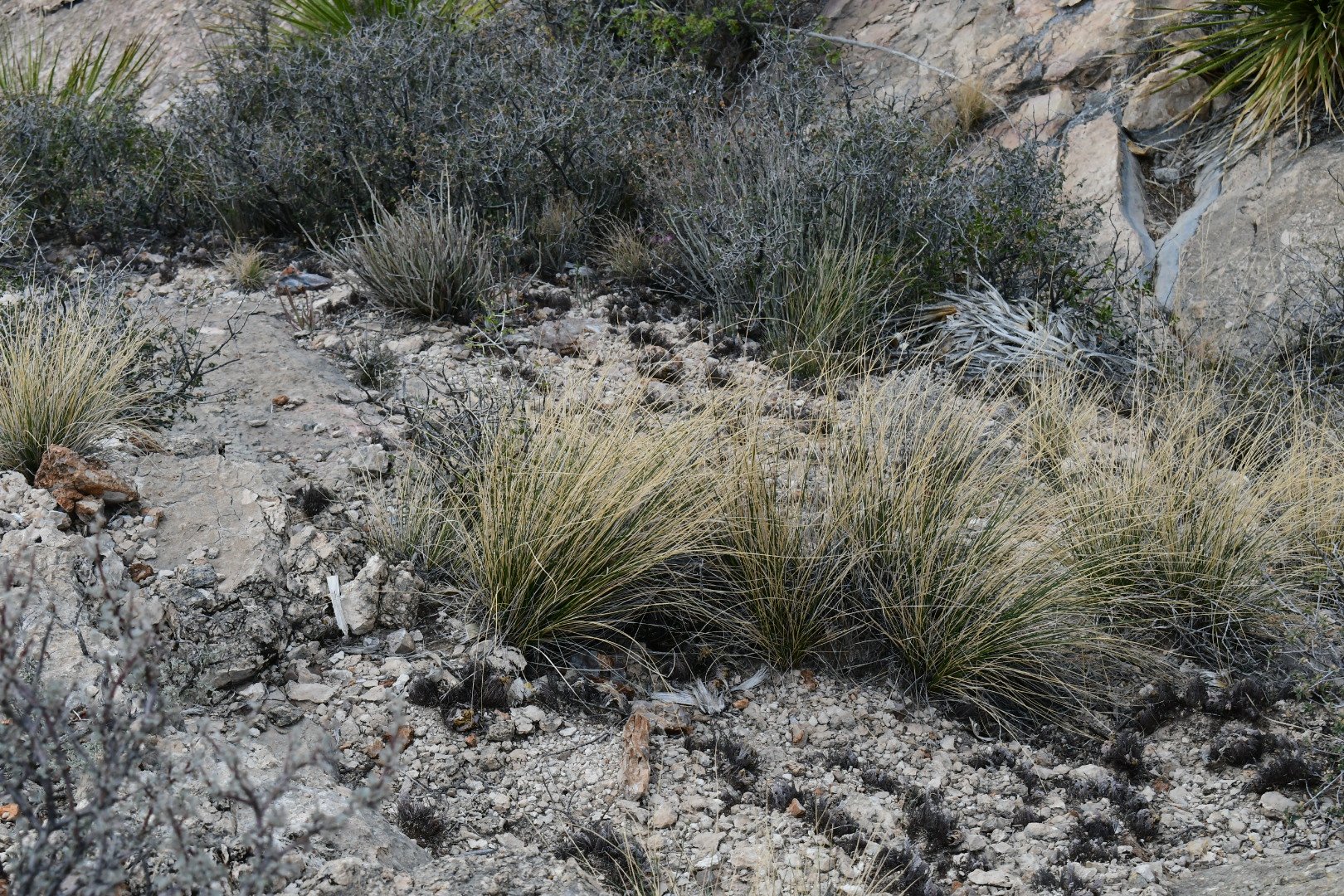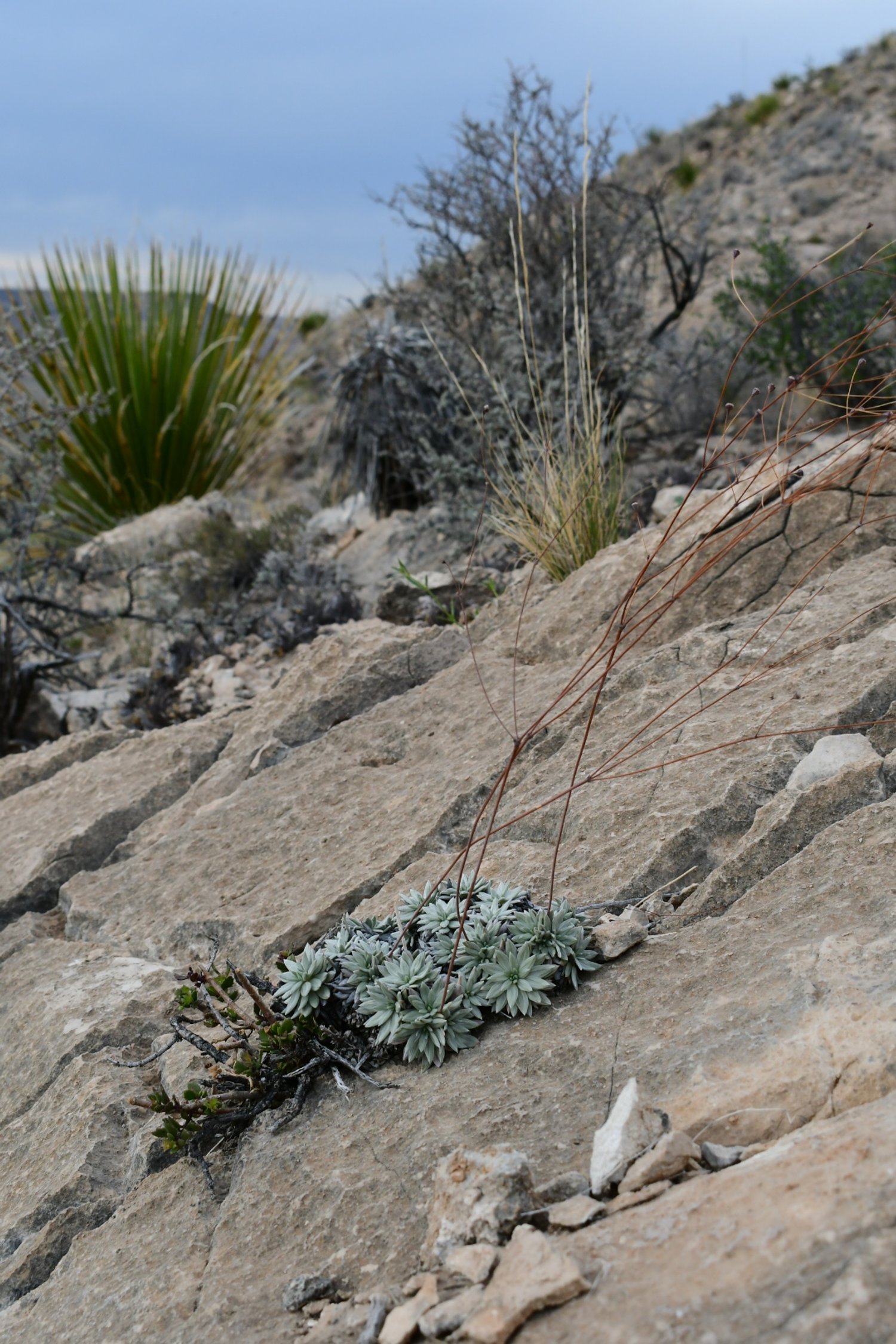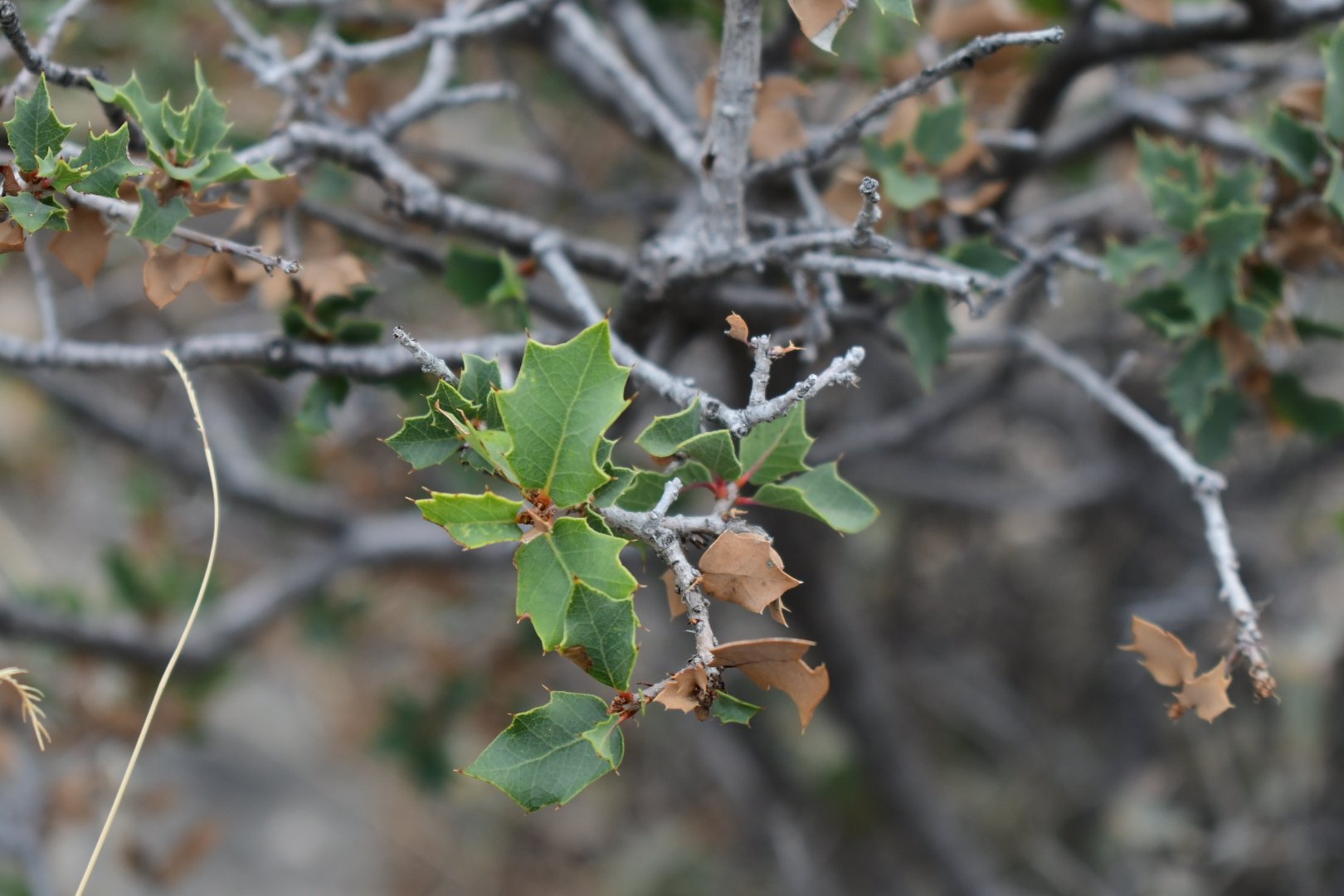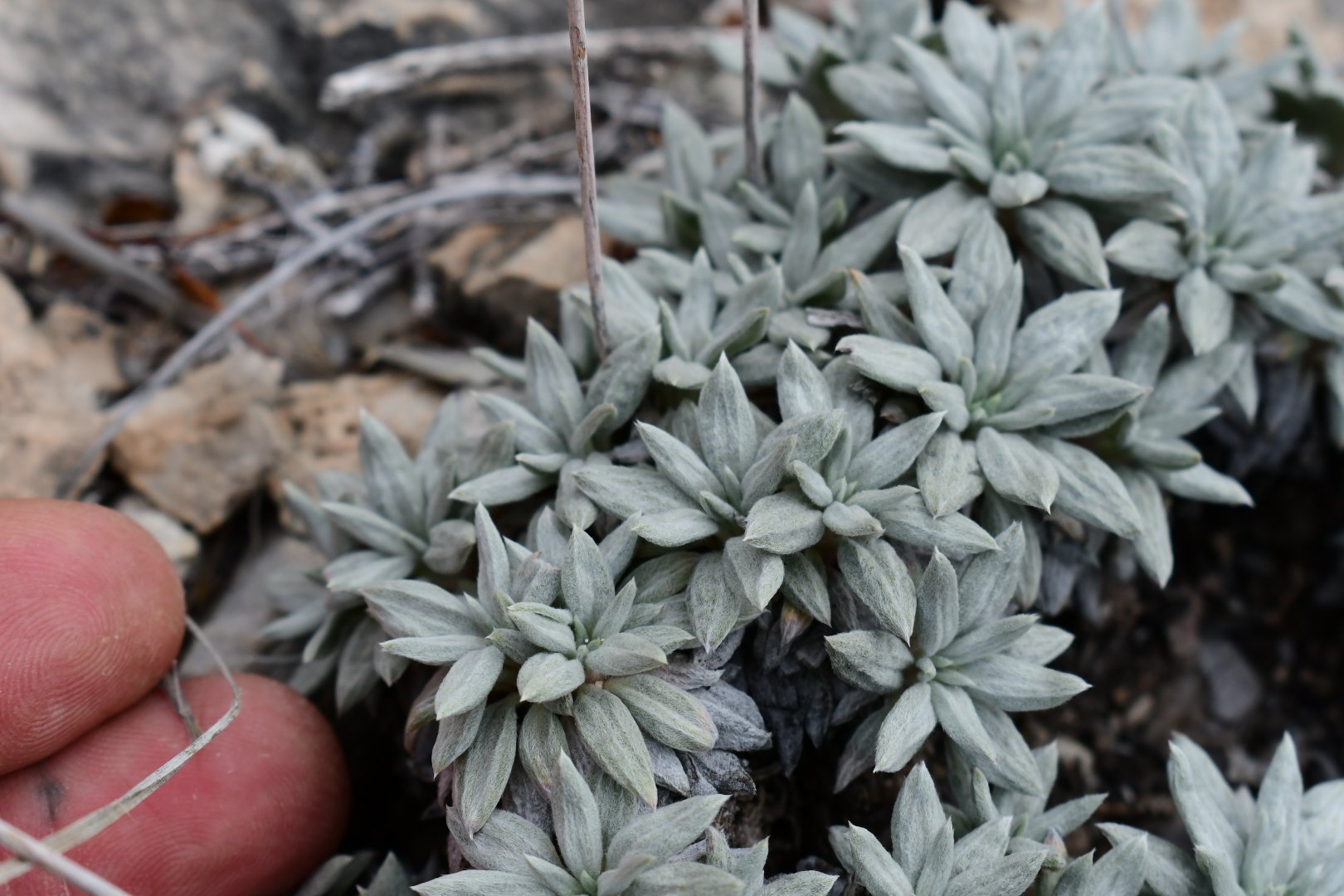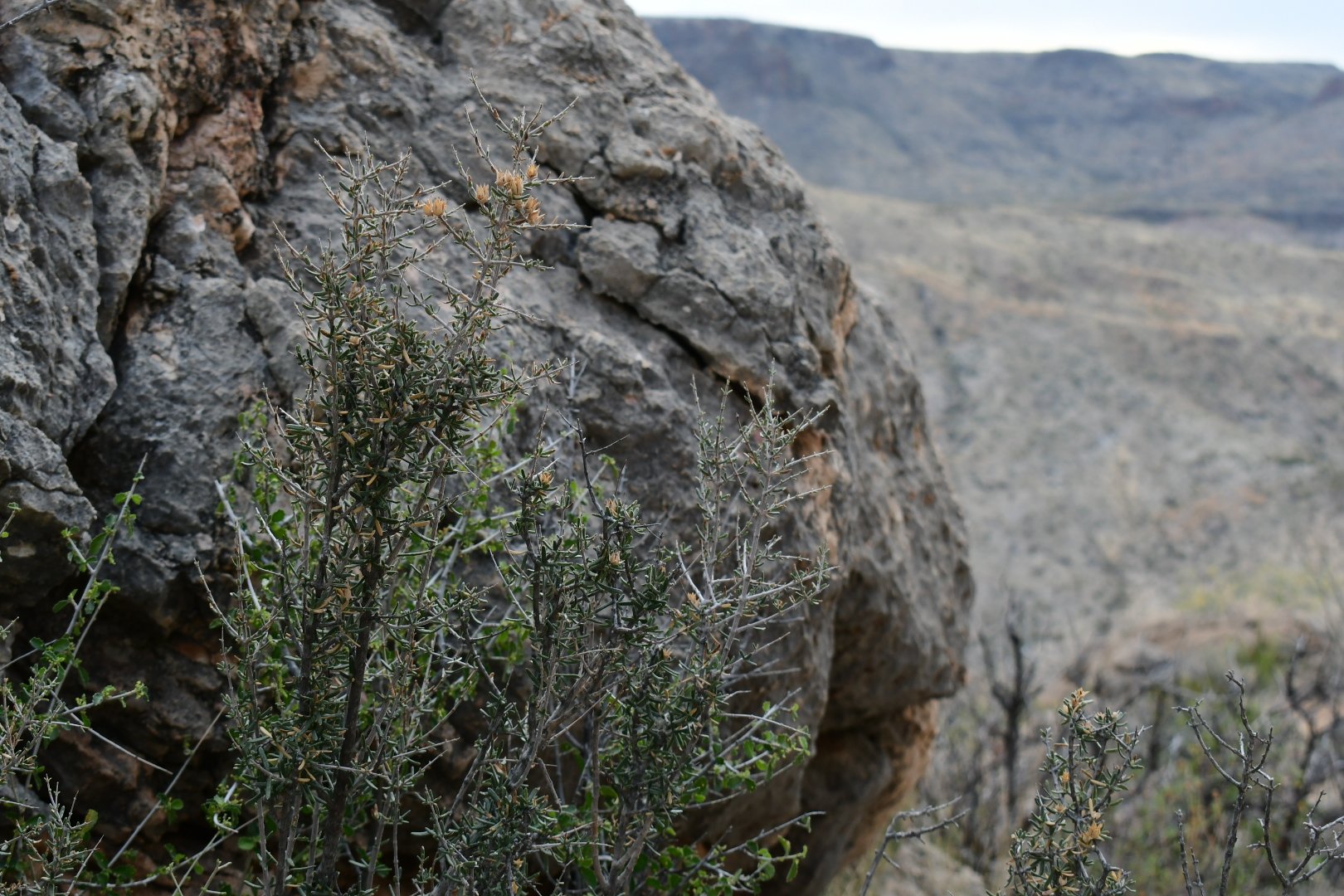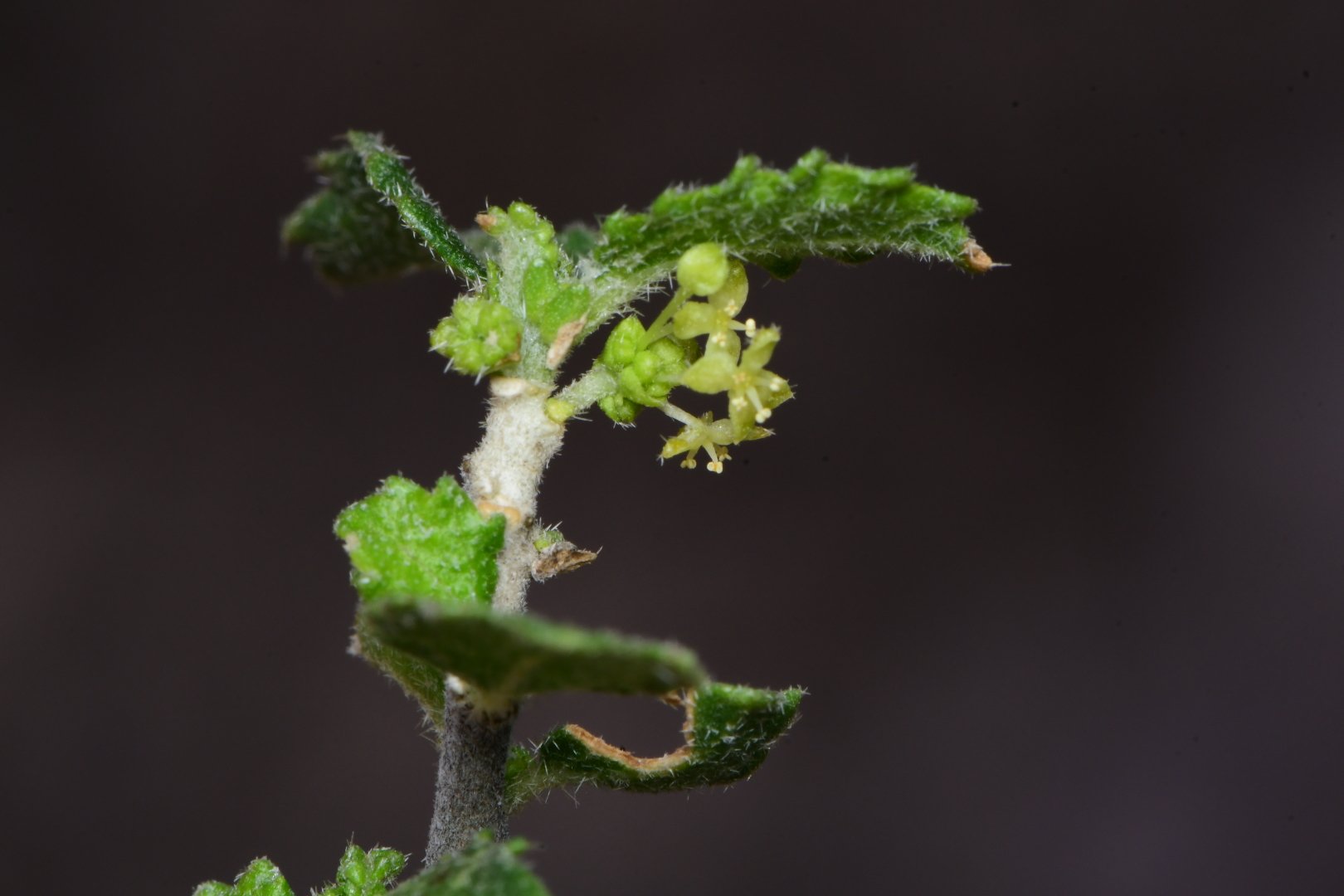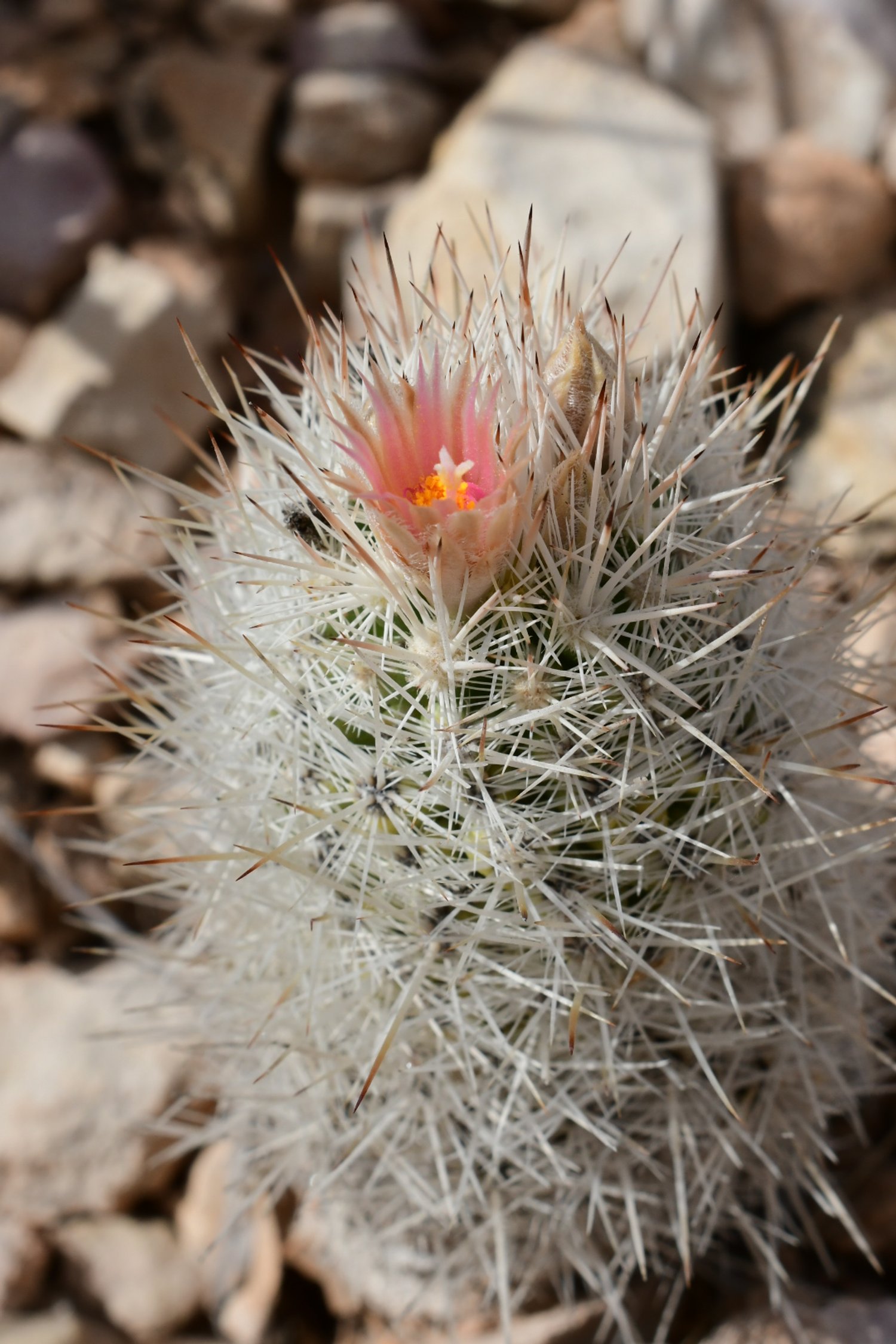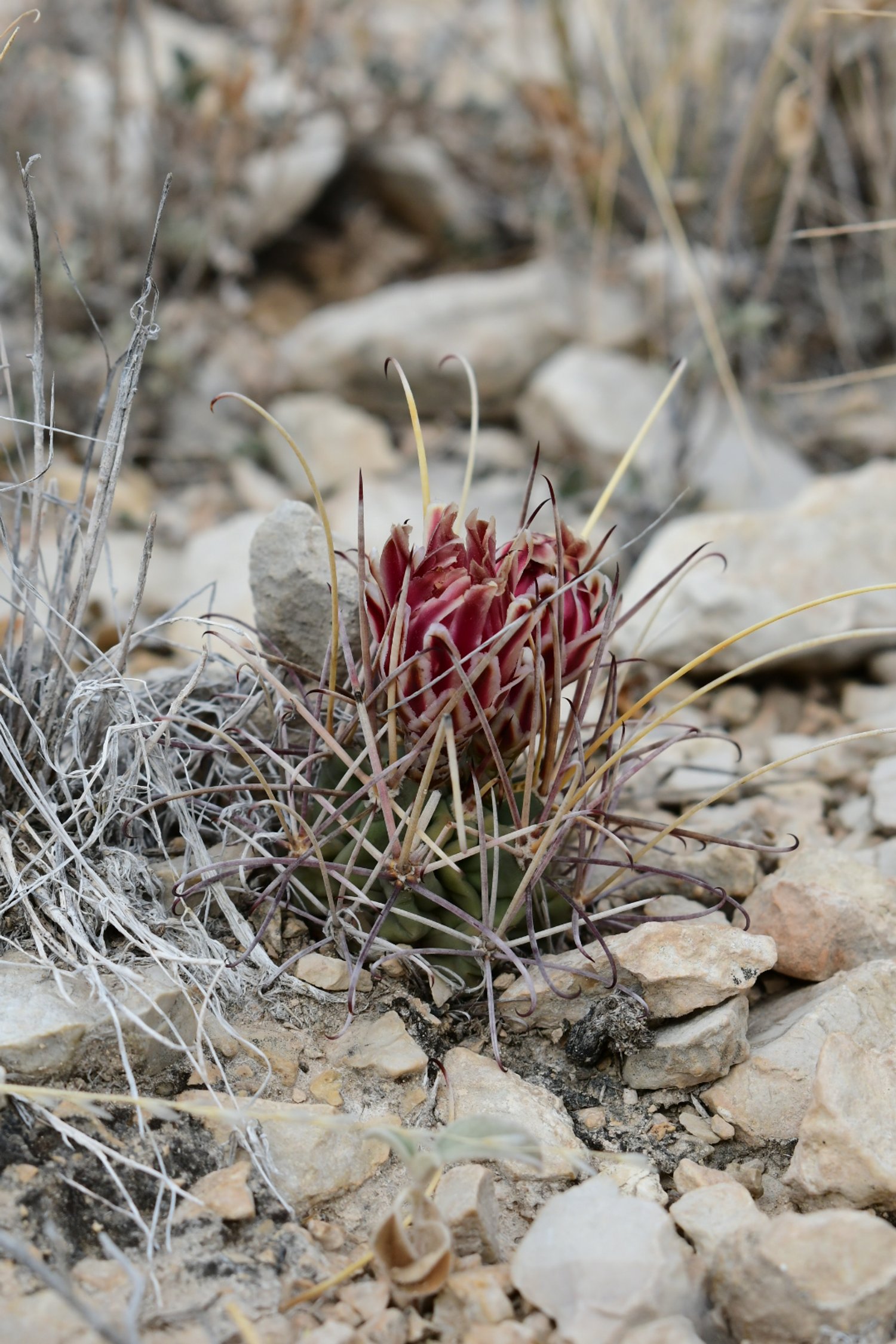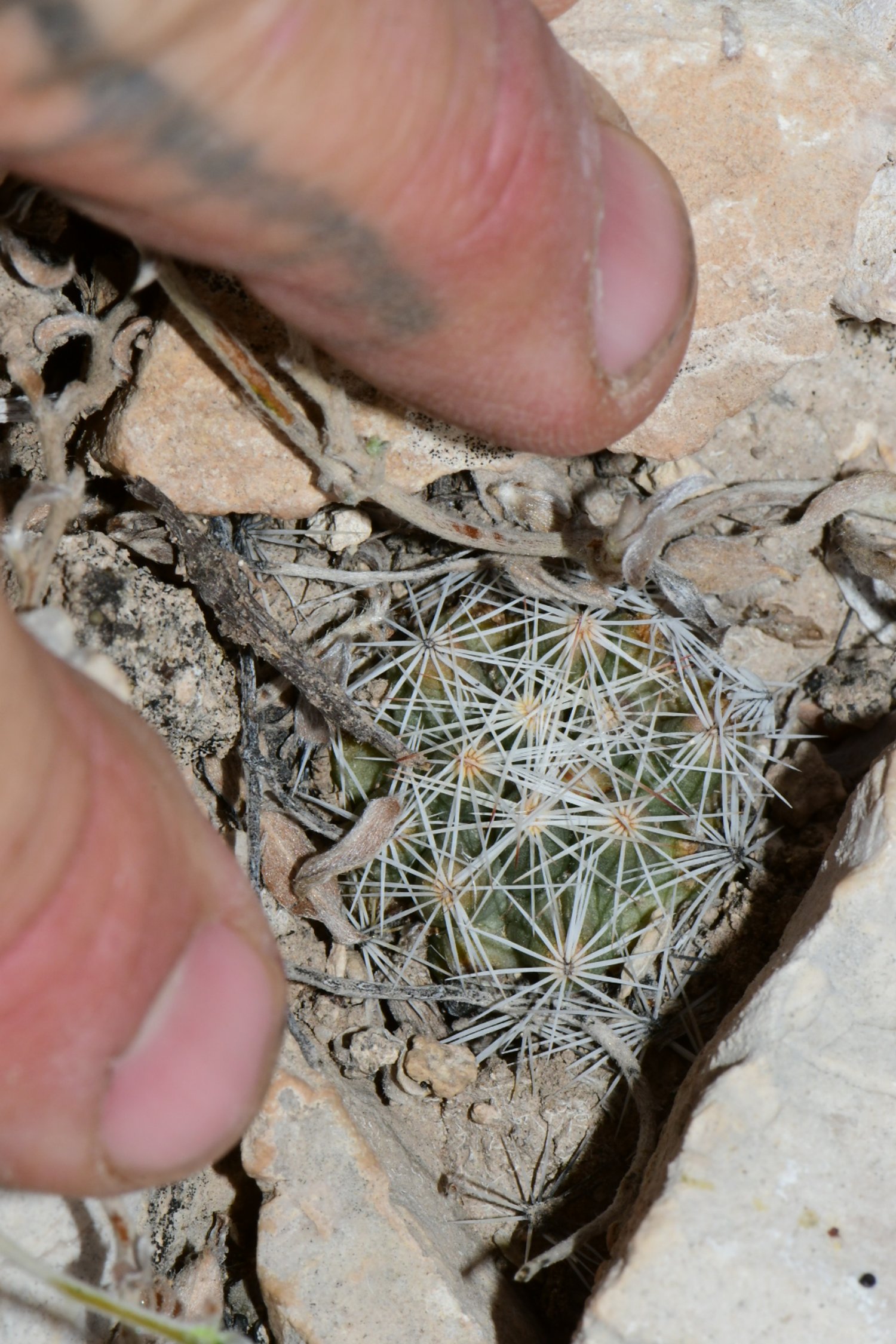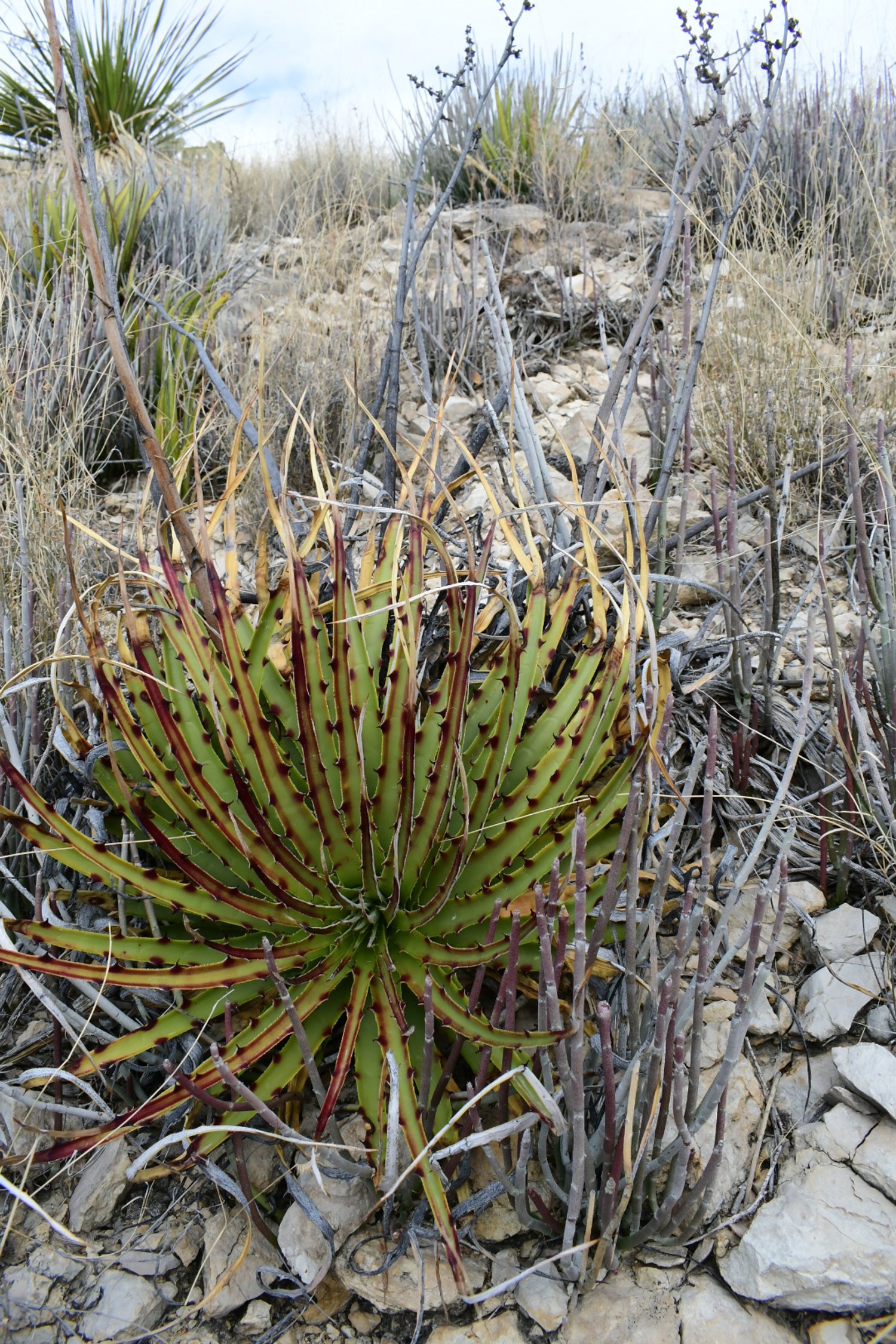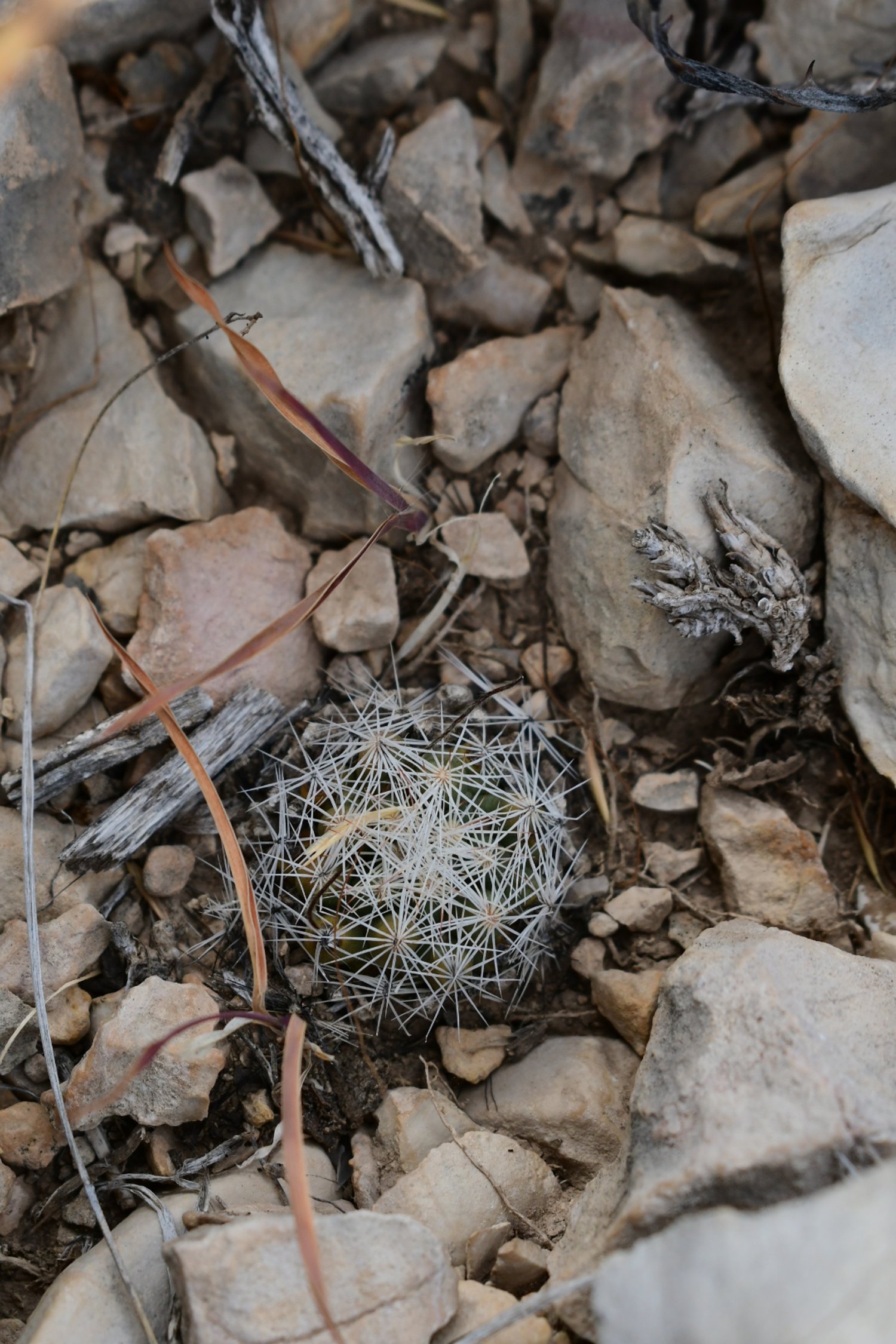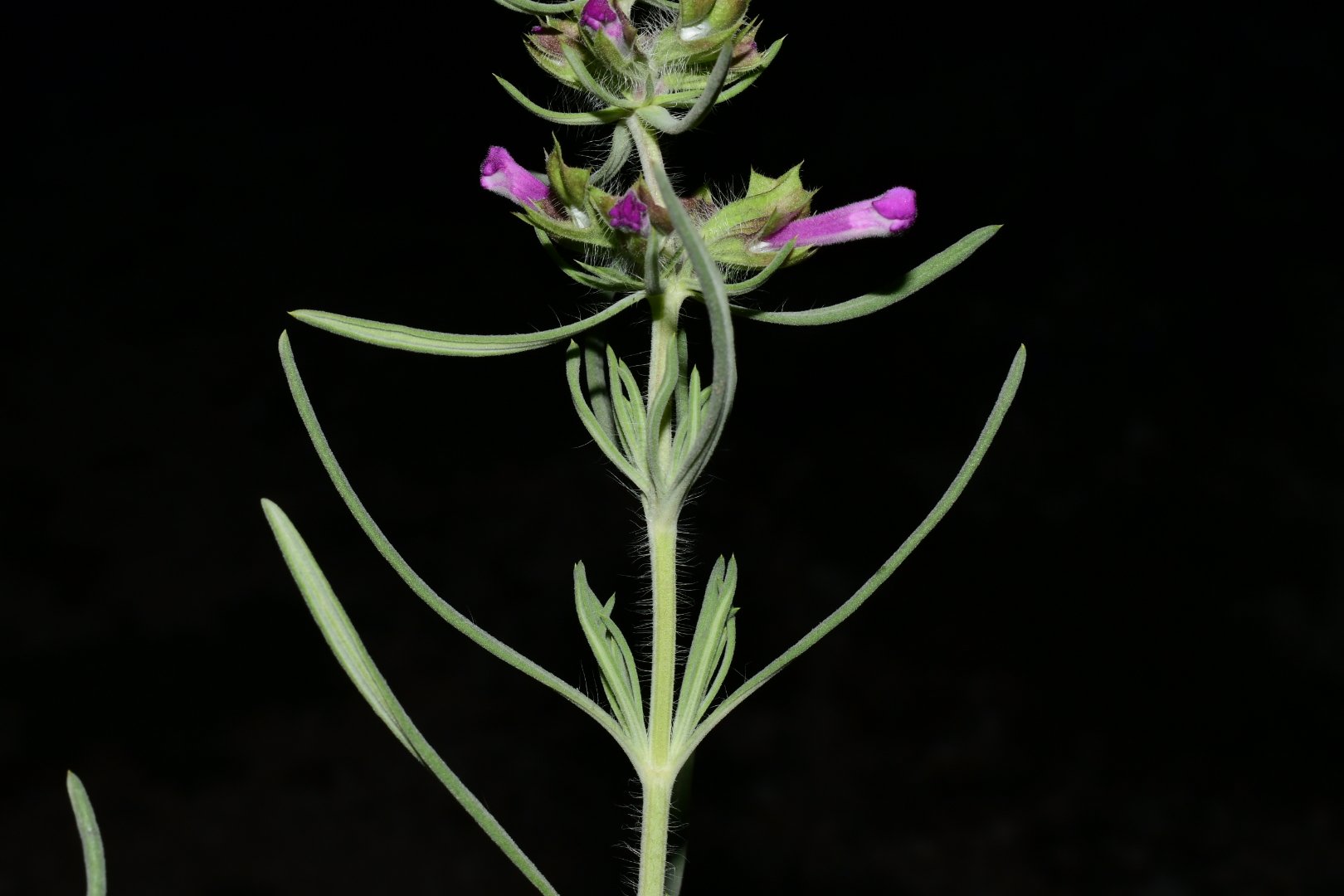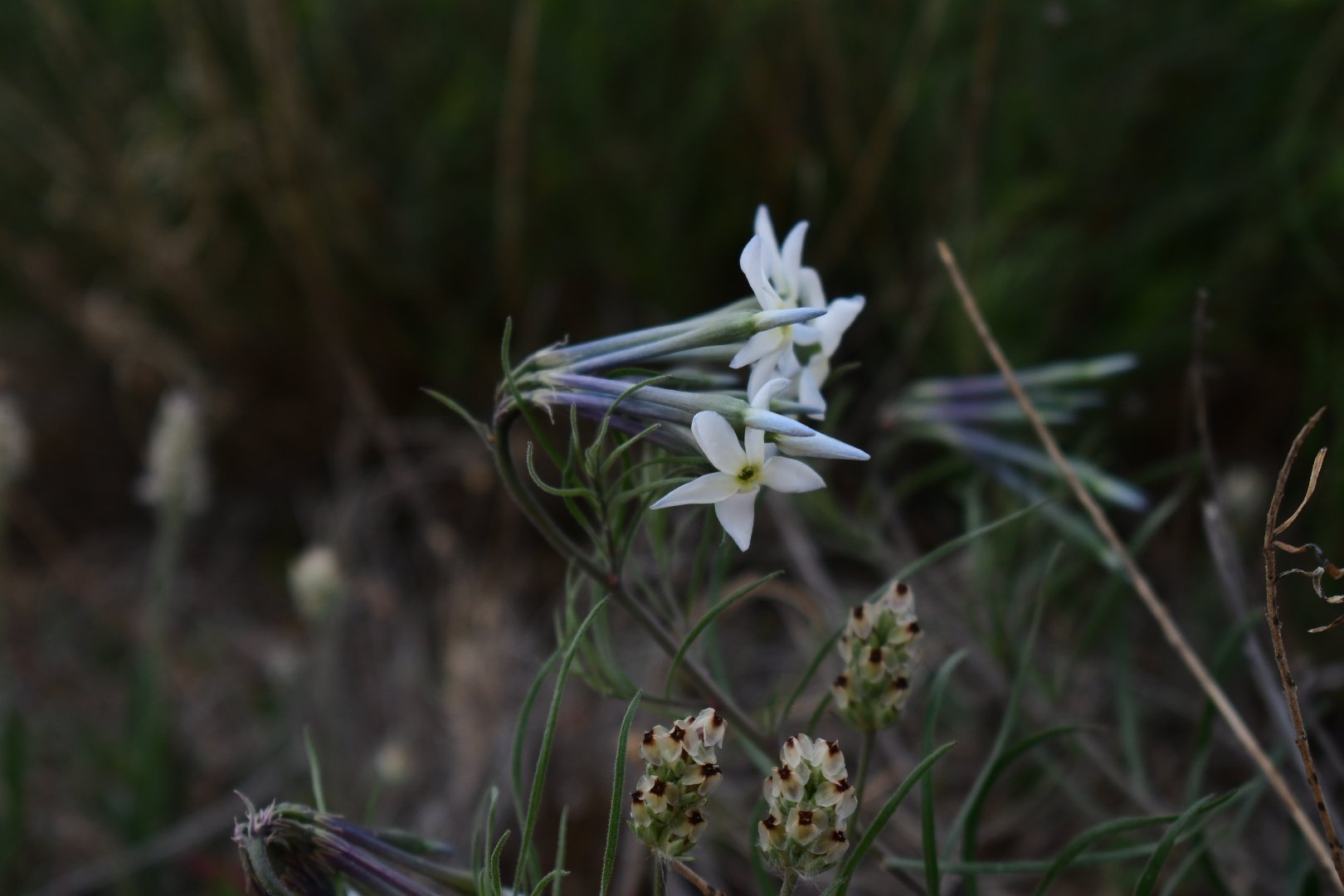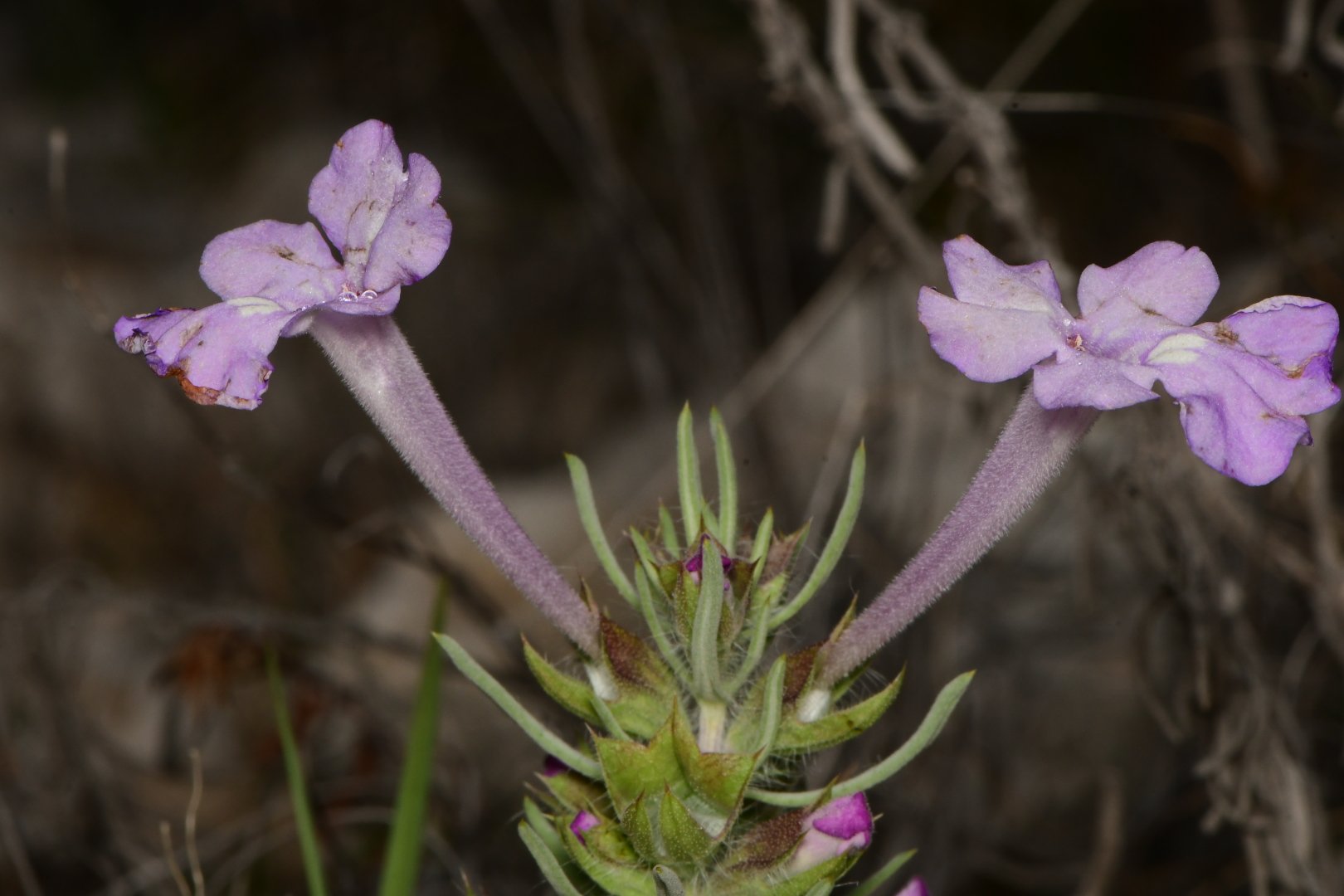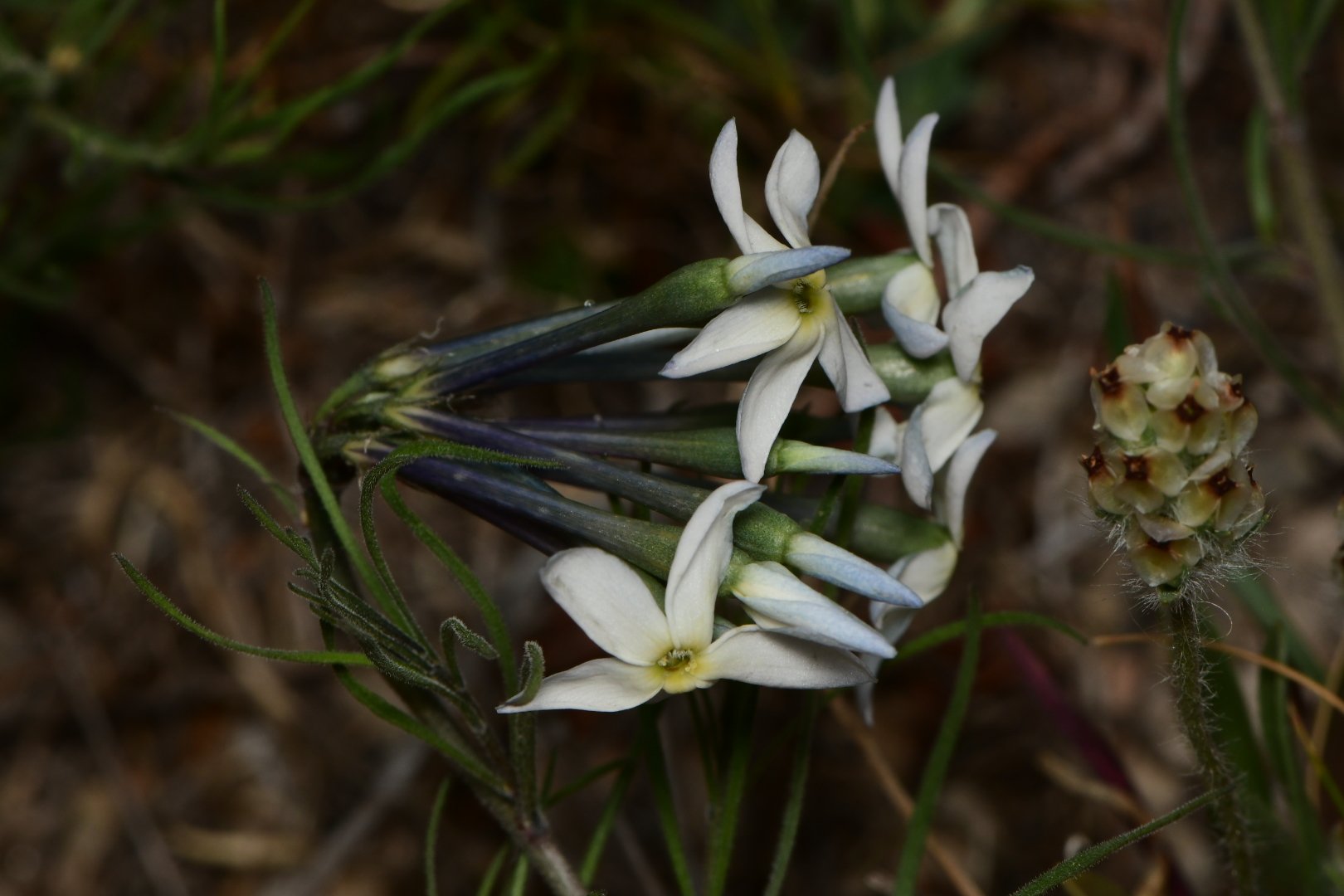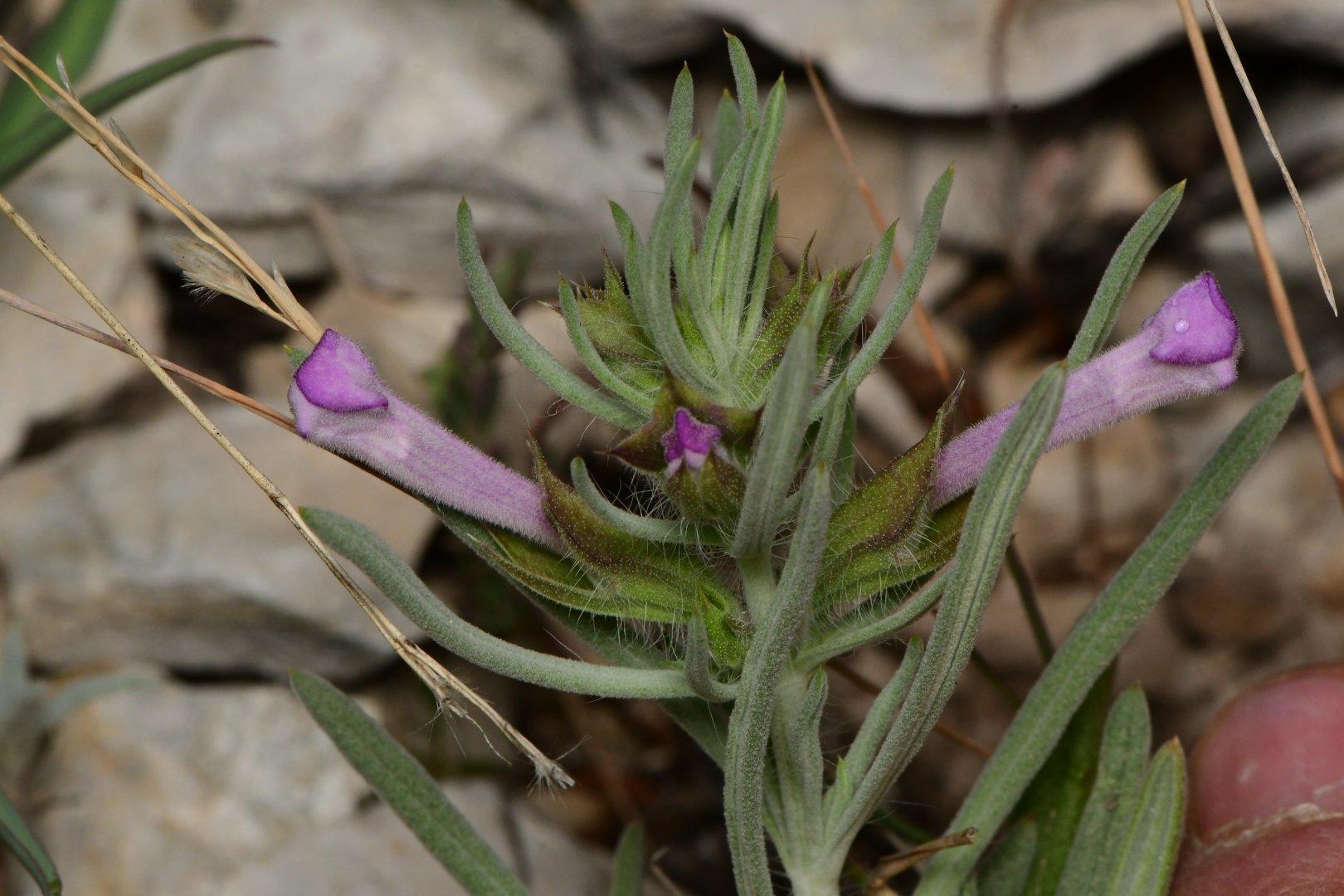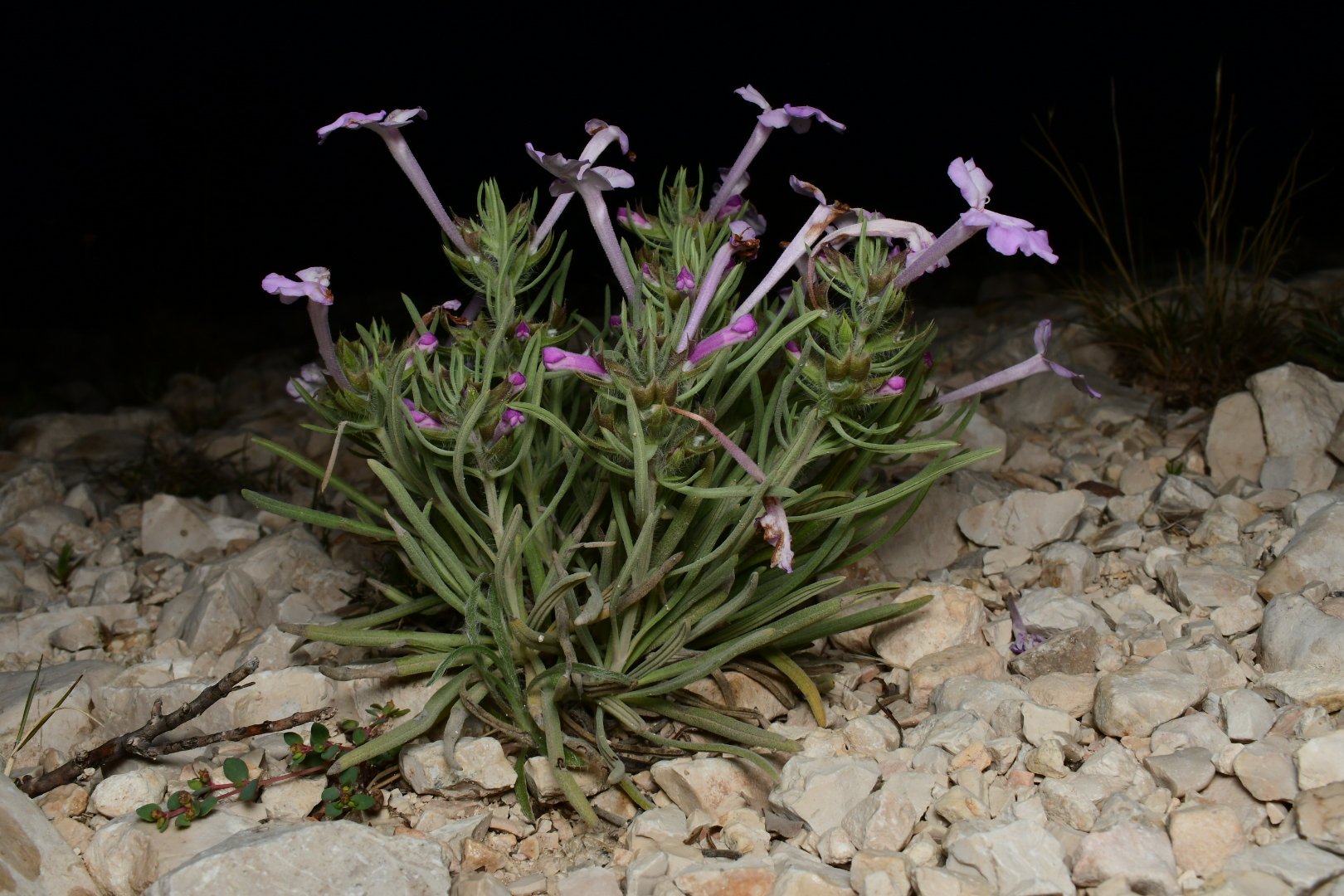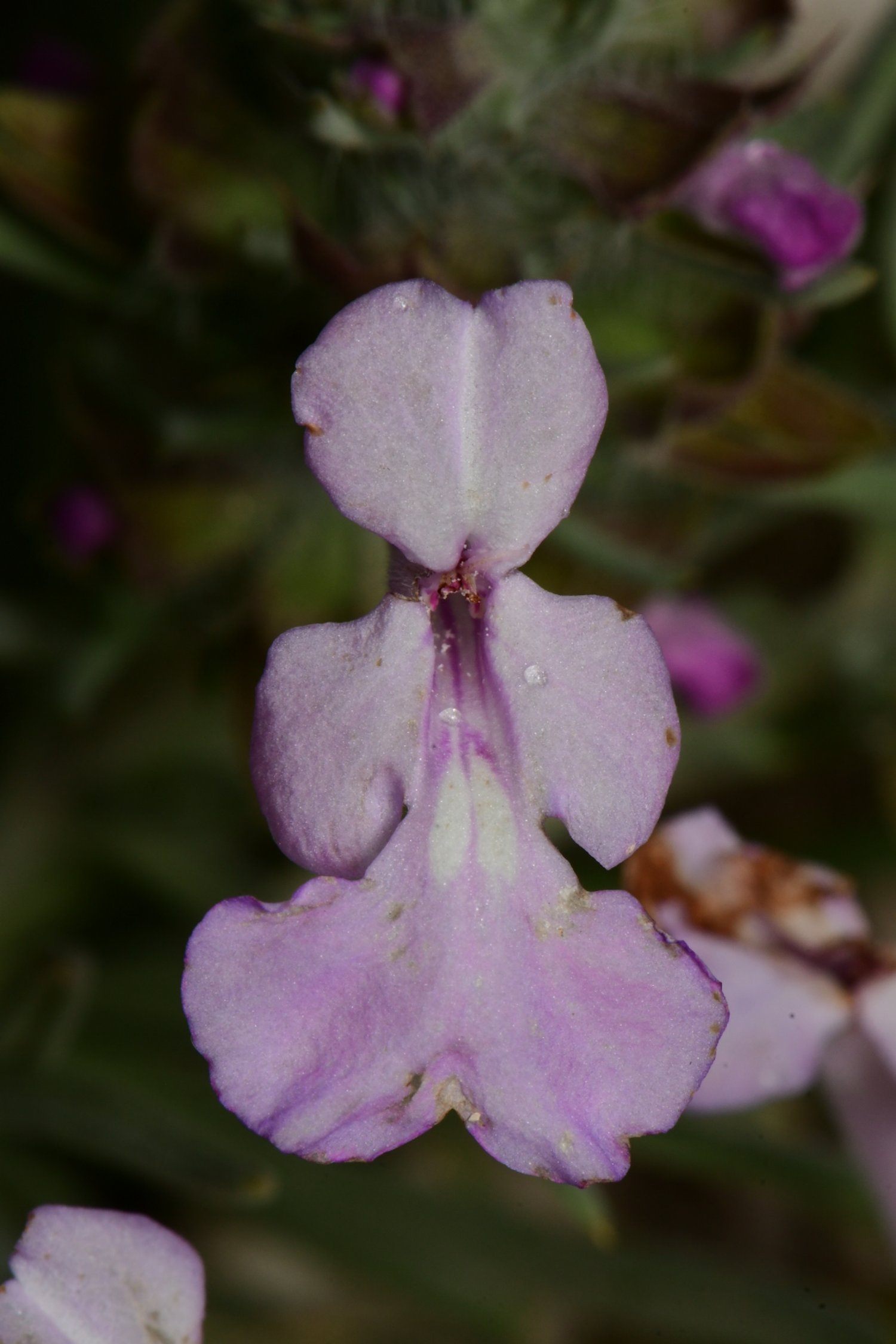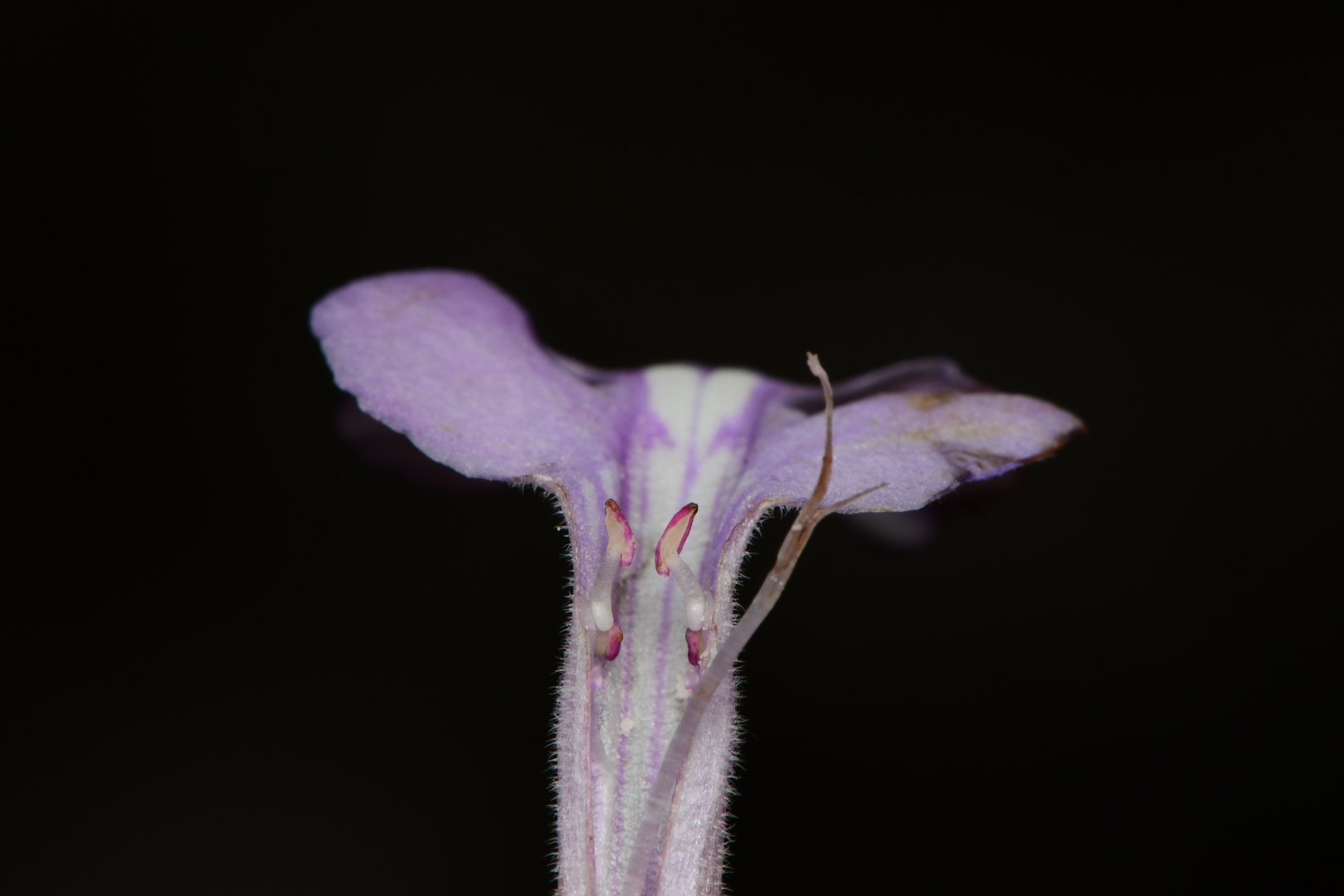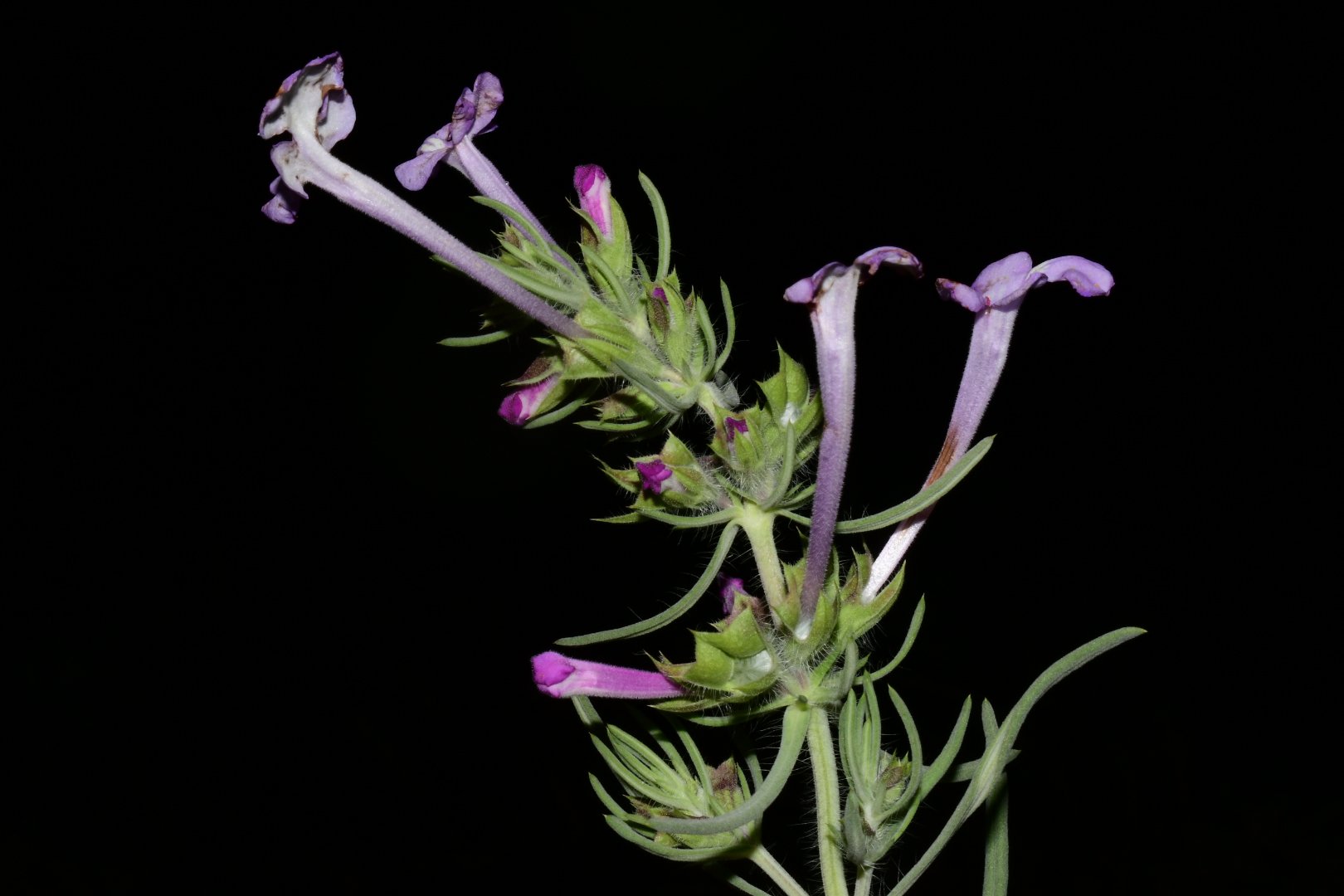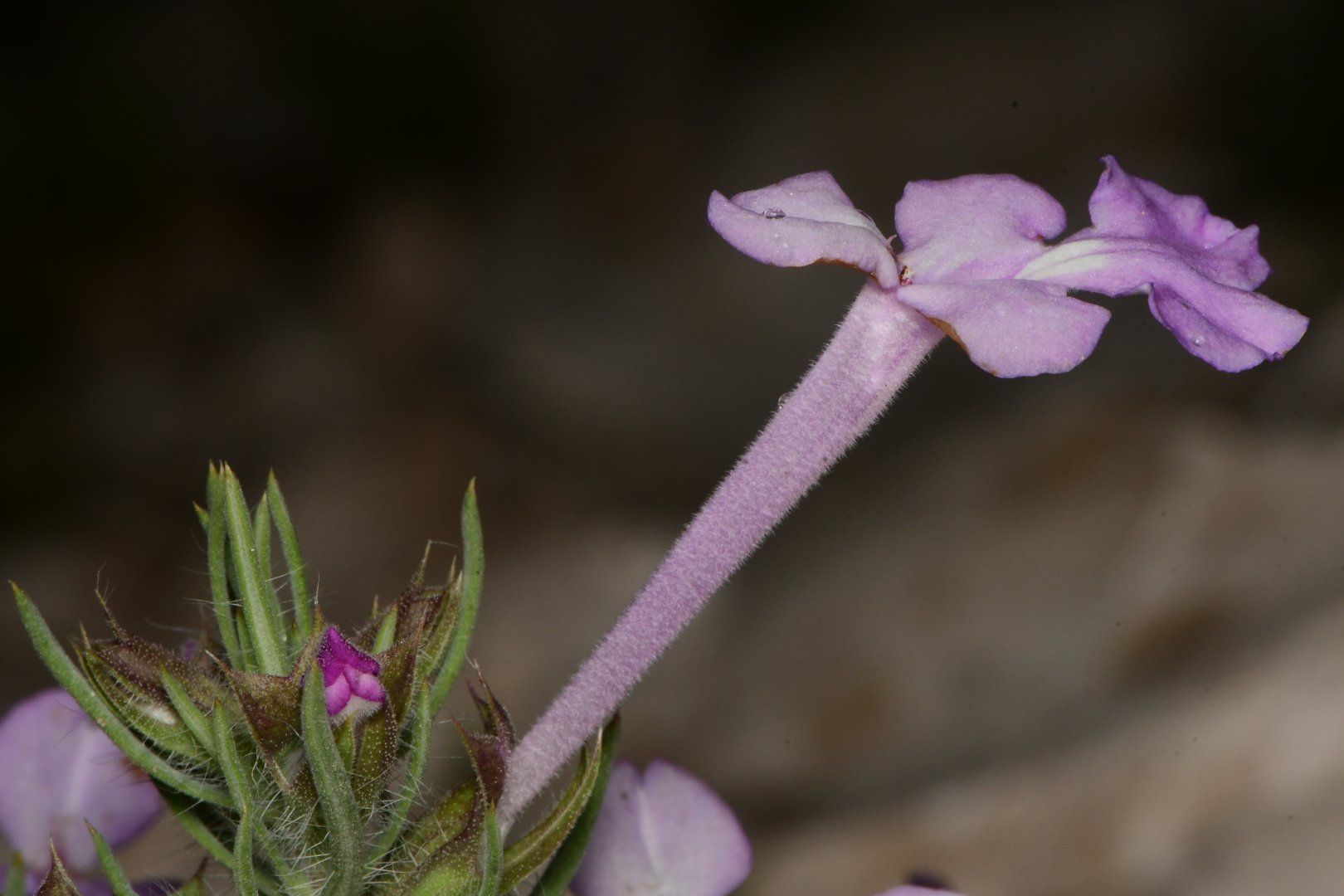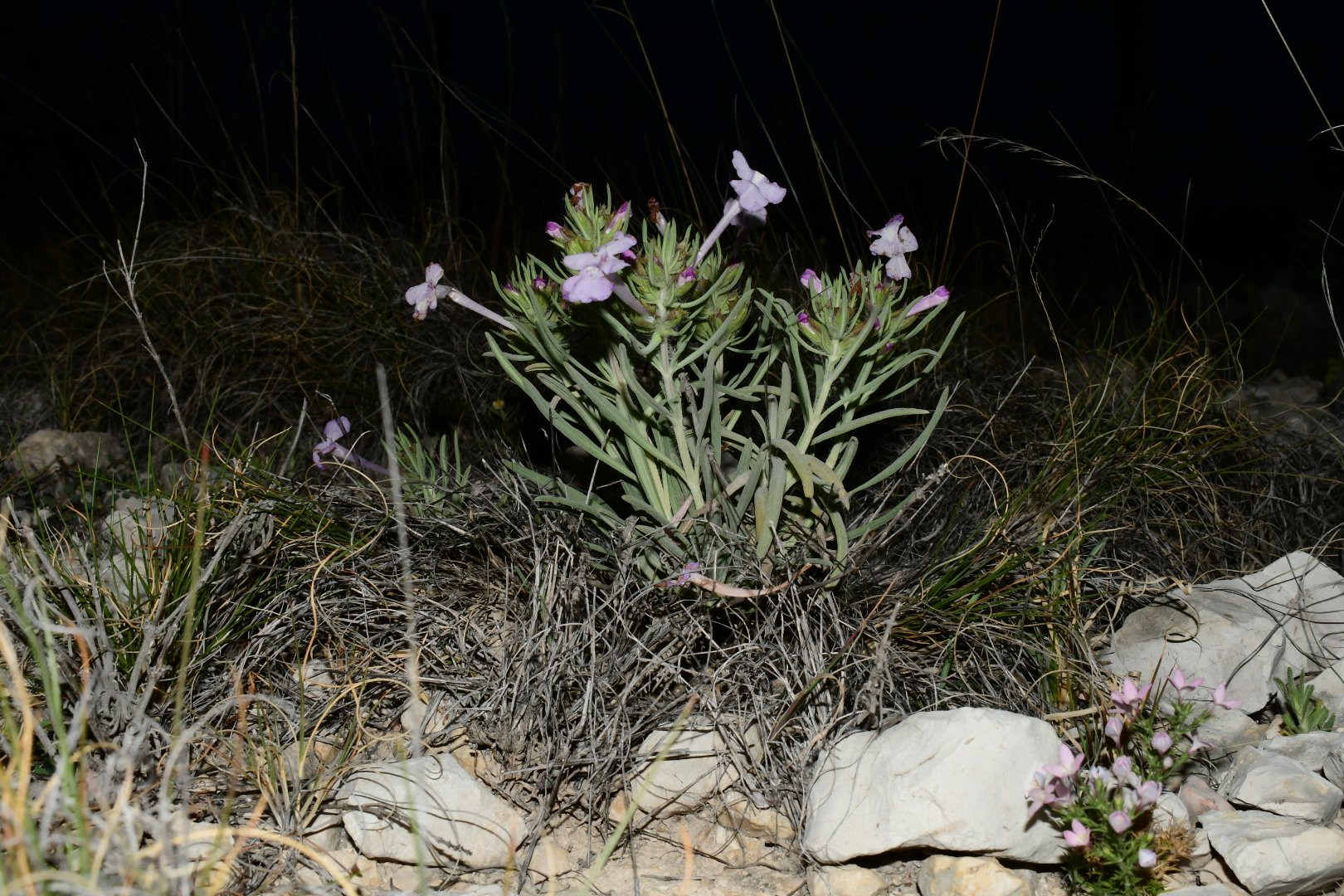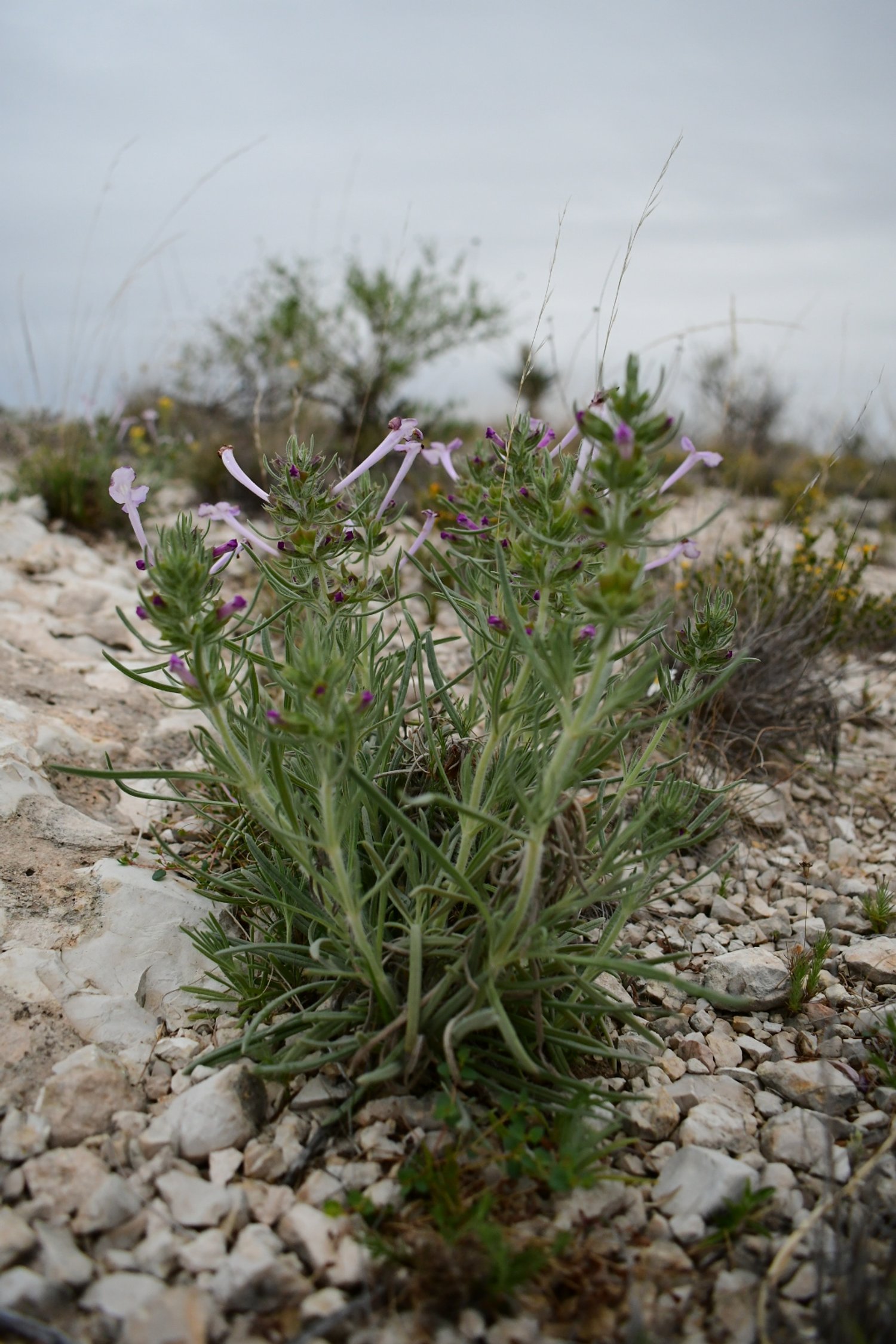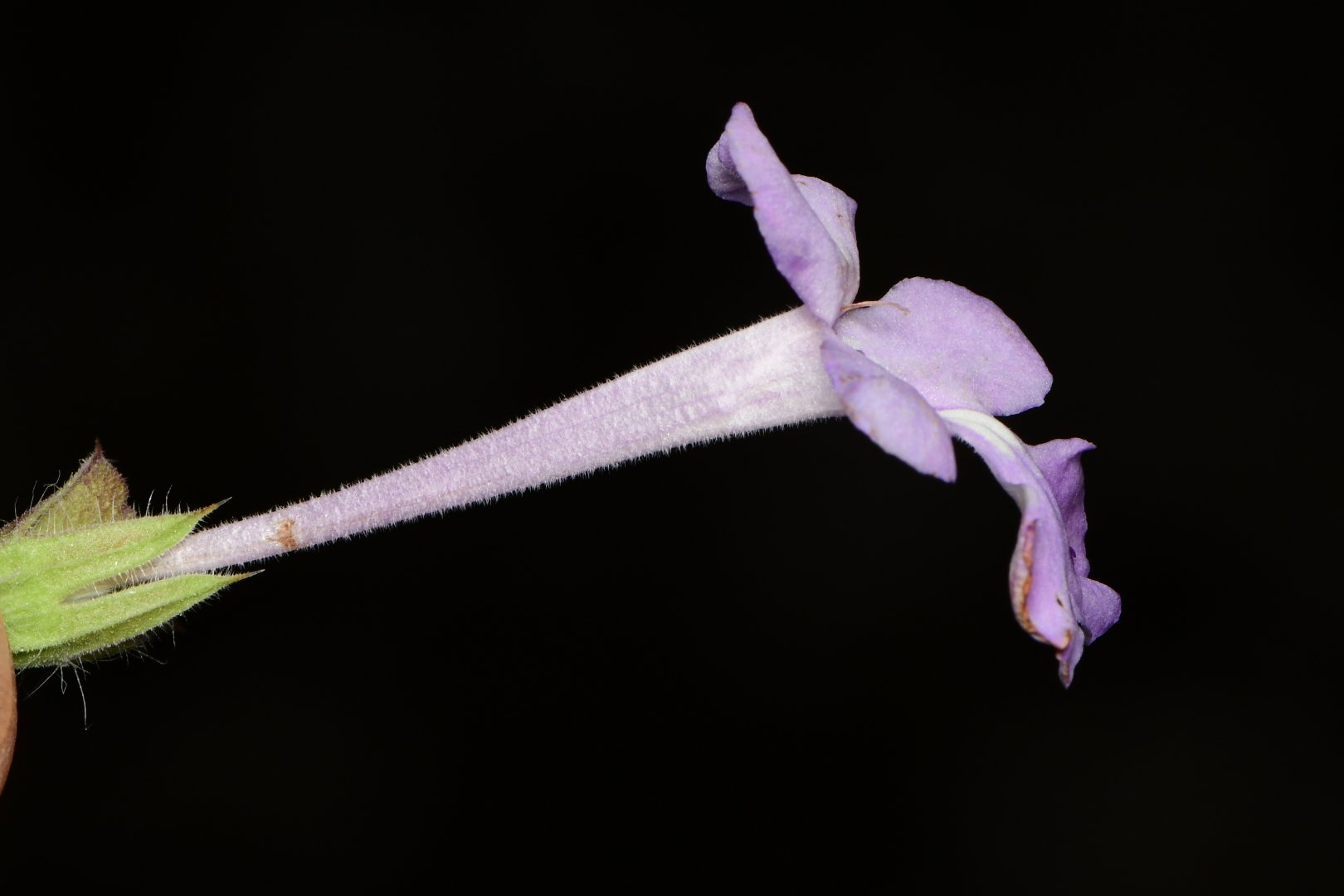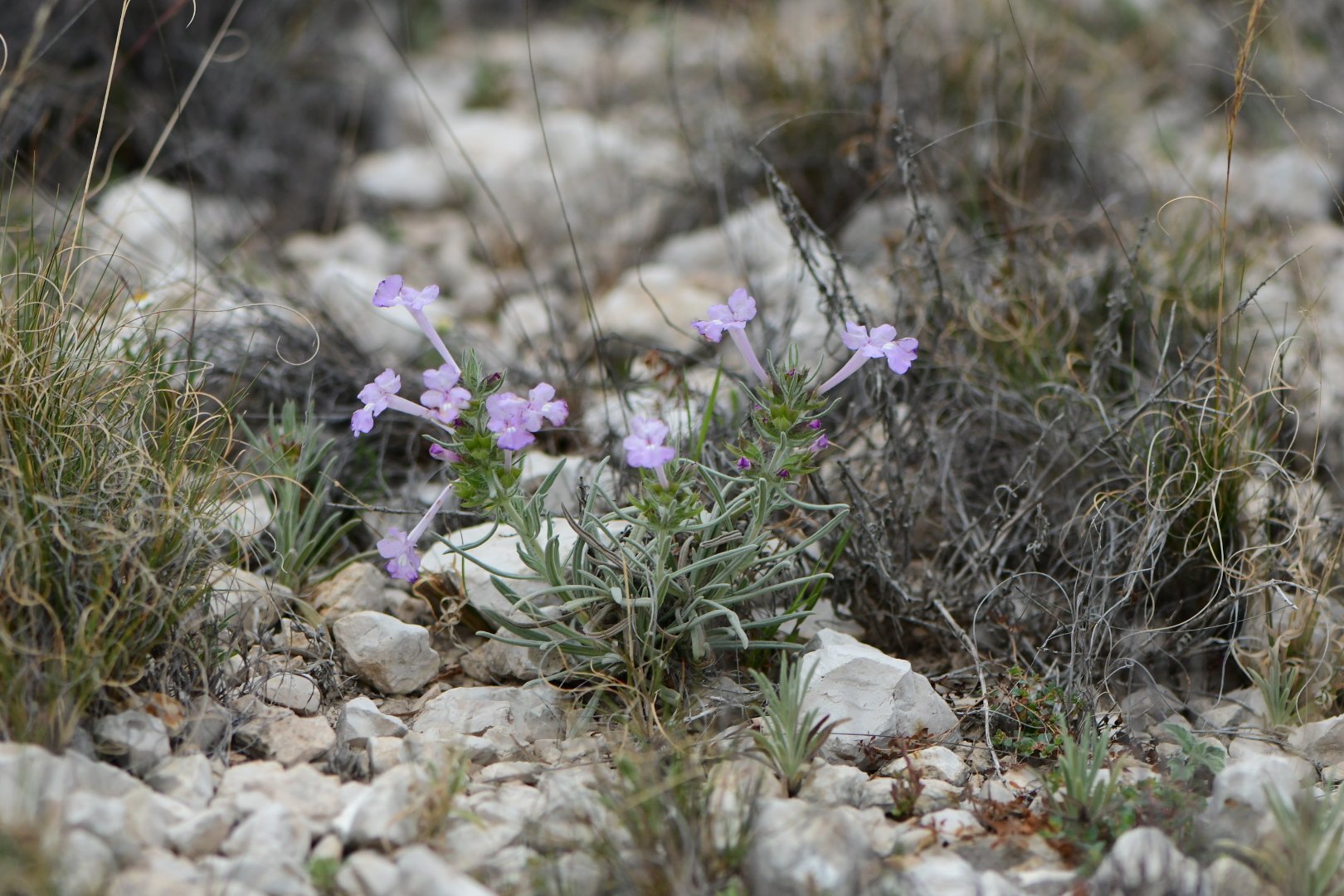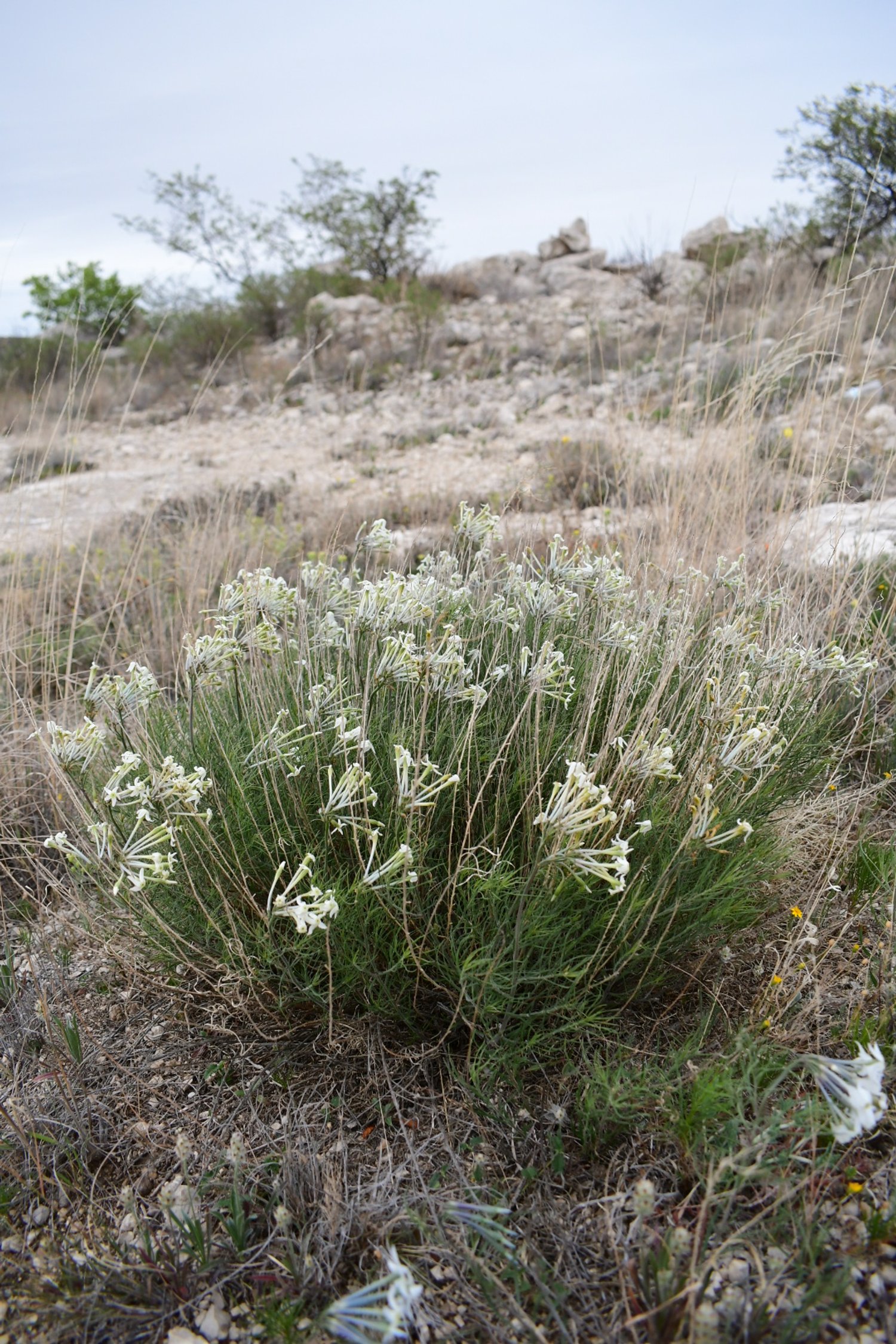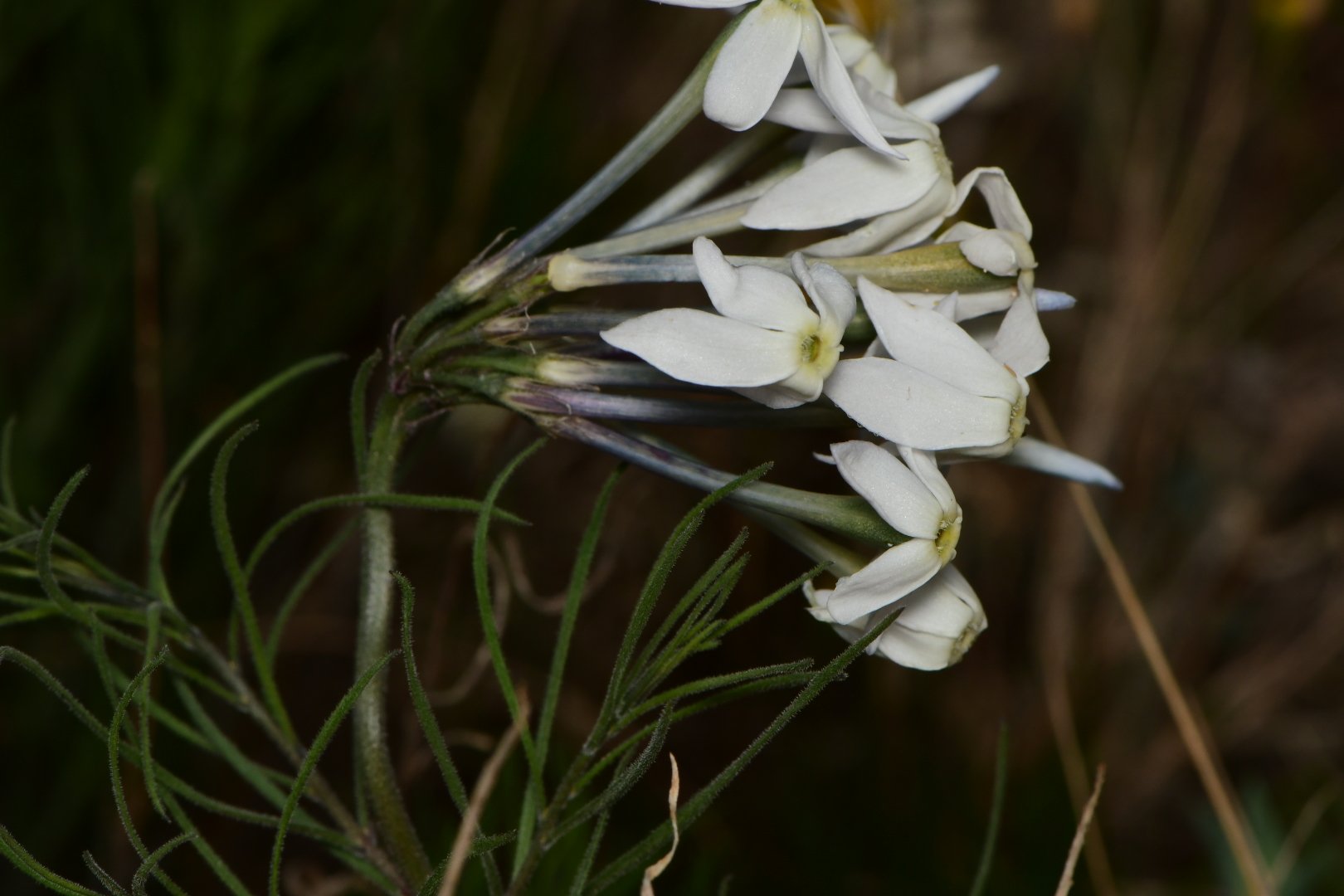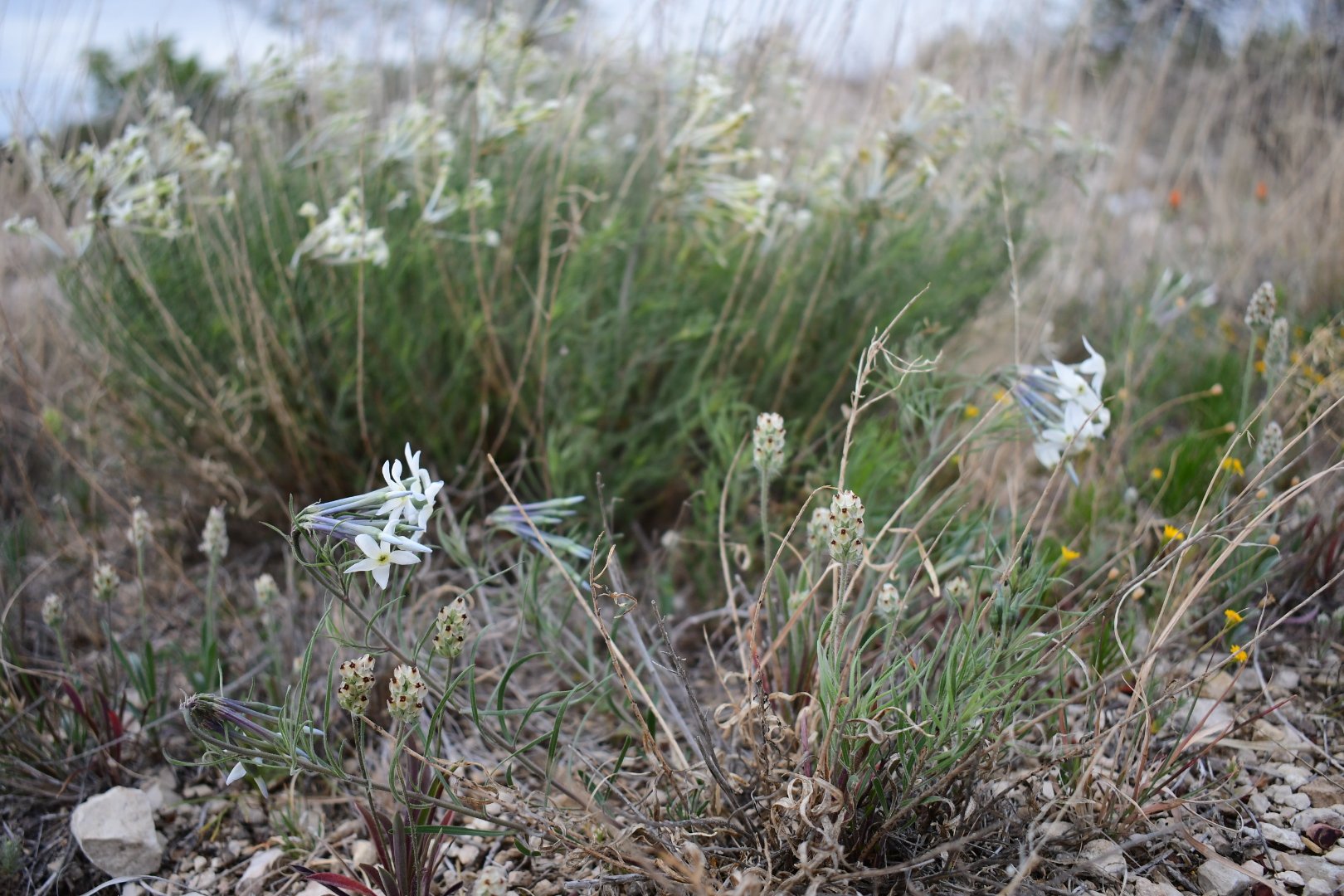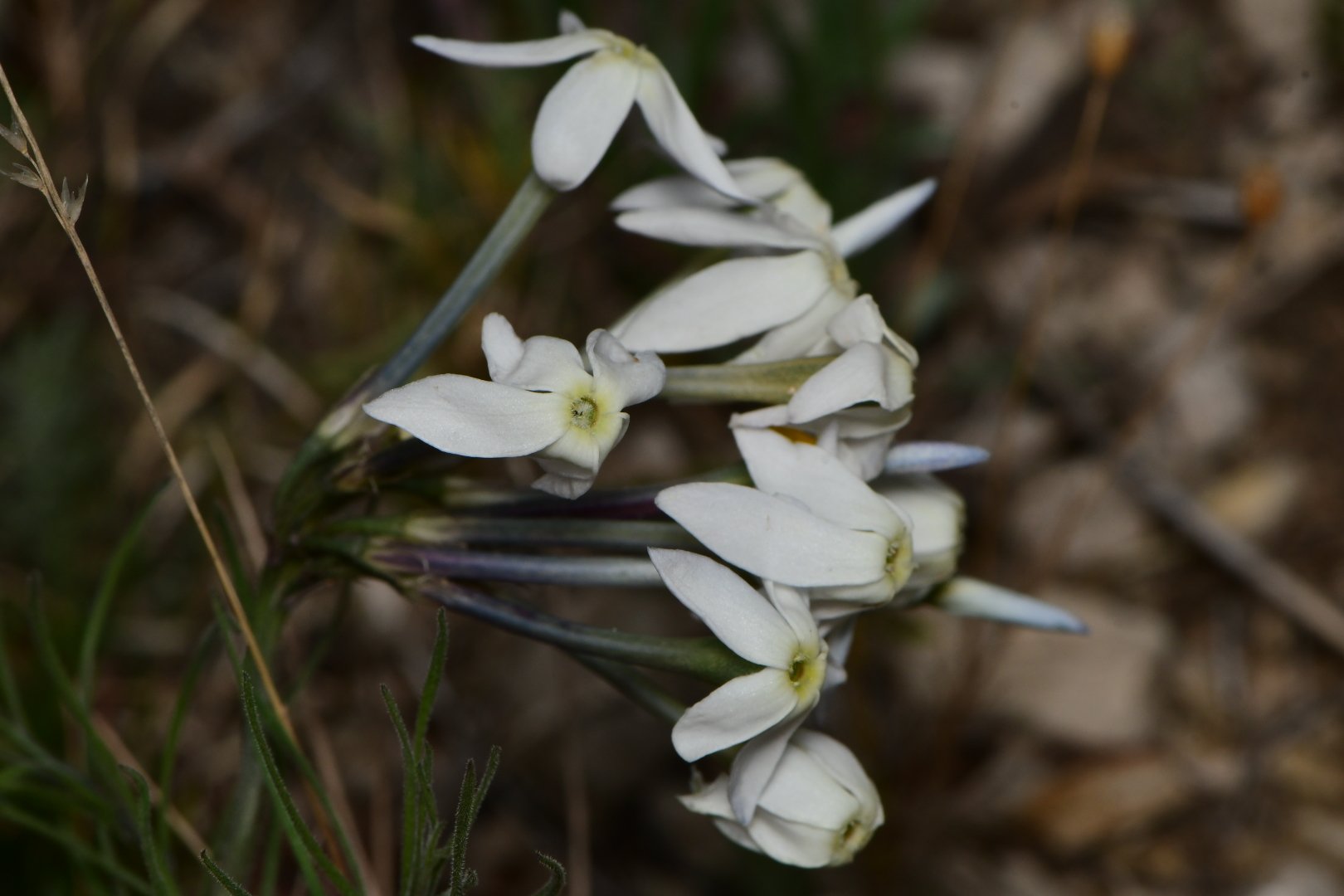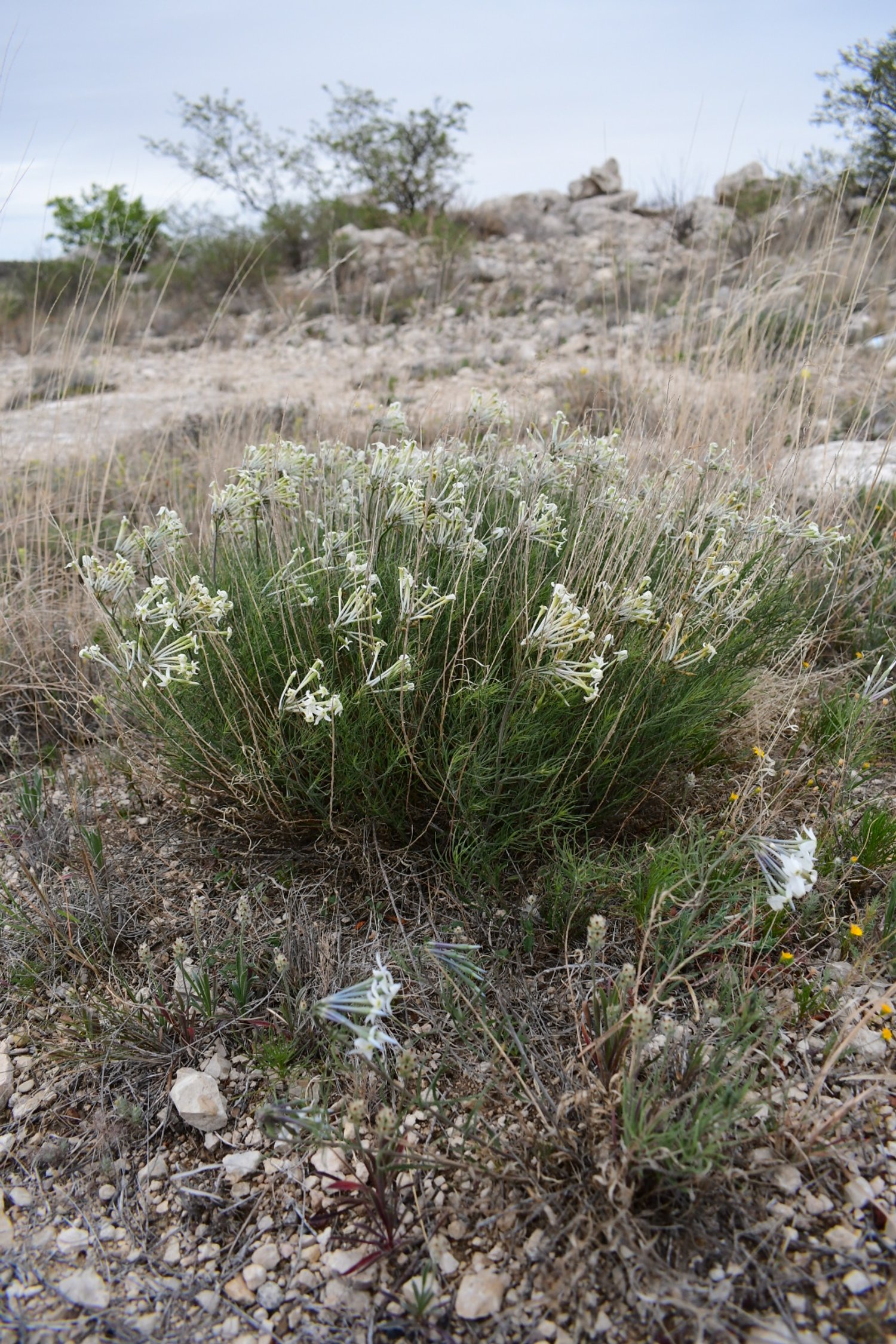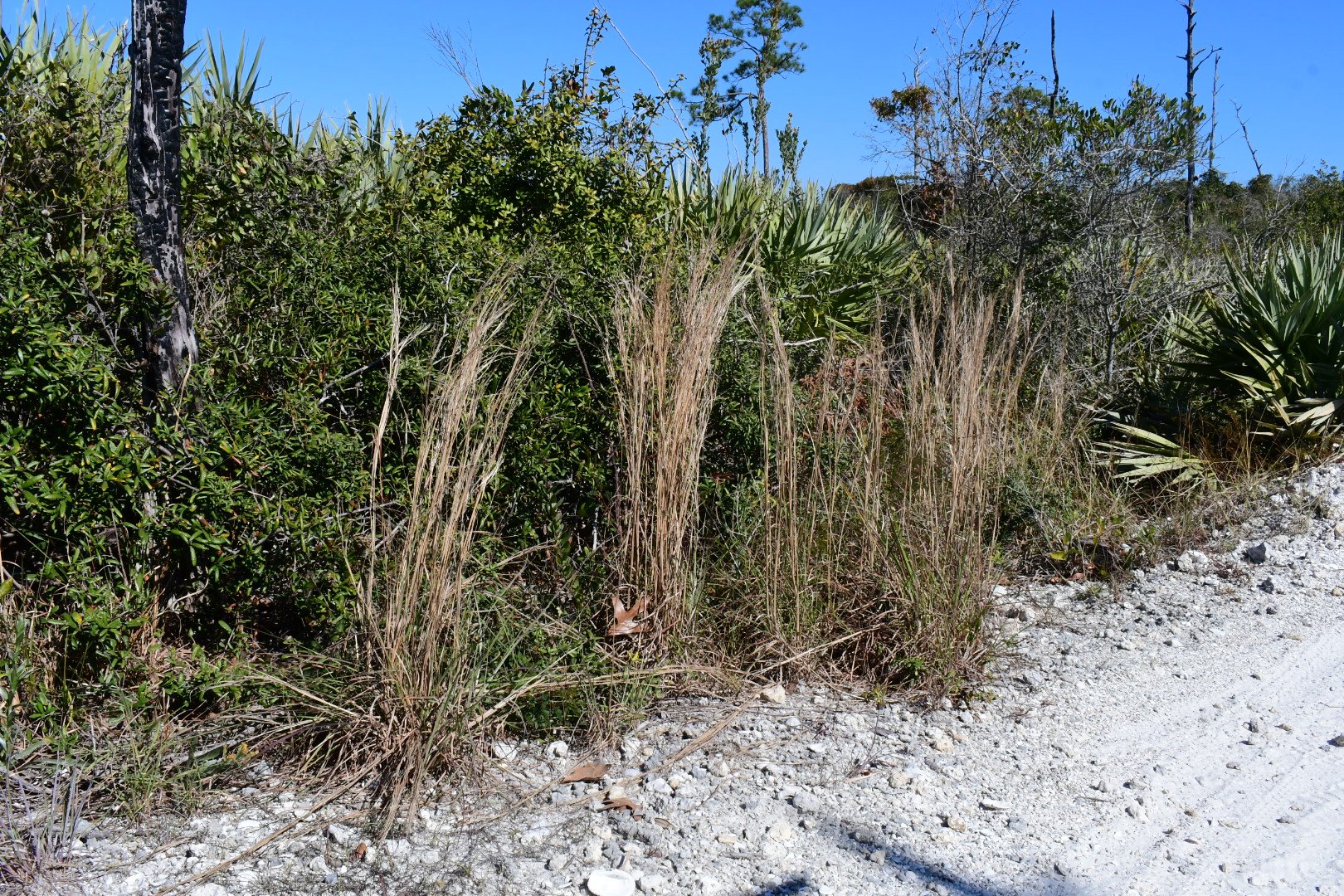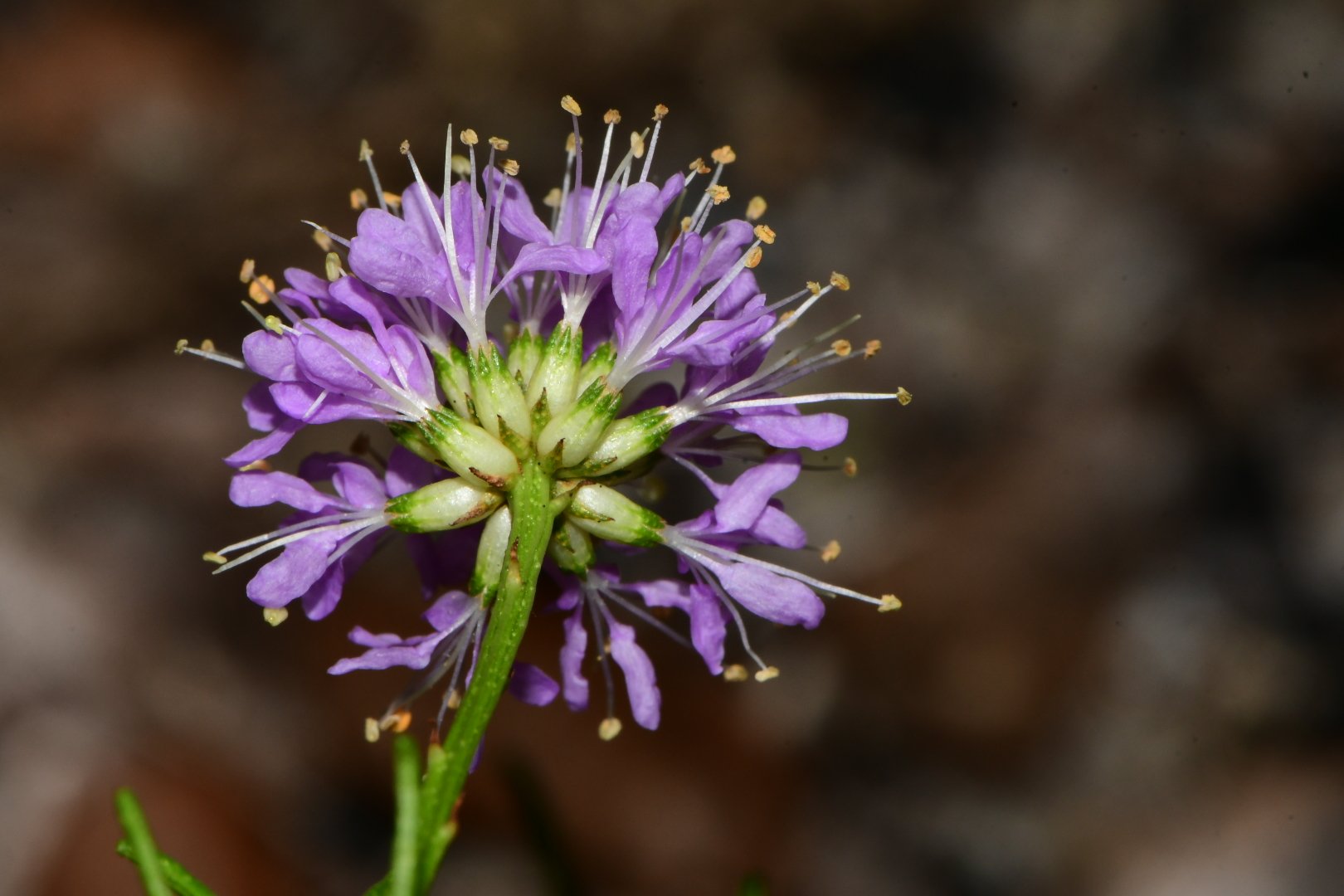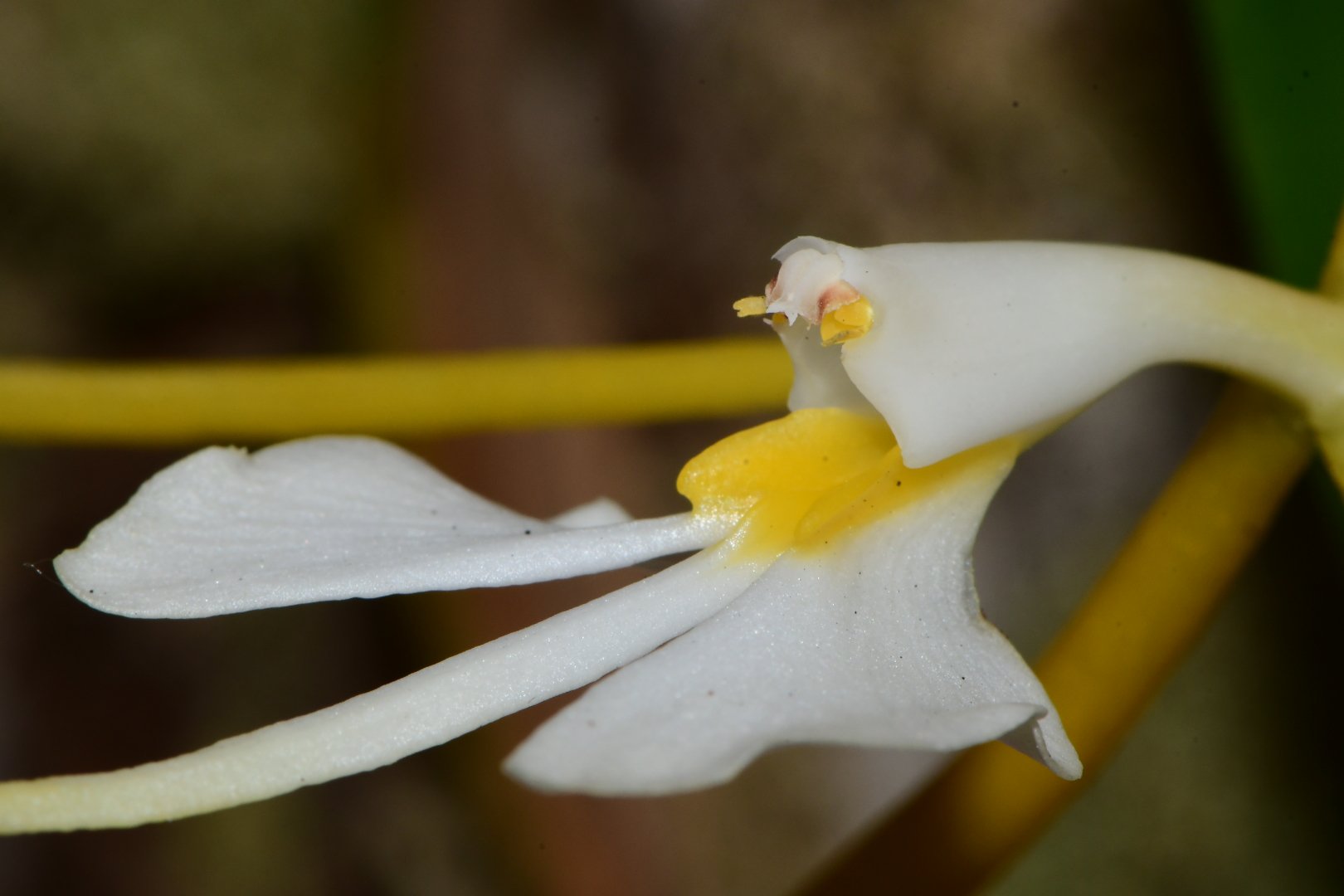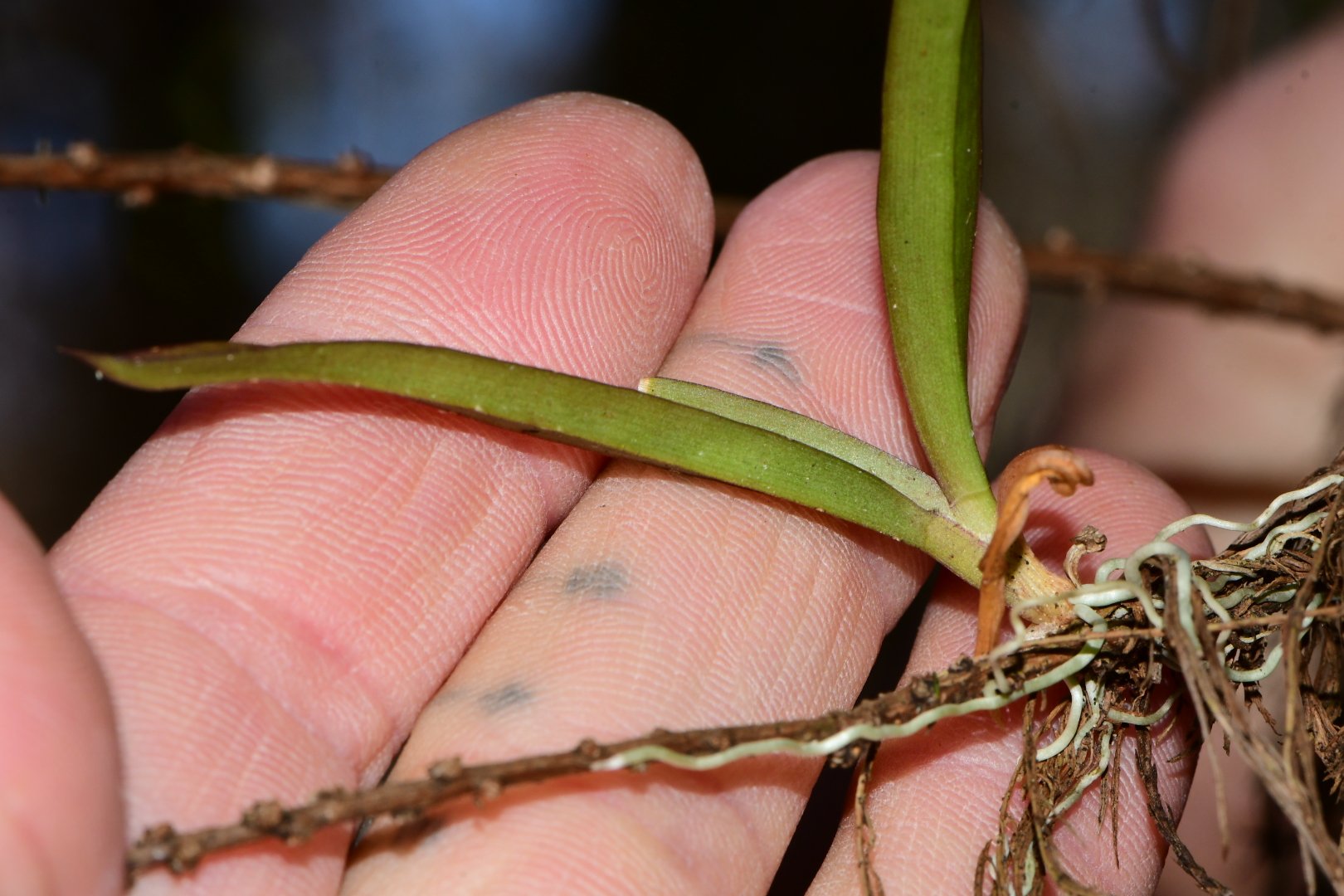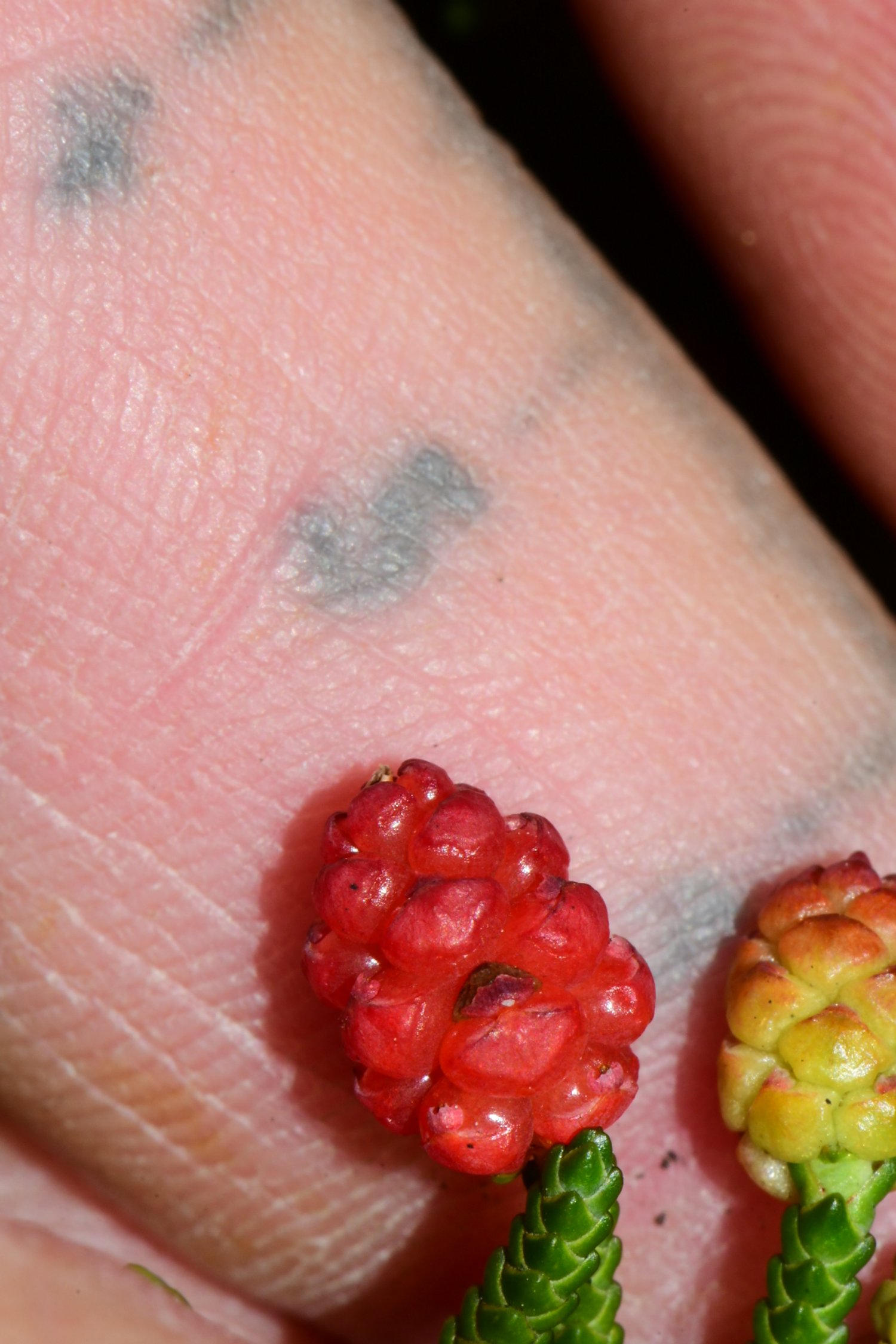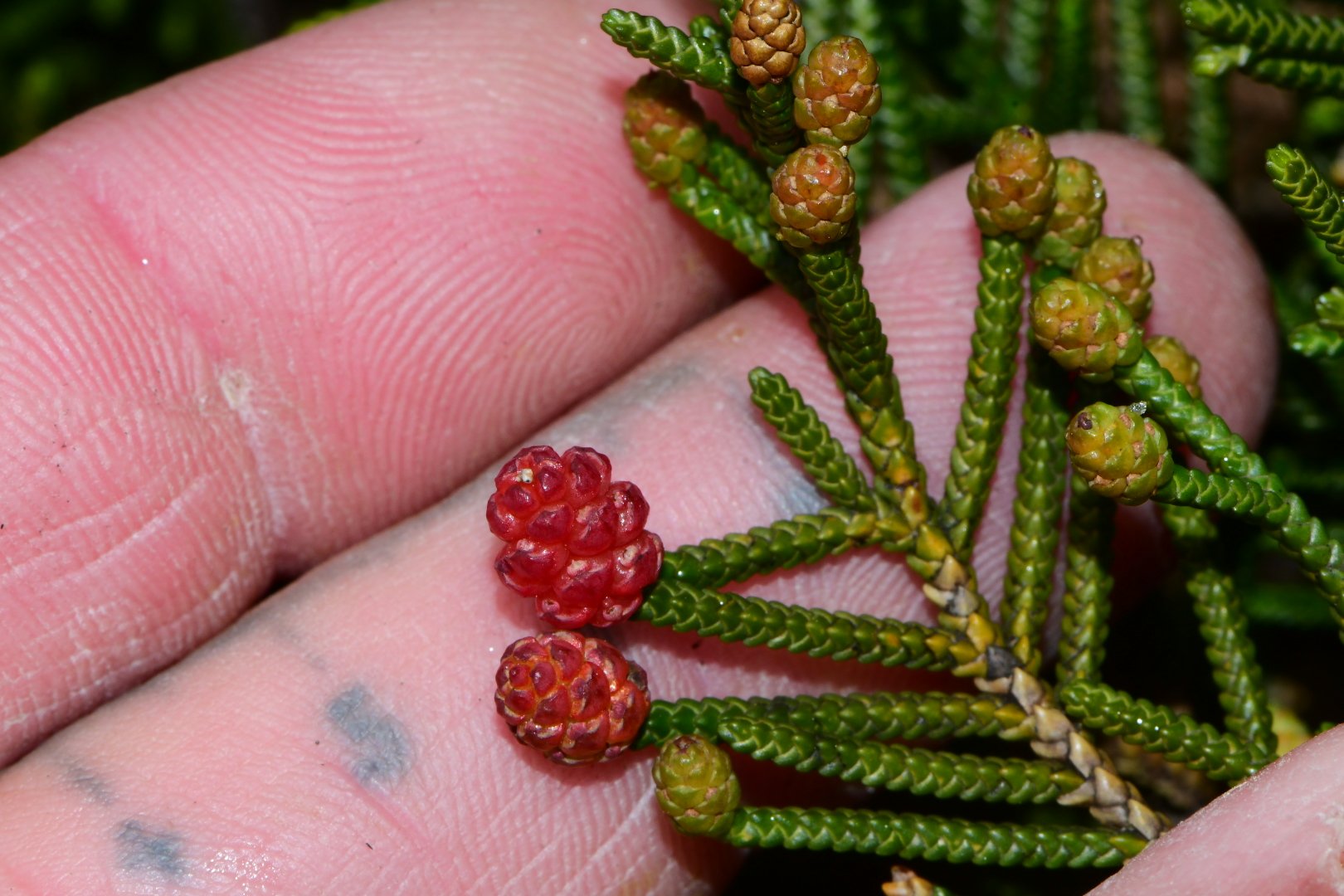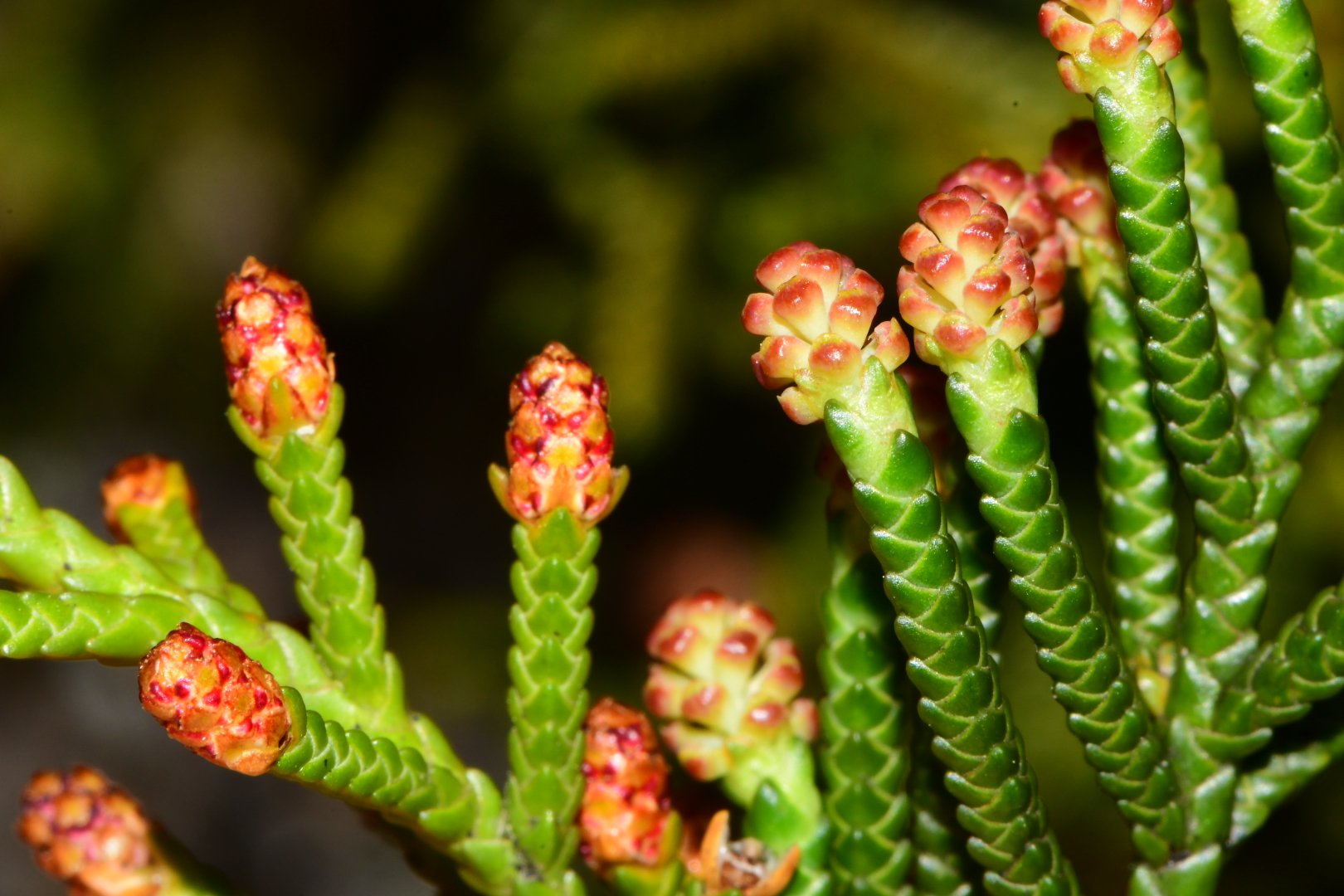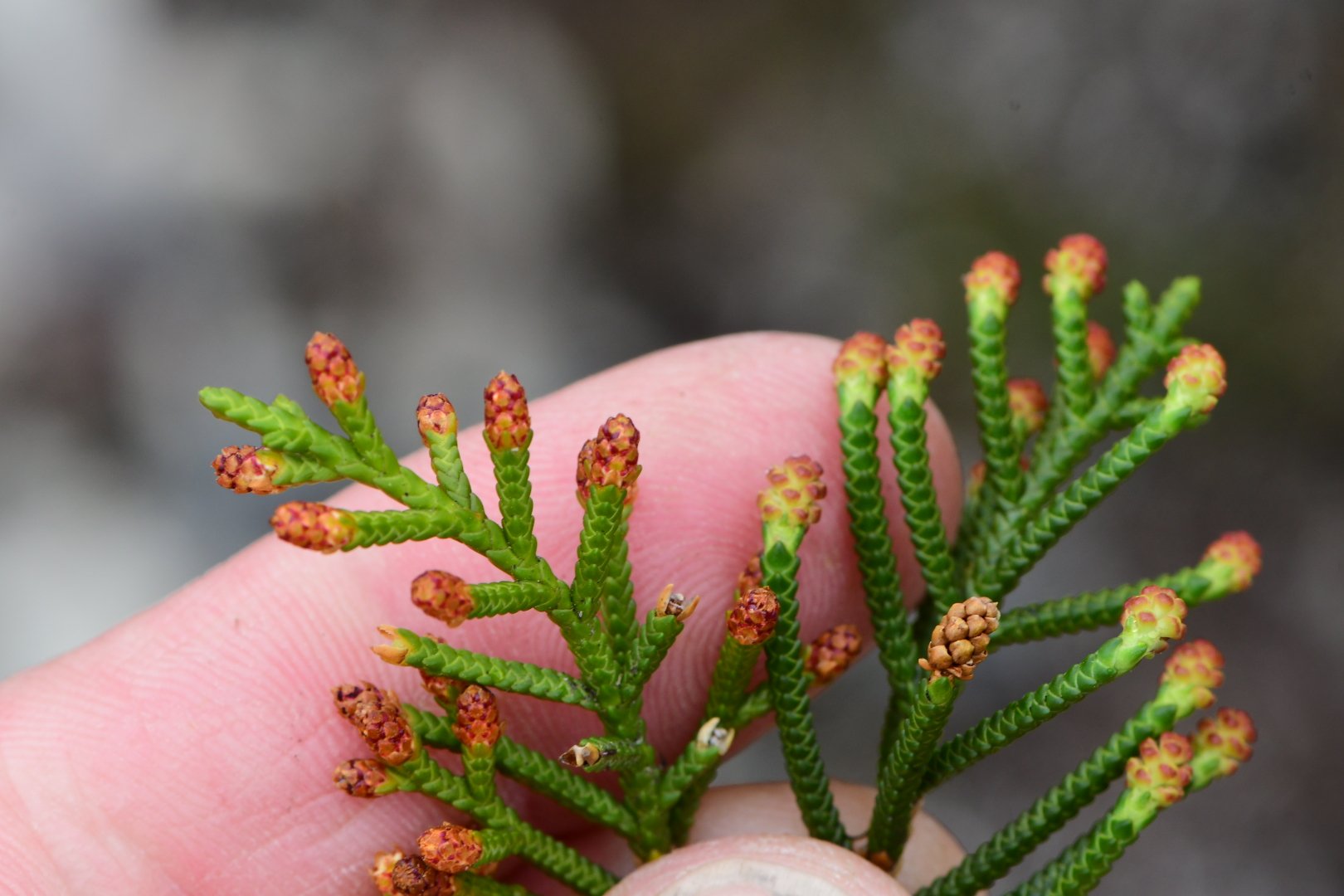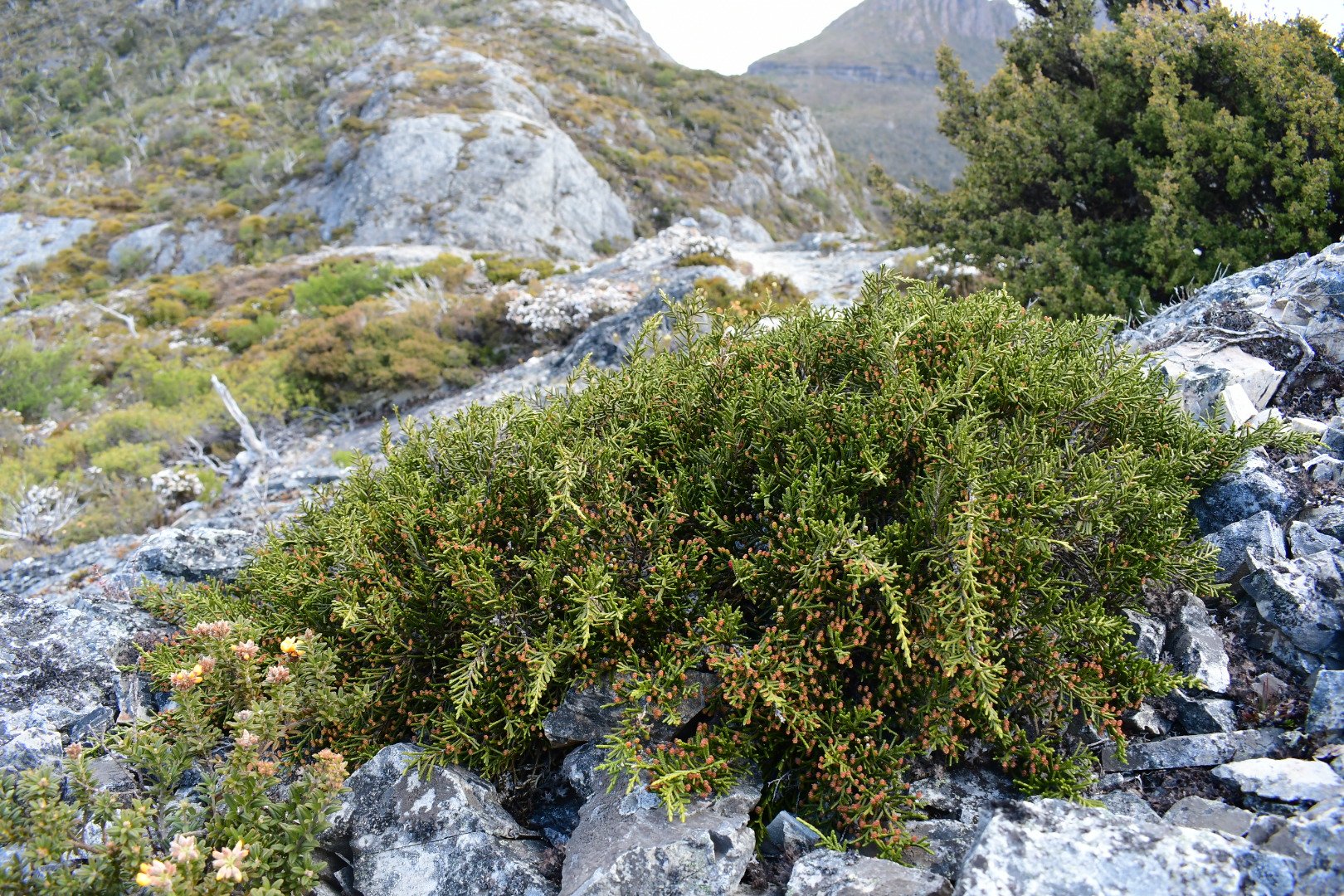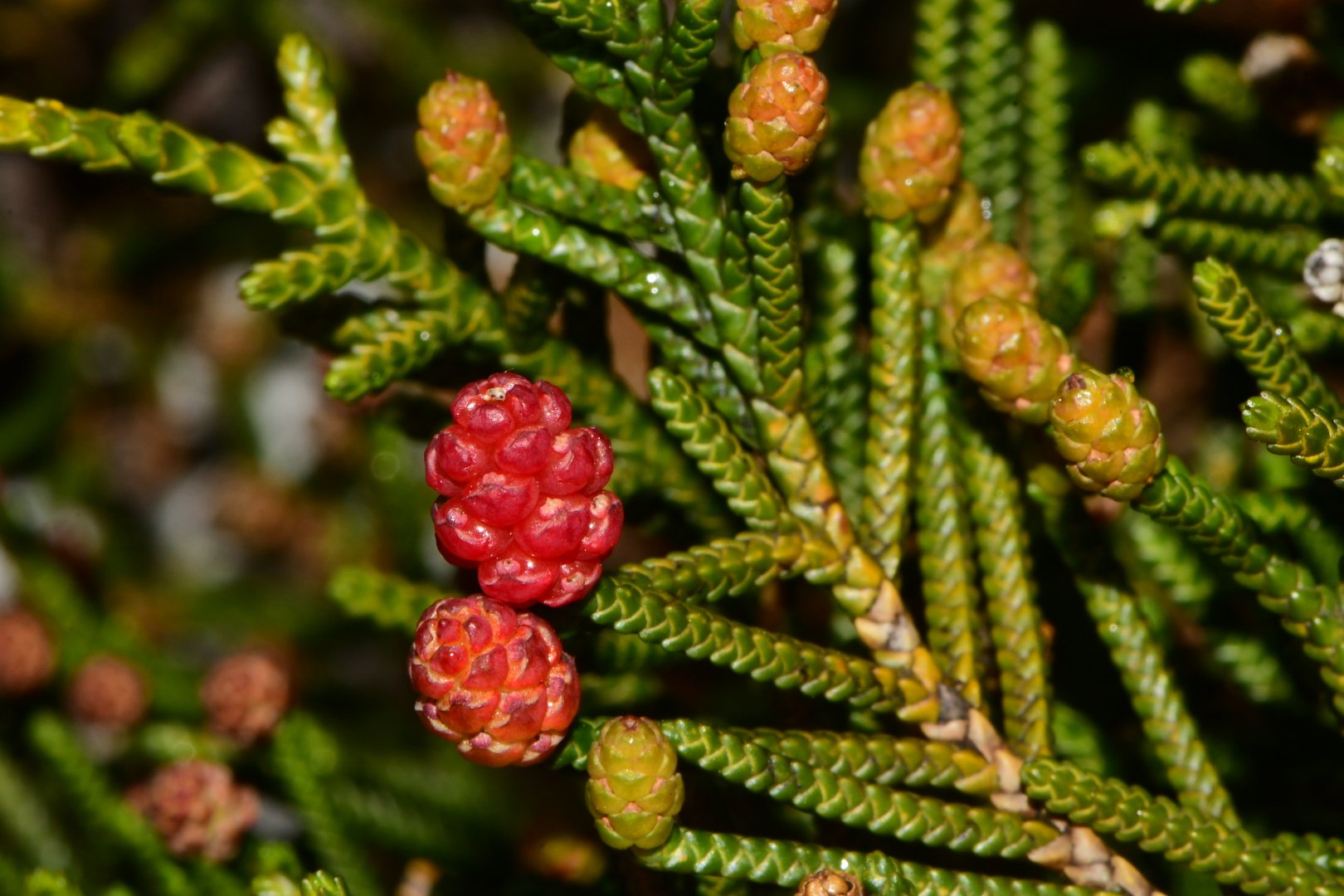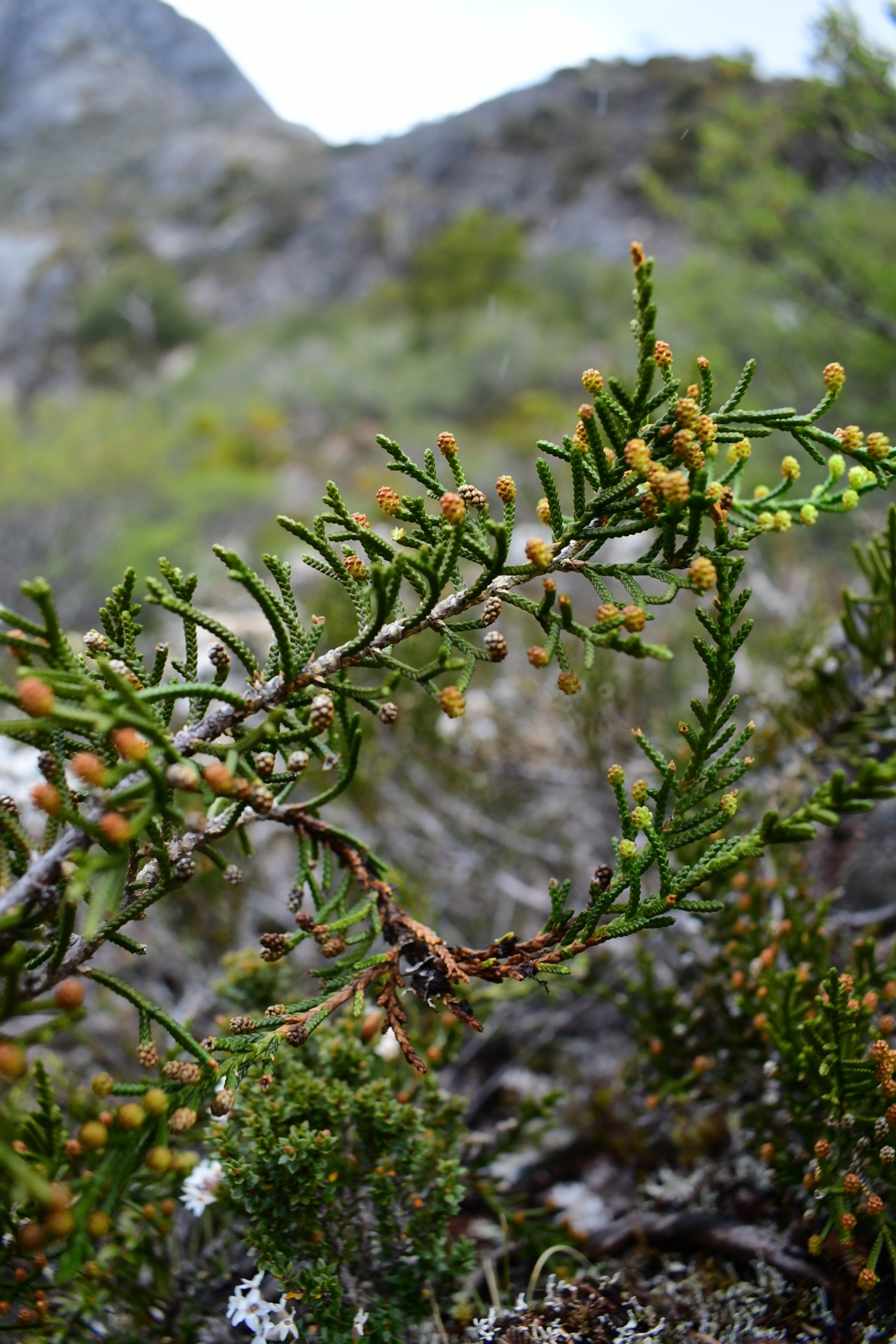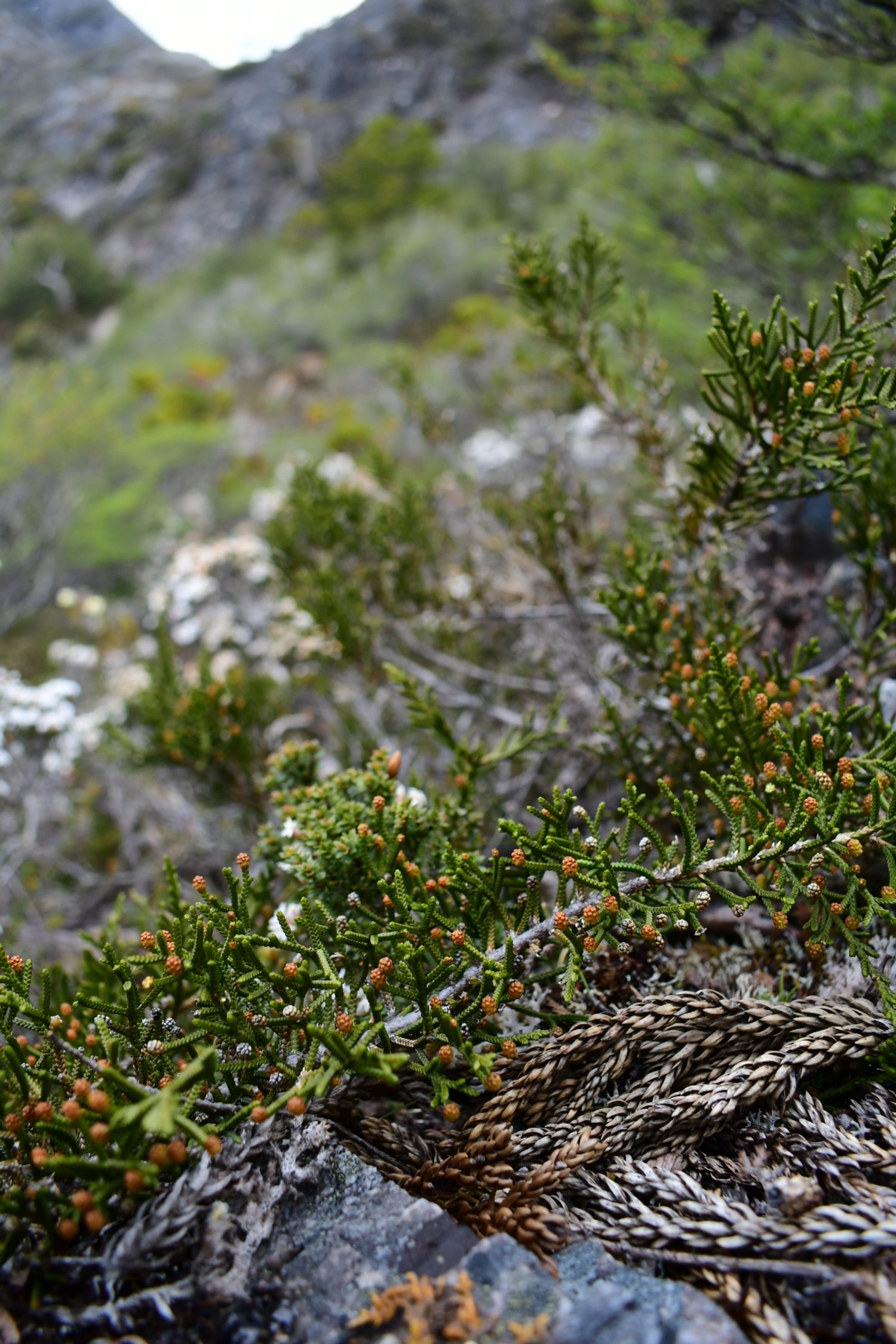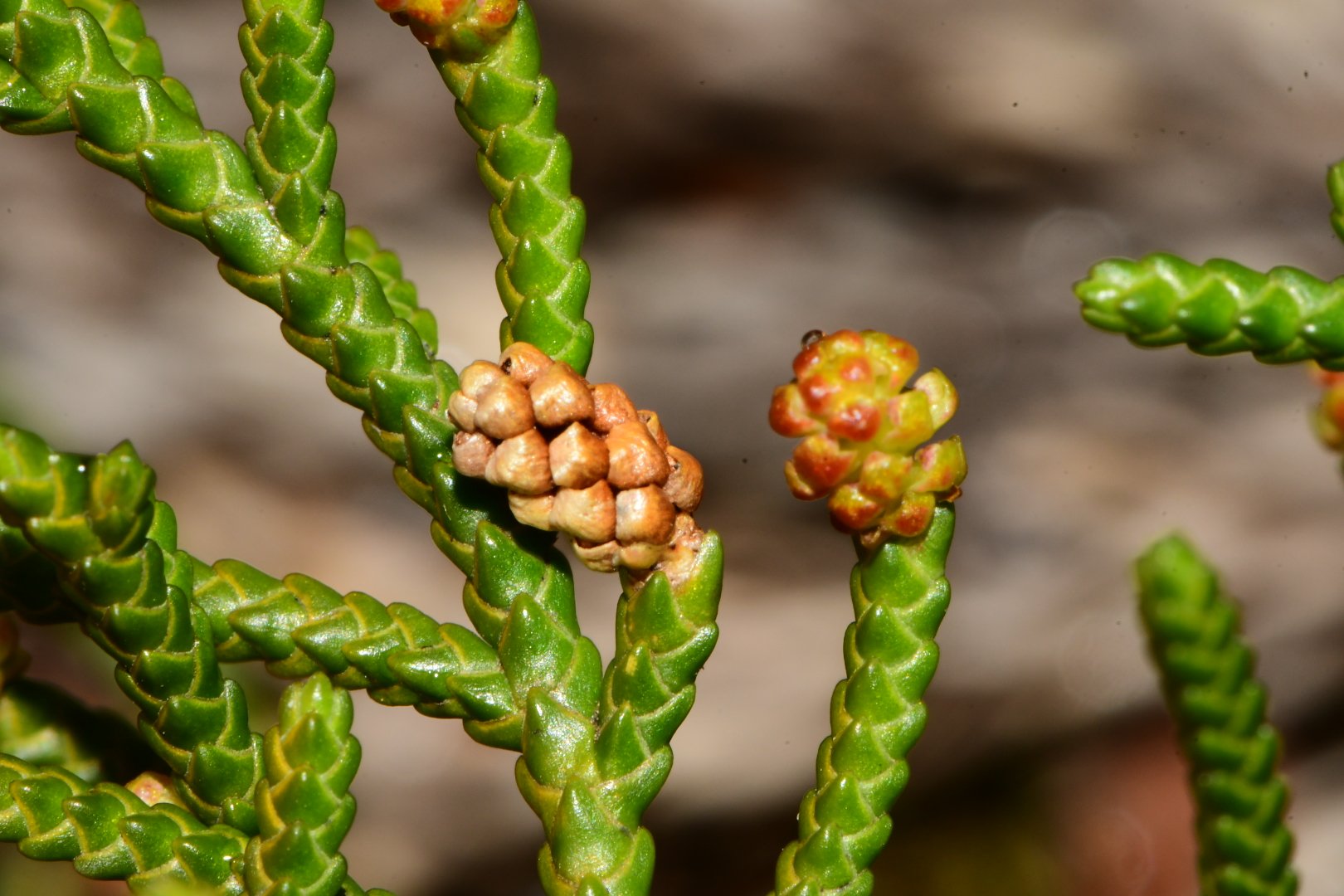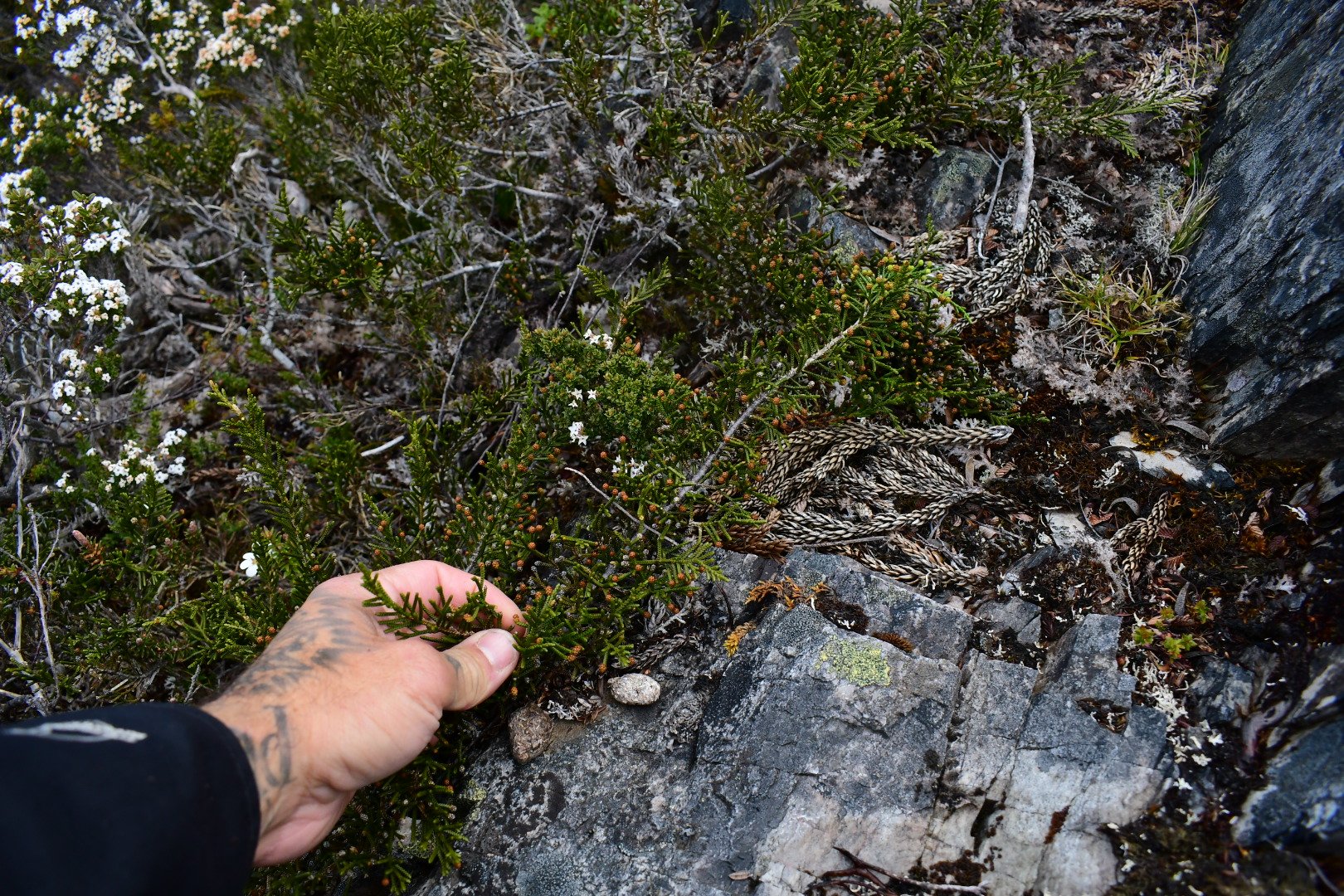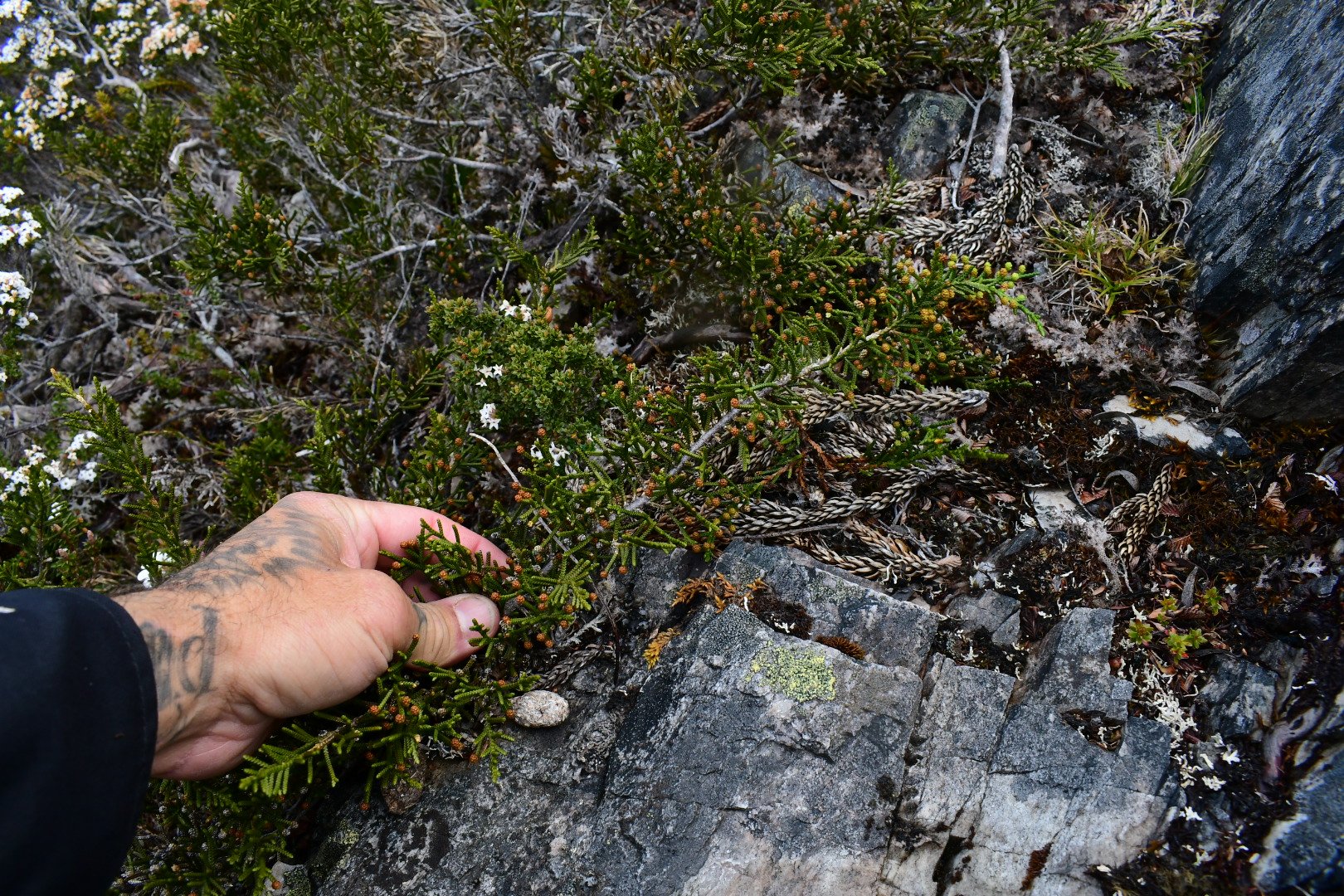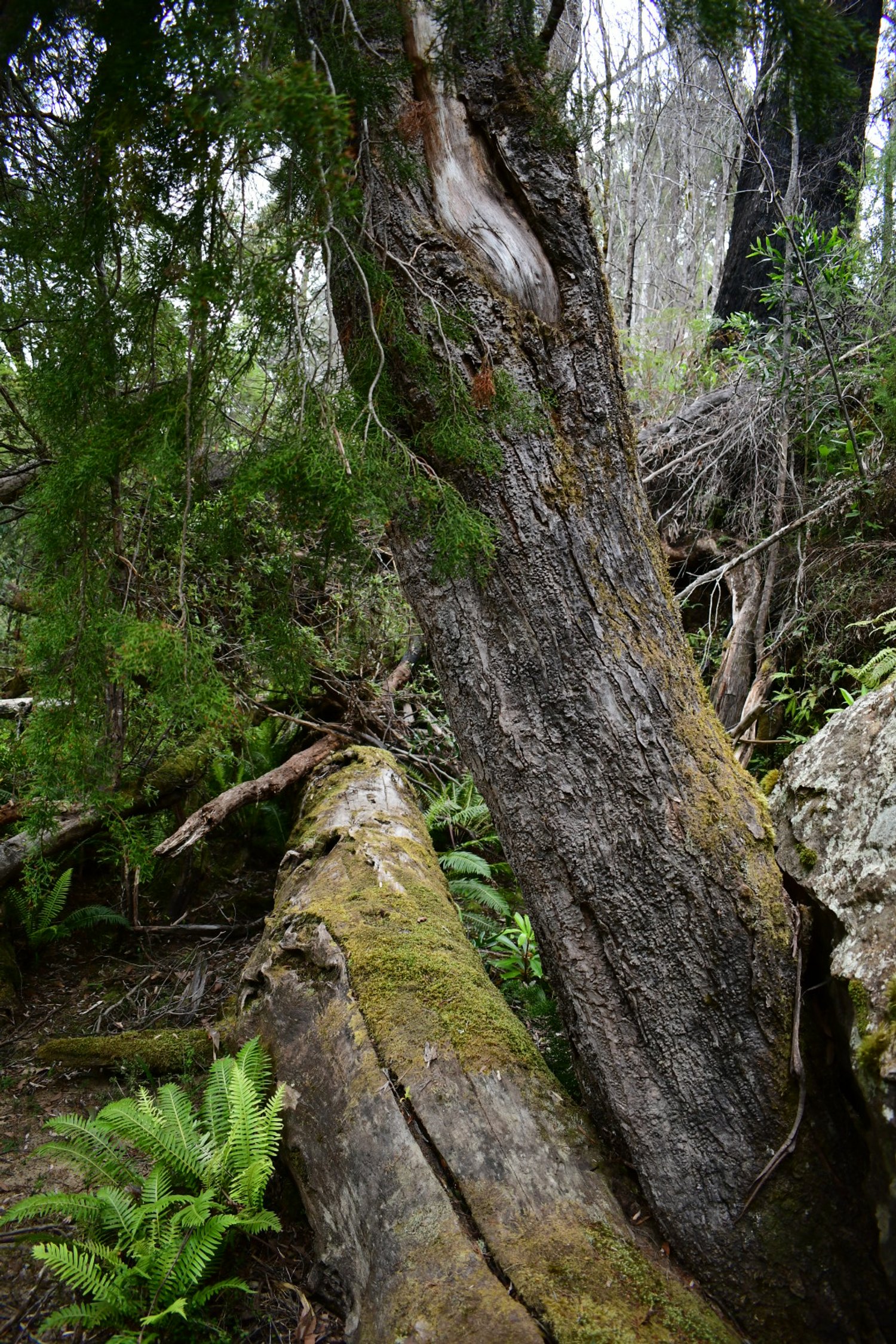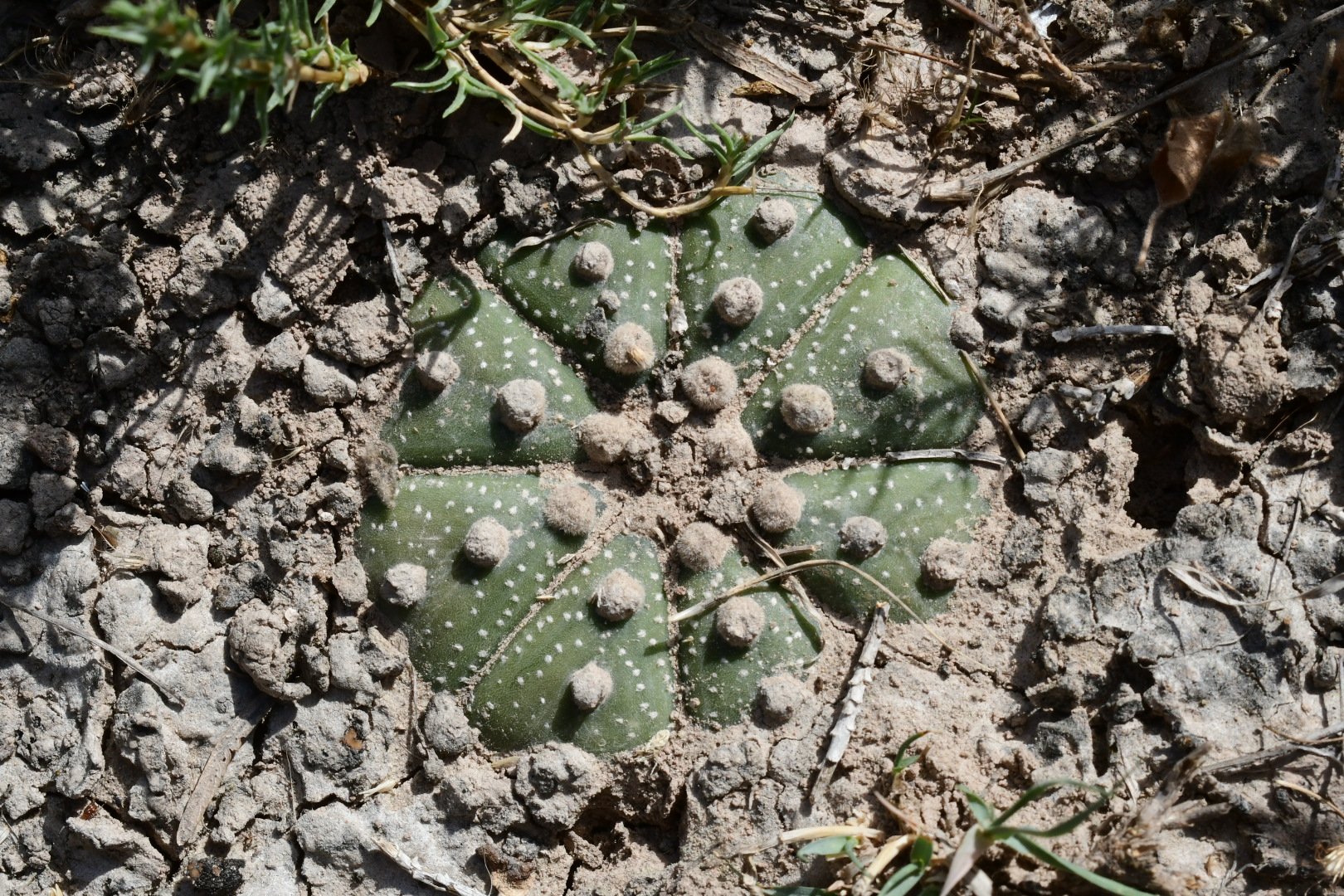Blue Cacti & Bat Pollinated Flowers
Emblematic Cactus of the Brazilian Cerrado, Cipocereus minensis is an endemic cactus that is ubiquitous in the Campos Rupestres biome of Minas Gerais Brazil. Campos Rupestres are thin-soiled rock fields full of tons of cool drought-adapted orchids, bromeliads, cacti & other plants that grow on the nutrient-poor quartzitic sandstone here. Many of these plants are known as lithophytes - plants that grow on rocks. Though the rainy season here can drop upwards of 20-30 inches of rain, the dry season caused by the ITCZ has caused all kinds of drought strategies to evolve.
Like many bat-pollinated flowers, Cipocereus flowers begin to open at night. Though the sepals and hypanthium are a beautiful blue, the flower itself is cream-colored (easier to see in the dark night) and produce prodigious amounts of nectar for its obligate bat-pollinators.
By morning, the flowers begin to close up. As the tepals and flower tube are blue and cacti have inferior ovaries, the fruits themselves are also blue when they mature and are edible (all cactus fruit is technically edible, though not necessarily palletable), reportedly having a taste and texture somewhat similar to kiwi.
We encountered Cipocereus frequently, always growing sympatrically with other wild-ass plants like drought-adapted Begonias, Syagrus palms, Vellozias, Encholiriums, spiny bromeliads, and other plants that are little known and would blow the minds of horticulturalists the world over.
Sadly, as all individuals of this species are obligate outcrossers and bats are basically the sole pollinators (rarely bees, as the flowers tend to close up by the time of day bees are active), if the habitat loses the bats, it will lose this cactus. This will of course cause ripples down the food chain, as the fruits of this cactus feed a ton of the local critters.
The blue color of the sepals/hypanthium is likely a way to protect the flowers from UV/Sun, since they are in bud during the day before they open at night.
Cippocereus minensis
New Zealand Botany: the convergent trait of RUSSETY Bronze leaf Undersides
More f*cking pictures of leaves...
But trust me, this is really cool.
Another trait I noticed among unrelated plants in New Zealand was bronze leaf undersides among a few of the plants there, most of them all "small" forest understory trees.
I noticed it first in Coprosma arborea, a wind-pollinated member of a very ubiquitous and species-rich genus in the coffee family, Rubiaceae. Not only did it look really cool,but it was extremely peculiar. Olearia rani, a member of the sunflower family, does the same thing. Carpodetus serratus, a small tree in the family Rousseaceae - same thing.
These subtle dark tones & bronzing made the leaves appear incredibly dark & indecipherable when viewed from below. I only noticed it because it was an absolute pain in the ass looking up to photograph them trying to decipher where the leaves were. It made the leaves appear incredibly dark. Then I started seeing it in a few different places & unrelated taxa.
When plant evolution seems to be repeating itself in a unique fashion in a particular location or environment, it is rarely ever coincidence. Carpodetus serratus, a little-known member of a family called Rousseaceae in the sunflower family order, Asterales, does the same thing (and also produces zig-zag, divaricate branching - see 2 posts back).
What could be selecting for bronze leaf undersides and what the hell would bronze leaf undersides do, anyway?
Then I remembered what a pain in the ass it was to photograph these leaves. The dark bronze tint to these leaves made it very hard to see them when I was trying to photograph them while looking up from the dark understory of a shaded forest. Could this to be a now-unnecessry adaptation to Moa? Hard to prove, of course, and there are no studies or research papers investigating it, but it seems highly plausible.
Zig-Zag branching (divarication), obvious differences in juvenile/adult leaf shape (heteroblasty), dark leaf undersides...
I love thinking about this kind of stuff. It is so fulfilling & almost somewhat beautiful - philosophically speaking - to see the living, vestigial result of what must have been an evolutionary arms race millions of years in the making.
Chonkosaurus, Legend of Cook County
Last Friday Al Scorch and I decided to rent a kayak and paddle around Goose Island in Chicago. It was the first warm day of the year, which is hilarious because it was already early May. We intended to just fuck around and do a plant survey and see what was growing on the remains of dead industry on a river that many have always known to be a smelly, polluted and foul body of water.
As a kid I remember almost falling in the water one time running from crackheads after painting graffiti. I remember feeding bits of bread to invasive Asian carp that would hang out around the pylons that protect the city's many bridges from getting hit by the errant river barge.
The full video is posted on the youtube channel, and of course most the plants that we observed were European invasives. The only native plant that was relatively common seemed to be boxelder, Acer negundo, in the Maple family, Sapindaceae.
What surprised us - as many people now know due to how ridiculously viral it's gotten - was the sight of what had to be a 60 lb snapping turtle perched on some gigantic rusty chains that were holding the rotting pylons together.
Though snapping turtles can tolerate some notoriously shitty water, it was still exhilarating to see such an old and large one hanging out right in the heart of the City. Not only that, but we saw evidence of beavers as well, and the people I spoke with at Urban Rivers who are installing a native plant bioswale only a half mile from where we saw the snapper told us that they've seen beavers and a wide variety of native fish species returned to the river in the last few years. It is great to see things that lived here for hundreds of thousands of years beforehand slowly come back to the place that they used to call home. Now, all someone needs to do is go in and cut back and remove the invasive Buckthorn and plant some native Chicago plants in their place. It's astonishing how quickly wildlife comes back once you plant native plants. All you have to do is plant the natives, and everything else will slowly return.
Chonkosaurus tshirts/hoodies available here : Chonkosauurus Hoodies/Shirts
“Edaphic Aridity As a Factor in Angiosperm Evolution “
Great paper by the well-known botanist of the late 20yh Century Daniel Axelrod regarding how dry rocky microsites can serve as sites of plant speciation, containing a cast of species that completely differs from the surrounding more mesic, wetterforests.
https://drive.google.com/file/d/1I8koFJEqeue2azVnoSx54EHbq2fAxYNS/view?usp=drivesdk
Lupine diversity in Florida
Here's three species of Lupine that can be encountered in the Florida Panhandle. Statewide, there are 8 taxa that occur natively. Many of these have “quasi-unifoliate” leaves consisting of a large leaf with two heavily reduced, “vestigial” leaves at the base of the single leaf on either side.
The three species here are :
Lupinus villosus
Lupinus westianus (shrub)
&
Lupinus diffusus.
Taxodium ascendens in the Florida Panhandle
One of three species in the genus, Taxodium ascendens has spiraling sprays of appressed scales and forms extensive groves of dwarfed trees with bottle-shaped trunks in 24 inch deep water.
The trees are covered in both Tillandsia usneoides and the lichen for which aforementioned member of the Bromeliad Family was named, Usnea sp.
Included in this post are images of dissected flowers of Nymphaea odorata, a basal angiosperm with an odd pollination biology consisting of protogynous (female first) flowers temporarily trapping beetles and then becoming male (staminate) on the 2nd and 3rd day, after which the entire flower sinks and the fruit matures below the surface of the water.
The Rarest Milkweed in Texas Just Got An Endangered Species Listing…
The words “Prostrate Milkweed” don’t roll off the tongue so easy, but I guess it’s easier for most than “Asclepias prostrata”. Whatever you call it, it’s one of the rarest and most elusive members of the genus in North America, and it’s specialized to growing on the sandy, dry soils of the thornscrub landscape of the South Texas Borderlands.
The genus Asclepias has 140 species in it - some are common, some are rare. Asclepias welshii, from the coral pink sand dunes of Southern Utah, is another bizarre one. Then there is the clade of 4 species of “Dwarf” milkweeds from the Four Corners Region. Asclepias meadii is another extremely rare one from the midwest, which has lost a lot of ground to habitat destruction (ie conversion to agriculture, human sprawl, and cancer-like growth). But Asclepias prostrata is certainly one for the evolutionary record books. Why exactly did it evolve this creeping habit? Where is the adaptive benefit of staying so low to the ground? How about those undulating leaf margins? Do they serve some purpose in mitigating leaf exposure to the hot South Texas sun? And what about those underground tuberous roots that enable it to go dormant during bust cycles of long drought and heat? Why does it sometimes disappear for two years, apparently laying dormant, only to suddenly re-emerge with the onset of cool rains?
The stems and leaves of this plant are covered in tiny hairs. This pubescence of course mitigates leaf temps and increases boundary layer humidity, preventing evapotranspirative moisture loss from leaf stomata. Like most milkweed species, I assume the pollinator to be some kind of large bee or wasp, drawn in by the nectar in those five hoods (the teeth-looking appendages) and the sweet and fragrant smell they produce. A foot of one of these insects must slip into that trapdoor of the stigmatic slit, pulling a pollinium out with it and transporting it to another flower. Milkweed flower anatomy is a whole other world, replete with its own vernacular. I did a video on it a few years back for the curious.
Anyway, does the endangered species listing MEAN much? Not really, not in the state of Texas, where property rights trump everything and many people will see little point in keeping anything around that doesn’t directly benefit humans, at least in the short term. Yet it still draws attention to this plant, and this plant needs all the attention it can get. Recently, botanists from San Antonio Botanic Garden collected fruits and seeds of this plant before it got its endangered species listing, and had a contract grower for US Fish and Wildlife Service grow them out. Plants were then accessioned at the botanic garden. A few other native plant growers in the region of South Texas have also propagated this plant and so far, have had luck with it. Sadly, like many species in the region, the true hope in protecting this species now seems to lie in its ability to tolerate human cultivation, as ex-situ conservation seems to have a lot more potential to save the species than preserving habitat. Habitat for this plant is certainly NOT protected, and populations of the plant have recently been destroyed for both border fence construction as well as by inadvertent road-grading before the plants were able to set seed. Making more people aware of the plant, and showing them how cool it is and why its worth being proud of and trying to protect, is all that can really be done at the moment since habitat is on the chopping block as the population of the region grows and commercial retail and tract house sprawl spreads out.
Peyote (& other cactus)POLLINATORS of South Texas
Acmaeodera is a genus of wood boring beetle that was recently observed on flowers of Peyote and Thelocactus in the South Texas borderlands. I assume this species of beetle also pollinates many other species of cactus. The type specimen was originally collected on a Opuntia flower in 1966, yet this is the first record of it on a peyote. The larvae bore into dead wood of Karwinskia humboldtiana (Rhamnaceae), Prosopis (Fabaceae) & Vachellia rigidula (aka Blackbrush”Acacia”, Fabaceae).
Quite likely the beetles are in the flowers eating pollen and floral parts, yet in doing so they inadvertently transfer pollen from anther to stigma, and ideally between respective flowers of different individuals for cross pollination. As Peyote flowers are self-fertile anyway, however, even transferring pollen between anther & stigma of the same flower would ensure higher seed production.
Seeing relationships firsthand and then wanting to know more eventually leads to understanding that indeed, everything is connected. It creates inadvertent ecologists out of us. In order to have the beetles, one needs the shrubs (Karwinskia, Vachellia, etc.). Everything in an ecosystem has a function, though we may not understand how all the pieces fit together at first.
LIVING RELICTS OF THE DISTANT PAST
On a bizarre geologic formation in West Texas grows the only population of a rare oak species known as Hinckley's Oak. It forms extensive thickets here on a geologic formation known for its many nooks and crannies due to a magma plume that swelled up beneath it like a bubble in a pizza crust, distorting & exposing all the successive layers of sedimentary rocks beneath.
This oak doesn't get tall here - maybe 3' tops. The leaves themselves resemble little spiny blue holly leaves, leathery with red petioles.
Plants with really small geographic distributions are always fascinating. Such is the case with this rare oak. In the case of Quercus hinckleyi, it's whats known as a paleoendemic, meaning that in the distant past it was once more widespread, but as the climate shifted & the surrounding landscape became hotter and drier and generally more inhospitable, populations of this tree at lower elevations died out and it became relegated to this higher, somewhat shadier and cooler "sky island".
Whats even more bizarre is that in cultivation this oak reaches heights of about 20' tall, like at San Antonio Bot Garden but here in the mountains of West Texas near the Mexican Border, it tops out at about 3' tall, & many individuals are no taller than 12 inches, forming little colonies with multiple stems, each colony likely a single genetic individual growing up through fissures in the limestone substrate below.
Standing up here on this slope as the sun hung low in a murky sky, I tried to imagine what a woodland composed of these oaks must've looked like 12,000 years ago & how the climate & surrounding desert must've changed since then. Moments like that are one of the most addicting things to anyone interested in botany - Gaining an understanding and a knowledge of the land you live on & how all the different organisms & environmental factors in it interact is part of what seems to make a fulfilling human life. It gives us a contextual setting in which to put ourselves & our own conscience & sentience, so that this often fucked up, insane world begins to make sense.
Pollination via goth butterfly
POLLINATION VIA GOTH BUTTERFLY
Spend some time in the Chihuahua Desert & aside from the abundance of limestone one of the first things you'll notice is a lot of plants have long, narrow tube-shaped white flowers & bloom or at least stay open past dusk.
Oenothera, Mandevilla, Acleisanthes, Amsonia, Datura - all dusk-blooming flowers that are pollinated primarily by moths. Moths are everywhere, but few people ever think of what they're doing or how important they are to the ecology of these fragile, beautiful, rocky places.
Moths do a lot of pollinating in the desert, & in turn they have driven the evolution of a lot of the plants that occur in these places. It's so hot during the day that - if you're a plant - to expose delicate floral tissue to the intense ultraviolet and infrared energy requires some costly evolutionary advancements...or you can just take the easy way out, avoiding the sun altogether & blooming at night.
Salvia whitehousei grows on the undulating limestone hills where the Edwards Plateau starts to turn into the Chihuahua desert. Like many plants here, the leaves are narrow & covered in hairs that make them appear chalky white. Like many moth-pollinated flowers, it has a long narrow tube flower with an opening that's much too small for a bee or fly to crawl inside. Most Salvias are pollinated by bees or hummingbirds, especially, but Salvia whitehousei is pollinated by moths.
As the flowers stay open during the day, they can also surely be pollinated by butterflies or long-tongued flies, but as I photographed this incredibly cool plant from a banger fucking landscape, I heard the pattering hum of sphinx moths, & watched them hit the flowers, hovering like small hummingbirds.
A moth-pollinated Salvia. Moths drove the evolution of one of my favorite genera of plants. I didn't know this when I came out here to look for it. As this is an uncommon plant with a narrow distribution, I didn't see anything regarding moth pollination of this species in the literature. But standing here at dusk in the desert I clearly saw moths pollinating this species. I started laughing. How fucking cool. Evolution is a fantastic beast.
Central Florida Sand Scrub
Dickinson State Park (named after a dead honky who wrecked his ship here four hundred years ago) North of Ft. Lauderdale is a gem of vestigial habitat left amidst what is generally a huge autoslum. It hosts a number of incredible plant species as well as the endangered Florida Scrub Jay.
south Florida Swamp Botany
A few photographs of various taxa I encountered while filming “KILL YOUR LAWN” in South Florida last month. I realized that the only other place that I have seen of these genera was in the Dominican Republic, most of them being tropical and Carribean/ Central American. The Carribean islands are basically just stepping stones between South America and Florida.
Ancient Irises of Tasmania
Isophysis tasmanica is a dinosaur among Irises.
Ancient Irises, Ancient Soils..
Isophysis tasmanica is the sole species in the genus Isophysis, and the sole species in the subfamily Isophysidoideae - an early-diverging lineage in the Iris Family, Iridaceae.
It grows on acidic, nutrient-poor, water-logged sands in the mountains of Western Tasmania along with Blandfordia punicea (a red-flowered, bird-pollinated monocot in its own family in orde Asparagales) and the extremely bizarre Dracophyllum milliganii, of the blueberry family, Ericaceae. The entire habitat here is dominated by the smallest Eucalyptus species in the world, Eucalyptus vernicosa and "buttongrass", Gymnoschoenus sphaerocephalus (Cyperaceae), which forms a peat-like mat with its many dead and living roots. The soils it grows in here are basically white sands weathered from billion-year-old sandstone.
Unlike all other members of the Iris Family, Isophysis tasmanica produces a superior ovary, meaning the ovary (aka the fruit) matures above the point of attachment of the tepals/perianth.
I had been wanting to see this weird and beautiful bastard for a few years, especially after seeing the incredible amount of Iris diversity in South Africa and then reading about how DNA sequencing had determined that this species, Isophysis tasmanica, was the oldest extant lineage of the family, which makes sense, because many ancient lineages of plants Gondwanan relicts seem to have Western Tasmania as the only current place that they can be found, presumably having gone extinct everywhere else in their former range.
Filming and photographing this day, we got dumped on with intermittent ice storms. It would clear up and the sun would come out for five minutes, then it would raining freezing drizzle or tiny hail pebbles the next minute. This occurred on and off the entire morning, which is perfectly normal Tasmanian mountain summer weather from what I understand. Thanks to my friend @isophysis for the lead on the phenology at this particular location.
Full video out in three weeks. Pic 6 shows a burned "forest" of the shortest Eucalypt, Eucalyptus vernicosa, with Dracophyllum milliganii and Isophysis in the “understory".
Identity politics as the new astrology
Identitarianism has become the new astrology. On its own it’s completely understandable - in a homogenized consumer society where the physical landscape is the same assortment of parking lots and consumer retail everywhere, no place in the United States seems to have much of its own individual identity (or culture) anymore. Youth growing up in this kind of bleak landscape are understandably grasping for some sort of self-validation or self-identity that will form the foundation of their understanding of the world around them. Born out of a reasonable attempt to come to terms with a long history of human injustice, genocide, oppression, & European colonialism, and given the current cultural landscape & the recent Advent of social media, identity politics has now morphed into a take on human beings and human societies that misses reality entirely, yet plays into our worst, age-old tribalistic urges to divide into opposing social groups. Mix this with the reality of an eroding middle-class, go-nowhere suburbs and go-nowhere jobs, and…
Philosophically, this is an existentialist nightmare - like something out of the most dystopian version of an Albert Camus novel.
Social media has made an already bleak and depressing cultural situation all the more deranged, offering young people endless opportunities to compare themselves to one another through the distorted and completely inaccurate lens of handheld pocket computers, each equipped with a camera that can record video. Young people growing up in this landscape are facing an uphill battle in terms of their psychological development. The utterly deranged venue of social media accounts and one’s self-image as filtered through the number of acquired likes has become the mirror for this generation, yet the image it reflects back to the viewer is highly inaccurate, formed by a collective aggregation of the viewers that have interacted with it. This puts a whole new spin on the human group dynamics and social behavior, and more importantly - the development of the self.
It could almost be argued that it would be extremely hard for true self-awareness and genuine self-development to be able to occur in this kind of atmosphere, at least while psychologically plugged into social meia. Rather than developing organically on its own, with the constant infusion of social media into daily life the sense of one’s self now develops with near-constant self-consciousness due to the ability to sculpt one’s image in the eye of the ever-watching audience. I feel like some of the dadaists - and later the situationists - saw this coming.
The plant known as “strawberry pine” (which isn't a pine at all)
A "living fossil", now restricted to cold windswept mountains of Tasmania. This plant is a classic case of PALEOENDEMISM.
Microcachrys tetragona is a strange conifer colloquially known as "strawberry pine" , though it bears no relation to pines, which evolved much later than this family of conifers - Podocarpaceae - which occur primarily in the Tropics & Southern Hemisphere.
Microcachrys occurs at elevations of 3,000' or more, where it sprawls over rocks as a creeping plant, never taller than a few inches. The relatively modest elevation is high enough to be alpine here, as we are at roughly 43° South Latitude. Two weeks from the Southern Summer solstice and soon after I took this picture, we got hailed on. The temperature was about 38° fahrenheit.
The red cone (not a fruit, because this is not a angiosperm) is edible, but according to Woody tastes somewhat insufferably like conifer resin, though initially it was somewhat sweet.
Last photo is of the habitat, and a stand of both Athrotaxis cupressoides and Athrotaxis selaginoides, which are another ancient lineage of conifer.
I couldn't help standing here and thinking that at some point Microcachrys, as well as Athrotaxis, Nothofagus, many of the Epacrids (bluebe family, Ericaceae) and some of the alpine Eucalyptus (such E. coccifera and subcrenulata) MUST have composed some of the plant community of Antarctica before it fully froze over a few million years ago. And indeed it did - fossil pollen of both Microcachrys & Nothofagus are ubiquitous in Antarctic rocks
It's such a bizarre plant community, and the Highlands of Central Tasmania act as a time capsule to preserve so many of these species of conifer that were surely once more ubiquitous (or relatives of more ubiquitous taxa) and far more widespread, eons ago.
Getting this perspective on life on Earth is much do what we got me hooked on Botany in the first place.
Huon “pines” & temperate rainforests of gondwana
Lagarostrobos franklinii is an extremely long-lived member of the “ancient” conifer family Podocarpaceae, a family with a primarily Southern Hemisphere and tropical distribution. Members of this family can be tiny subshrubs or massive, gargantuan lumber trees. Many species have “cones” (aka “naked seeds” aka “megastrobili” (megastrobilus, singular) that are frequently bird-dispersed, thought that doesn’t seem to be the case in this species. Modern phylogenies seem to place the evolution of Podocarpaceae at the Triassic-Jurassic Boundary. It is a very “old” plant family.
I had been wanting to see this species - Lagarostrobos franklinii - for years, and finally got the chance to observe it in habitat, in the seemingly perpetually-wet, chilly temperate rainforests of Western Tasmania, where it frequently grows along creeks or streams or in very wet soils. It is almost always covered in epiphytic ferns and mosses as the habitat is just that wet. It was logged extensively between 1800 to the 1980s, and most old growth save for the most inaccessible and remote is now gone. However there are a few populations that remain, including one we visited which is partially pictured here, which was only discovered in the 1970s or 80s. I filmed this population the day we were here taking photos (video out on the Crime Pays Patreon now), and some of these trees are easily 1500 to 2,000 years old. Reportedly there is a a very large clone that has been cloning itself for a consistent 10,000 years, as this species grows extremely slowly and easily roots its branches as well as sends up new shoots intermittently. The wood was highly prized for ship-building as it is so resistant to rot, and one can see how being so rot-resistant would be an evolutionary advantage in such a wet habitat. The photos of growth rings and the photo of the slice (with my friend Matt looking intentionally ridiculous in it, as he did with a massive Copiapoa when I asked him to step next to it for scale) were taken at a local museum in Geeveston. You can see from the photo that Lagarostrobos add a new centimer in trunk diameter roughly every 30 years, it is one of the most slow-growing conifers I’ve encountered.
The ground everywhere at this site was mounded from the remnants of old logs of this tree had fallen over centuries ago and simply not rotted. A small creek ran through the population, which had - like the trees themselves - probably been there for millenia. The terrestrial leeches (harmless) abound at this site, as did a few massive specimens of Eucalyptus obliqua, which occupy the sites that aren’t as wet. To be here at this stand of trees felt like stepping back in time into the Miocene temperate rainforests of Antarctica. Atherosperma moschatum (Laurales) grew sympatric, as did Nothofagus cunninghamii, Drymophila cyanocarpa (Alstroemeriaceae), Telopea truncata (Proteaceae), Gahnia grandis (Cyperaceae), Notelaea ligustrina (Oleaceae), Anopterus glandulosus (Escalloniaceae), Tasmannia lanceolata (Winteraceae) and countless species of mosses and ferns. This stand of trees had NEVER been logged, which is unfortunately a rarity.
What amazed me most was how small the seeds and megastrobili were, the “cones” themselves resembling little zig-zag branching structures less than an inch long. I presume that Lagarostrobos, like most Podocarps, is dioecious.
Masters of Obscurity : Astrophytum asterias
Astrophytum asterias in habitat in South Texas
Astrophytum asterias, also known as the sand dollar cactus or star cactus, is probably one of the most fascinating as well as the most threatened plants that grows within the United States. Its populations have been declining due to habitat loss as well as drought. Plants are obligate out-crossers and unlike Peyote, which they sometimes can be found growing next to, Astrophytum tends to grow rather exposed, only sometimes being partially shaded and protected by the succulent, suffrutescent member of Asteraceae known as Varilla texana (one of two species in the genus Varilla), which is an equally mysterious plant that occupies the same open, exposed gravel beds and often very salty soil. Astrophytum asterias extends down into Southern Tamaulipas, Mexico, growing in scattered populations in similar habitat. Little is known about the Southern populations.
Most interesting about this plant, the plant tends to recess almost entirely into the soil (if you can call this substrate that) that it grows in, sometimes only partially exposed. This makes surveying for it akin to a game of Where’s Waldo. Sadly, this plant is not as protected as it should be, and as the region that it grows in continues to suffer from development (lots of land clearance, as more people move here from Hidalgo and Cameron County, further East, to build their tacky “dream ranches” and McMansion-style architectural atrocities. Texas property taxes and agricultural exemptions tend to incentivize land clearance, which - when added to the fact that this grows in a region where so many are ignorant of or uncaring of the region’s incredible flower and ecology - has doomed many plant populations such as Astrophytum as well as Peyote.
Taxodium TAXONOMIC clusterf*ck in Central Texas
For years, the “Cypress” (not a true cypress, which are Western North American trees in the genus Hesperocyparis; and Cupressus in Eurasia) trees in central Texas have been referred to as Taxodium distichum, which they are explicitly NOT due to a number of shared morphological as well as ecological trademarks possessed by the Mexican species, Taxodium mucronatum.
The Flora of North America section covering the genus Taxodium - which was written in 1985 - for whatever reason decided that these trees are Taxodium distichum, which is a tree of Eastern Swamps.
I generally hate lumpers (as opposed to “splitters”) because in lumping species together, taxonomists can sometimes obscure blatant morphological and ecological differences.
In the case of Taxodium mucronatum vs. Taxodium distichum, to pretend that millions of years of evolution in drastically different habitats has had no discernible effect on the traits of the two species is silly.
First, let's discuss the habitat differences…
Taxodium mucronatum in Mexico (and the Rio Grande Valley of Texas) occupies streams and creeks (sometimes dry) in seasonally arid climates. This habitat makes Taxodium mucronatum much more likely to experience drought stress than Taxodium distichum (which almost never experiences drought stress).
Taxodium distichum in Louisiana, Mississippi (and on up in to Southern Illinois) occupies boggy swamps that NEVER fully dry out. Likely because of it's perpetually wet habitat and very soft, water-logged soil Taxodium distichum almost always forms “knees” if it's roots are submerged. It was once thought these “pneumatophores” were an adaptation to helping the trees roots acquire oxygen. This seems pretty unlikely, and it much more reasonable to assume that the adapti benefit of these “knees” is that they aid in stabilization.
Why is it likely that the central Texas Taxodium species is Taxodium mucronatum? First, San Antonio and Austin Texas are much more ecologically and climatically in line - comparatively speaking - with the habitat of South Texas and Eastern Mexico, which are decidedly NOT swamps.
Second, the WILD (not planted, as many Taxodium distich have been planted in places like San Marcos, Texas) Taxodium that occurs in Central Texas in places like Austin, San Antonio, San Marcos, Seguin and even East to Uvalde never form “knees” but have roots that instead form rebar-like cages over the stream banks. These trees also have a much different habit from Taxodium distichum when full grown. Taxodium distichum tends to get taller than and stay much narrow from Taxodium mucronatum, which tends to be a much stouter bastard and spreads out (take El Arbol del Tule in Oaxaca, for example).
Also, as one would expect given the differences of habitat, Taxodium mucronatum also displays a greater drought tolerance (though still not much) in cultivation then Taxodium distichum. Having grown them both in South Texas, which is remarkably drier than the swamps of Eastern Texas and Louisiana, I can confirm this.
Why does this matter if not for some petty squabble among taxonomists? When we ignore the vast differences between two species in both their evolution and ecology, we can disturb ecosystems by planting the wrong tree in restoration projects, meaning the project fails when an ecologically inappropriate (read: not adapted to drought) species later fails during exposure to an ecological condition (ie drought) to which it has not much experienced in its evolutionary history. Taxodium mucronatum has had a few million years of selection pressures in the hot-as-balls and sometimes VERY dry habitat of Central Texas - an ecosystem and set of conditions in which Taxodium distichum has explicitly not (nevermind the possible differences in adaptation to PH regarding the acidity of an Eastern Swamp versus the limestone rocky-stream-bank substrate of Central Texas.
Both species are wonderful plants and exceptional trees, remnants of the Jurassic like many members of their family (Cupressaceae), but ecology and evolution matter, so let's not skip over those stories for the sake of being taxonomically lazy.
